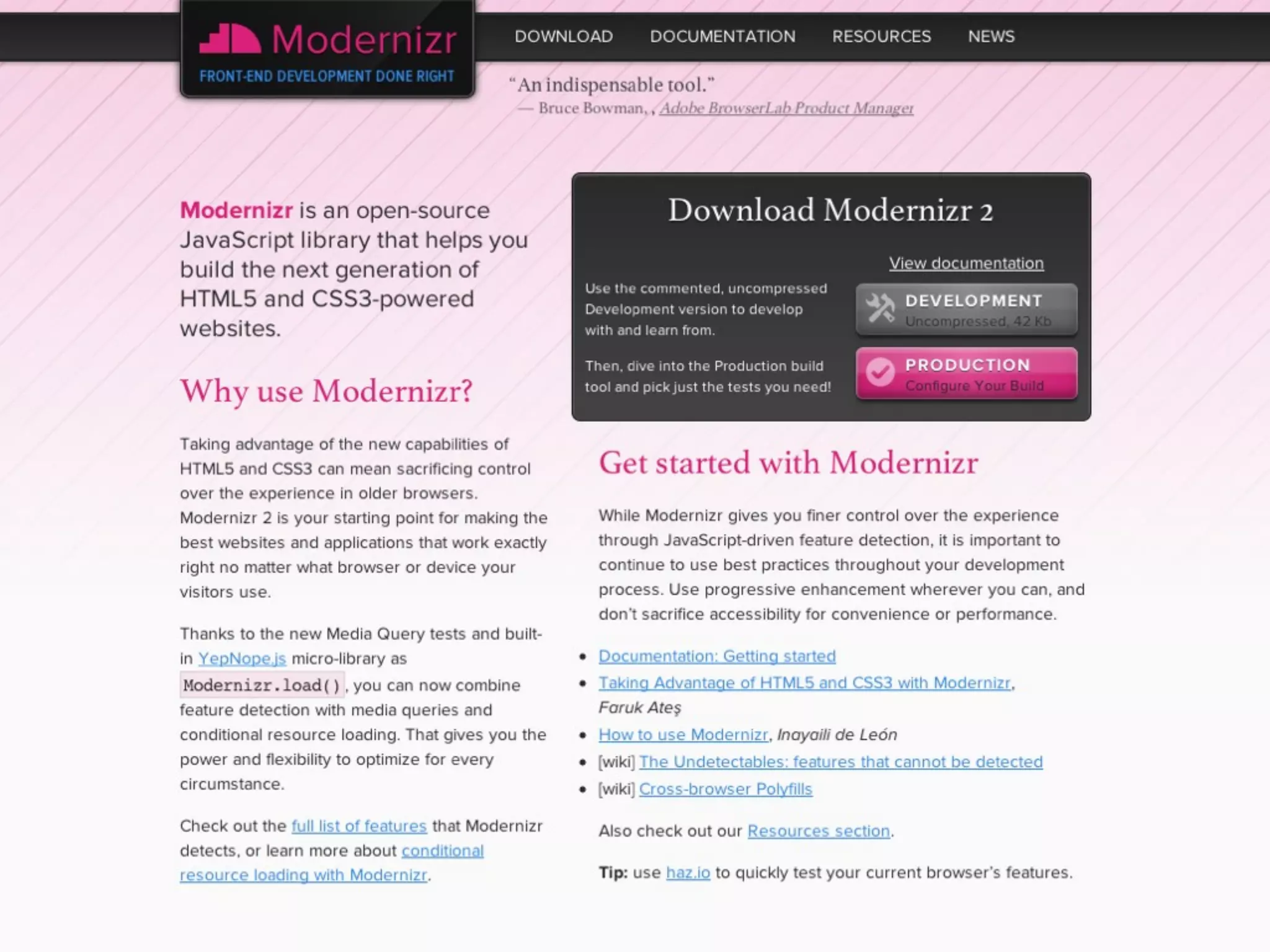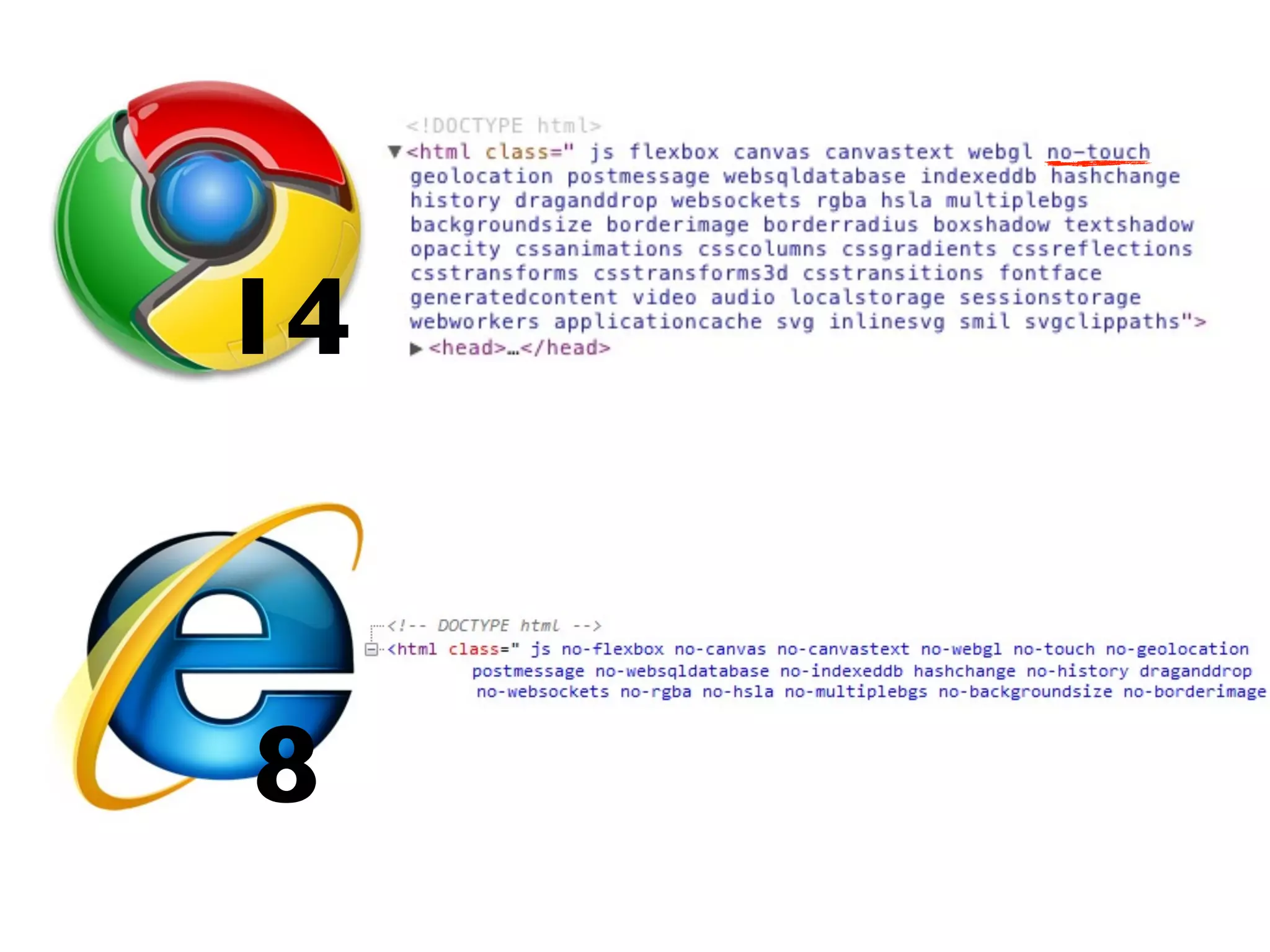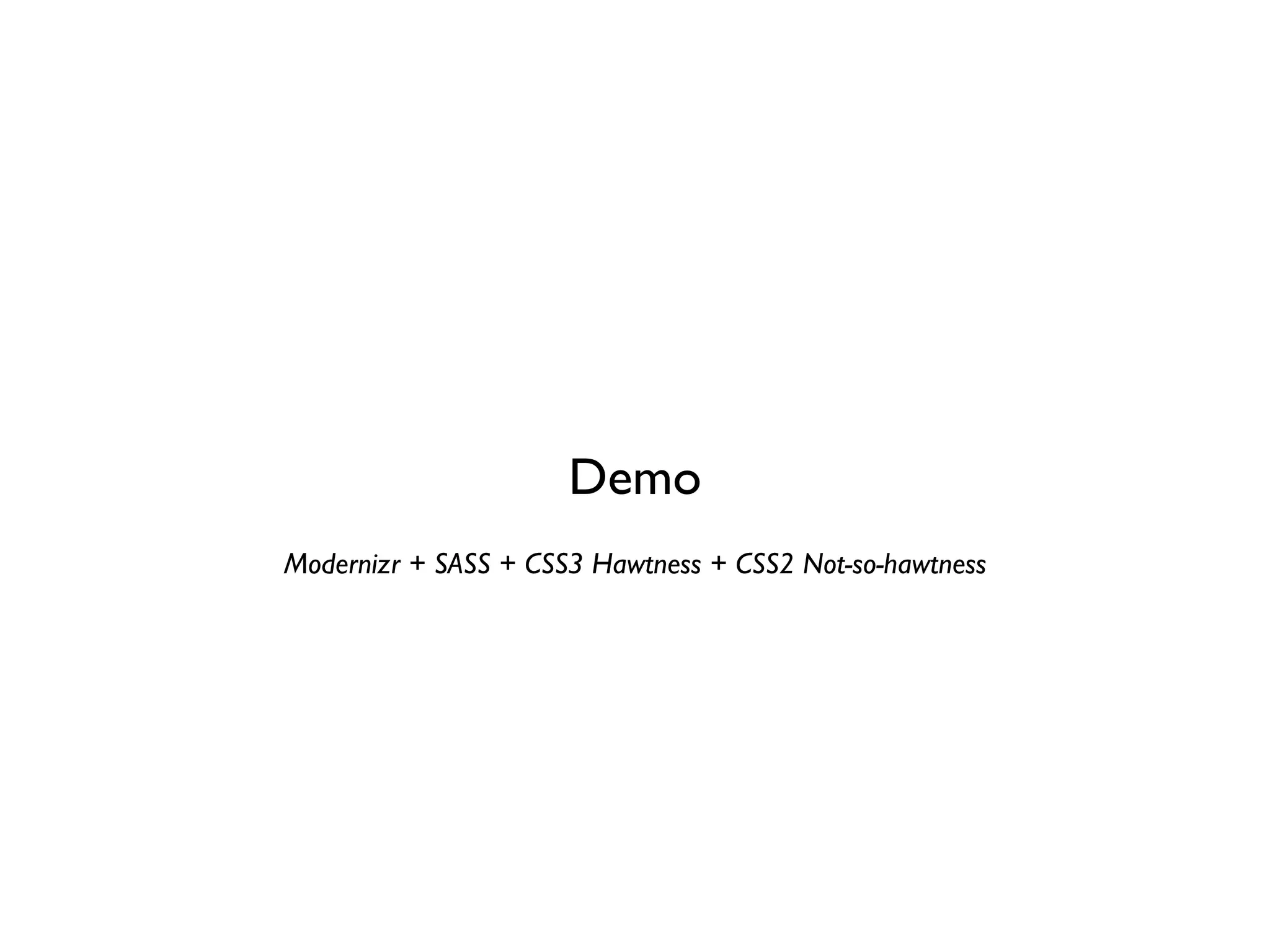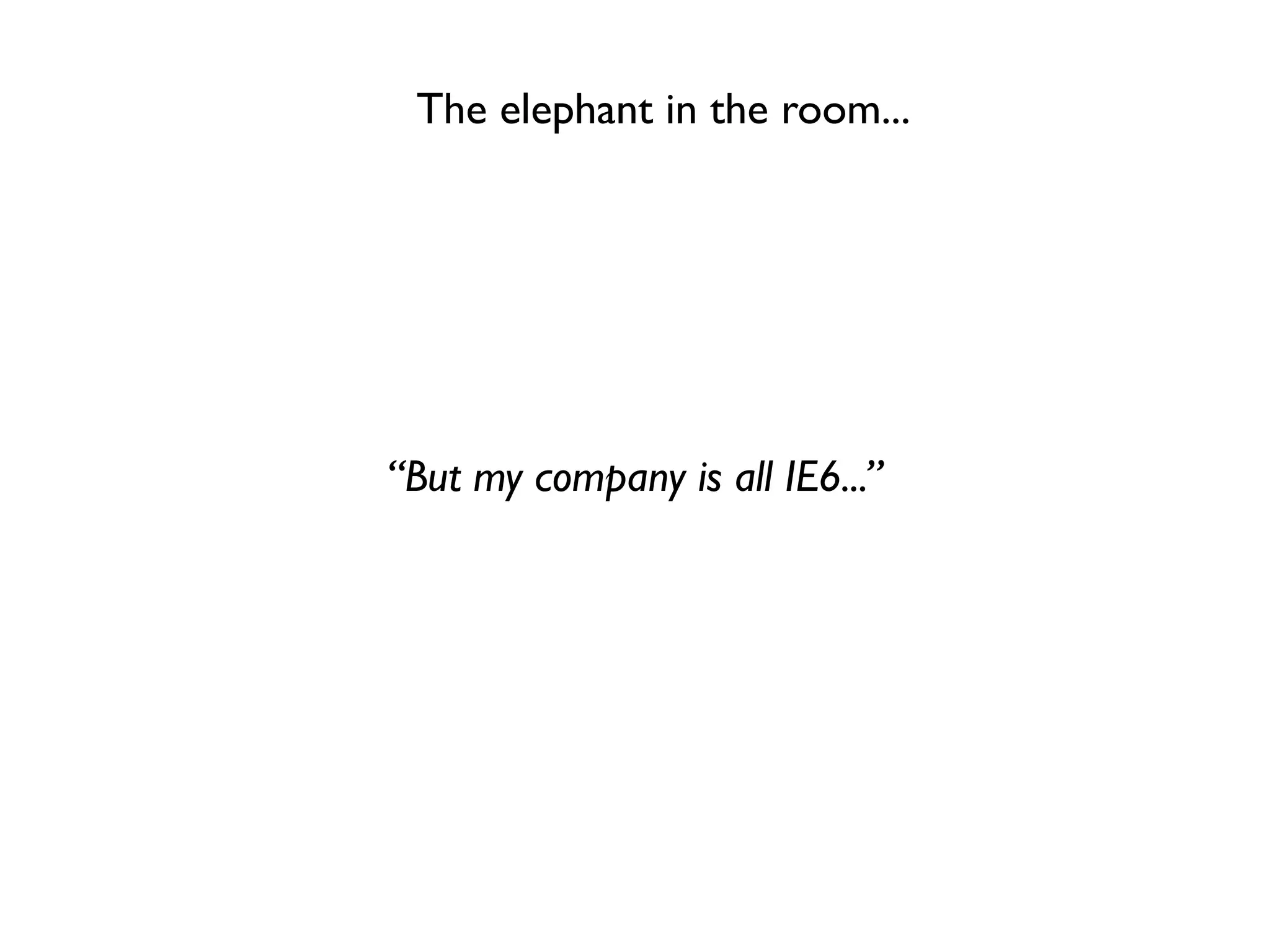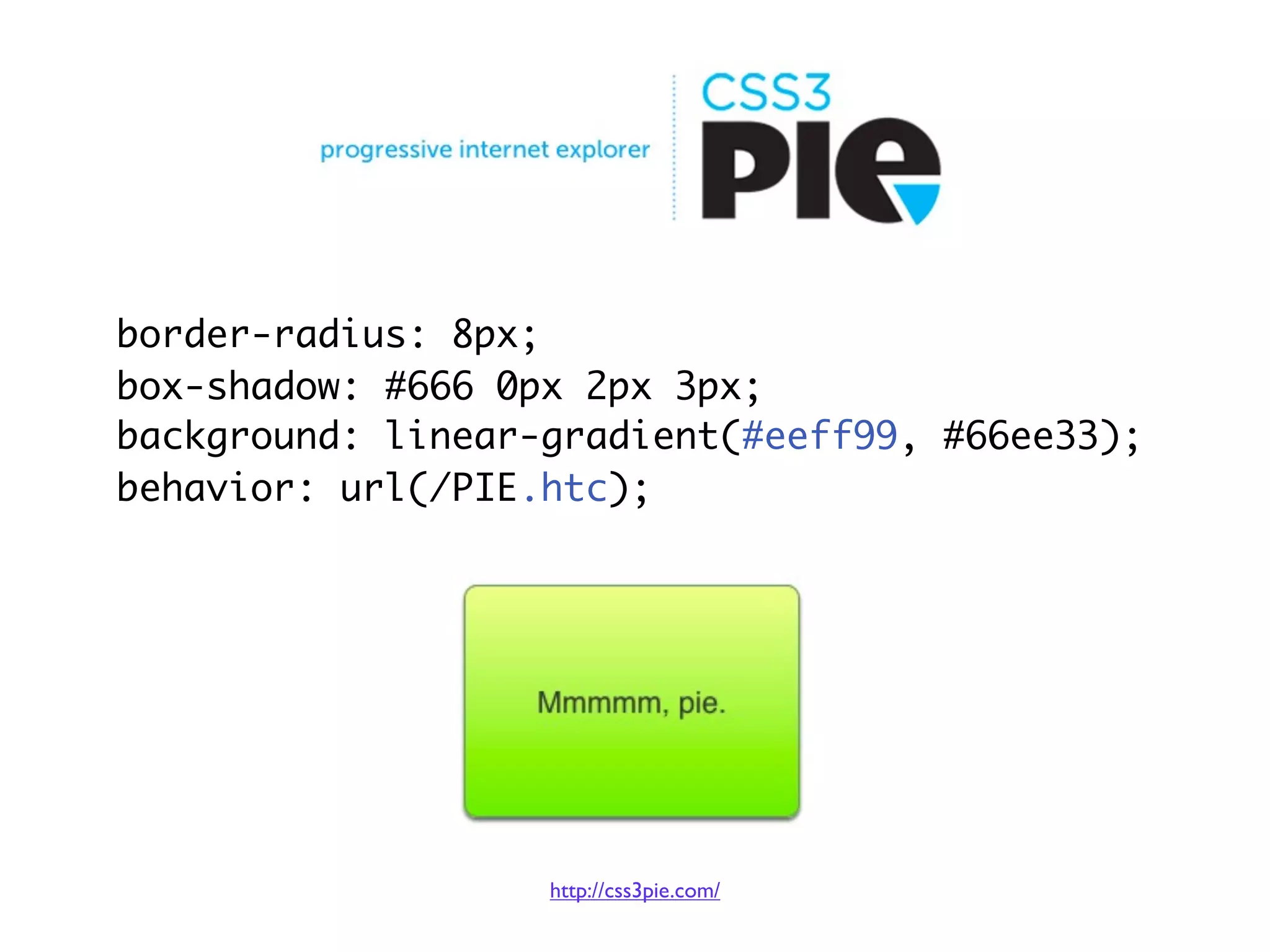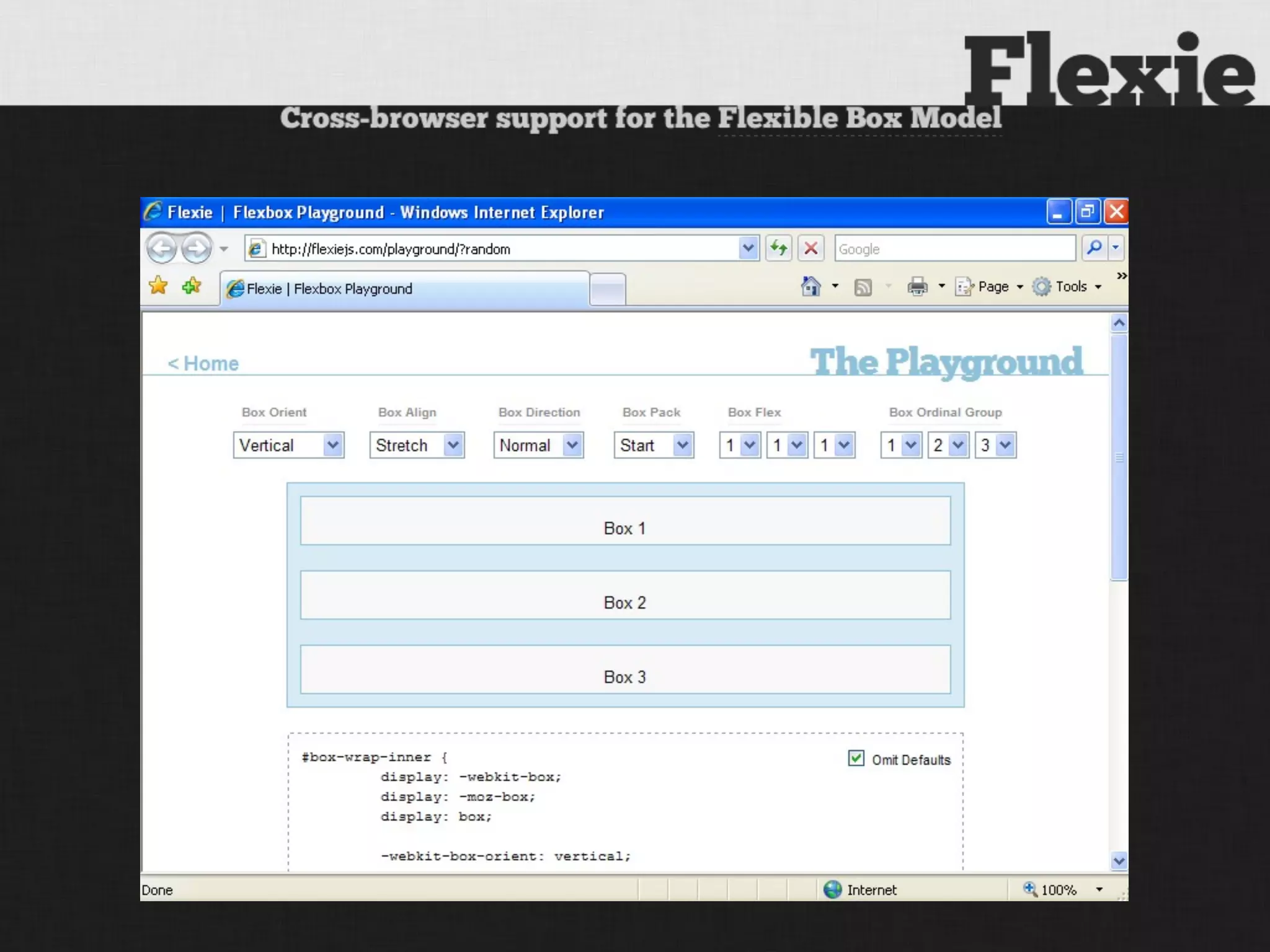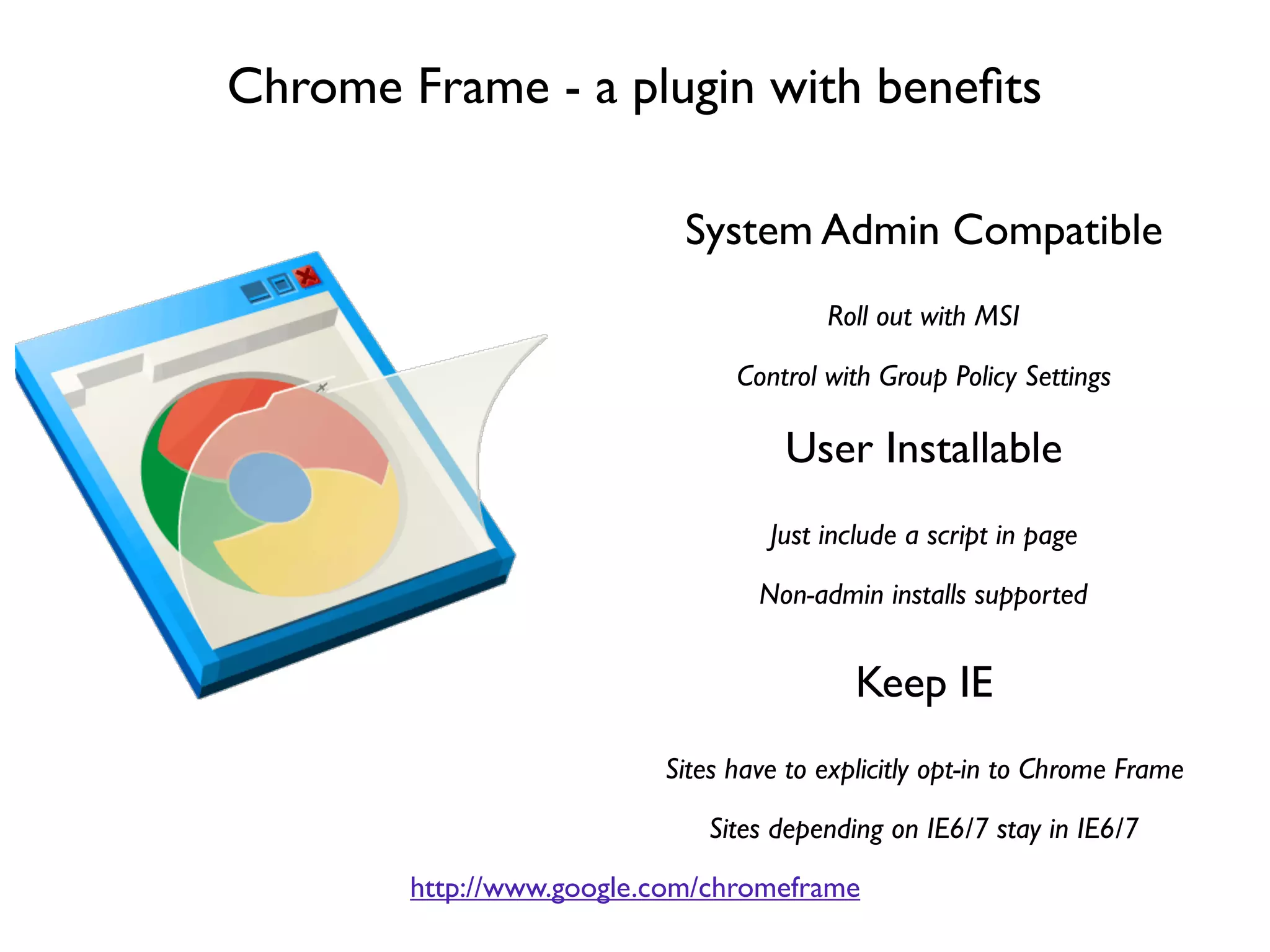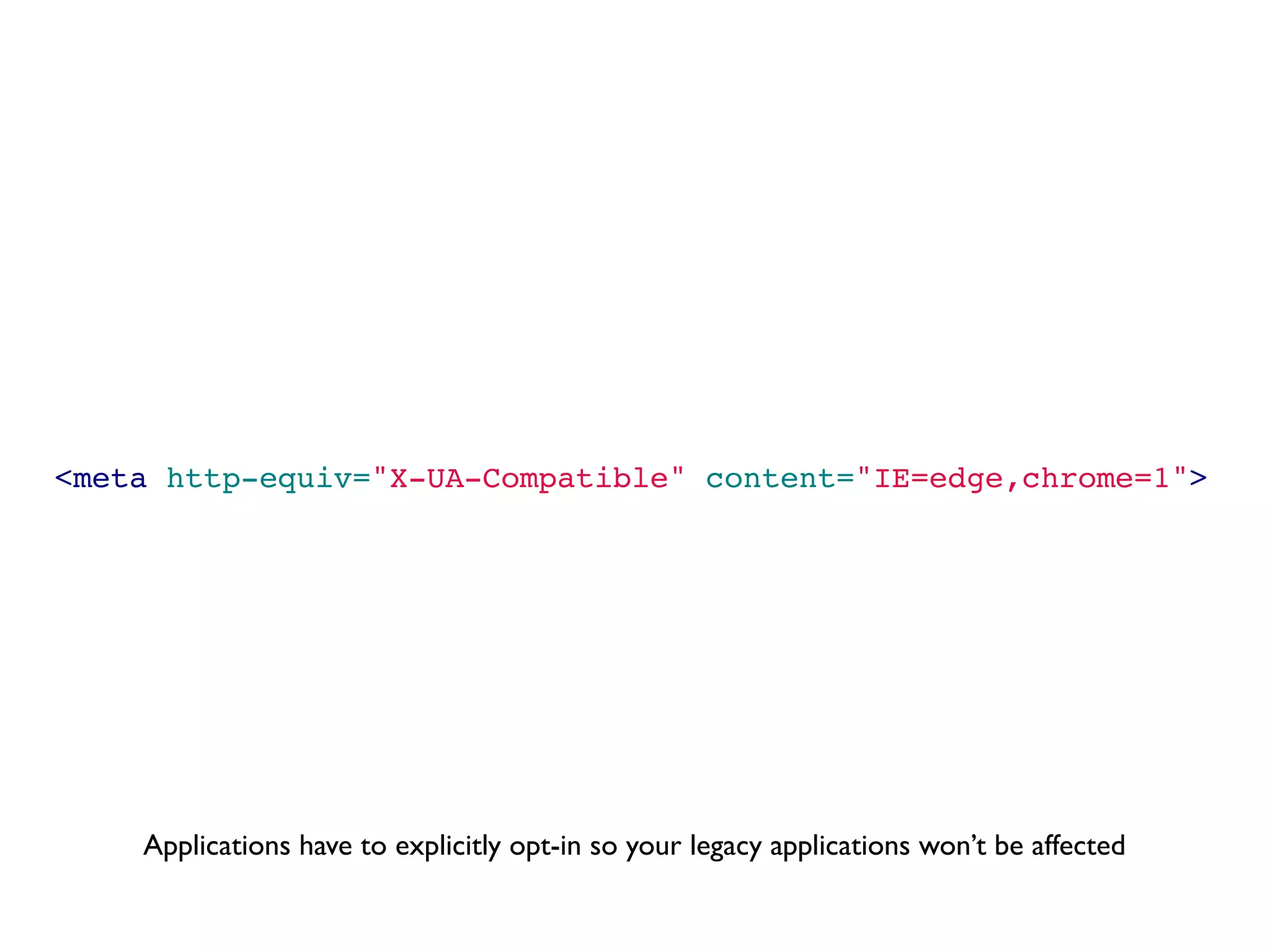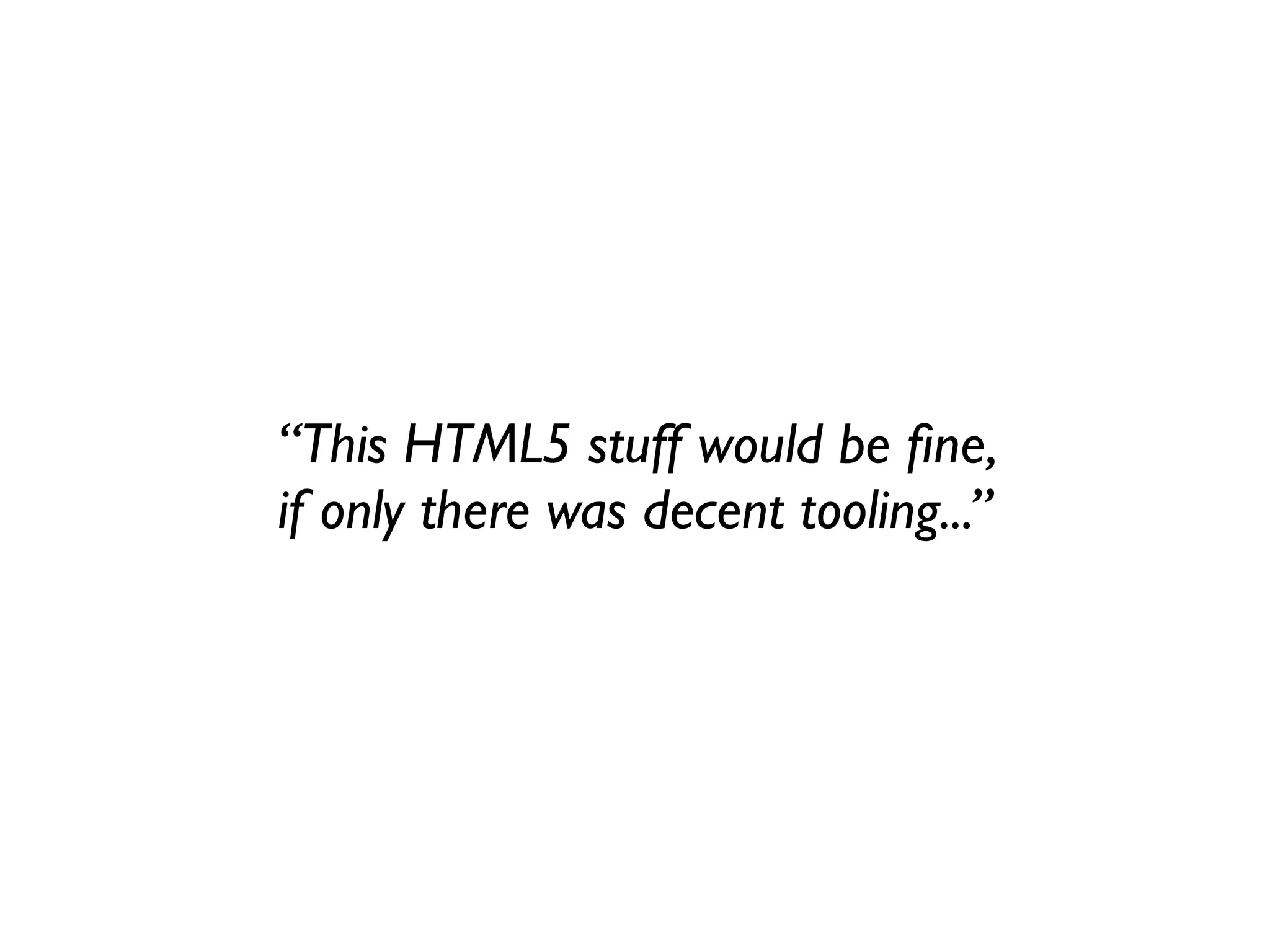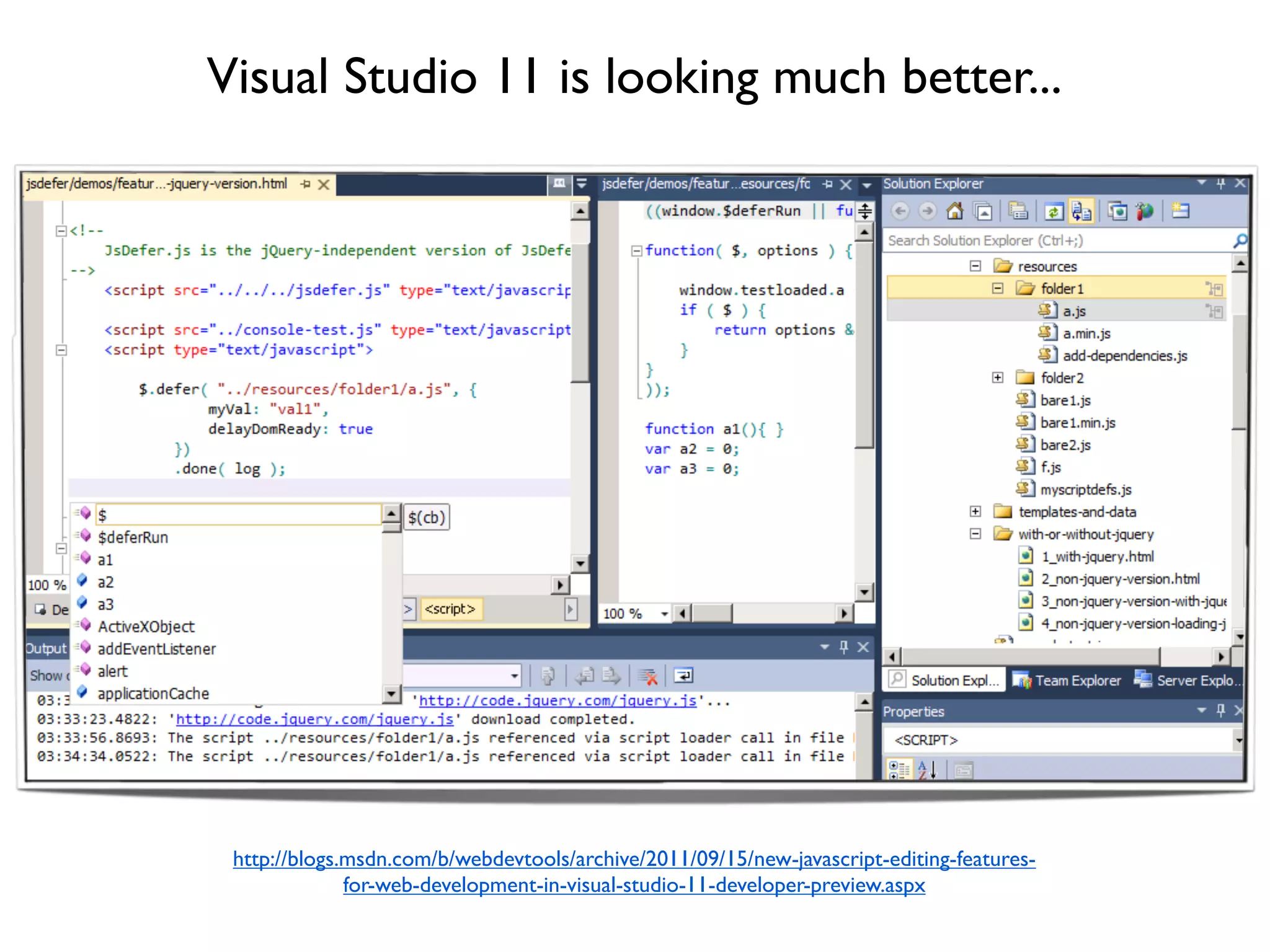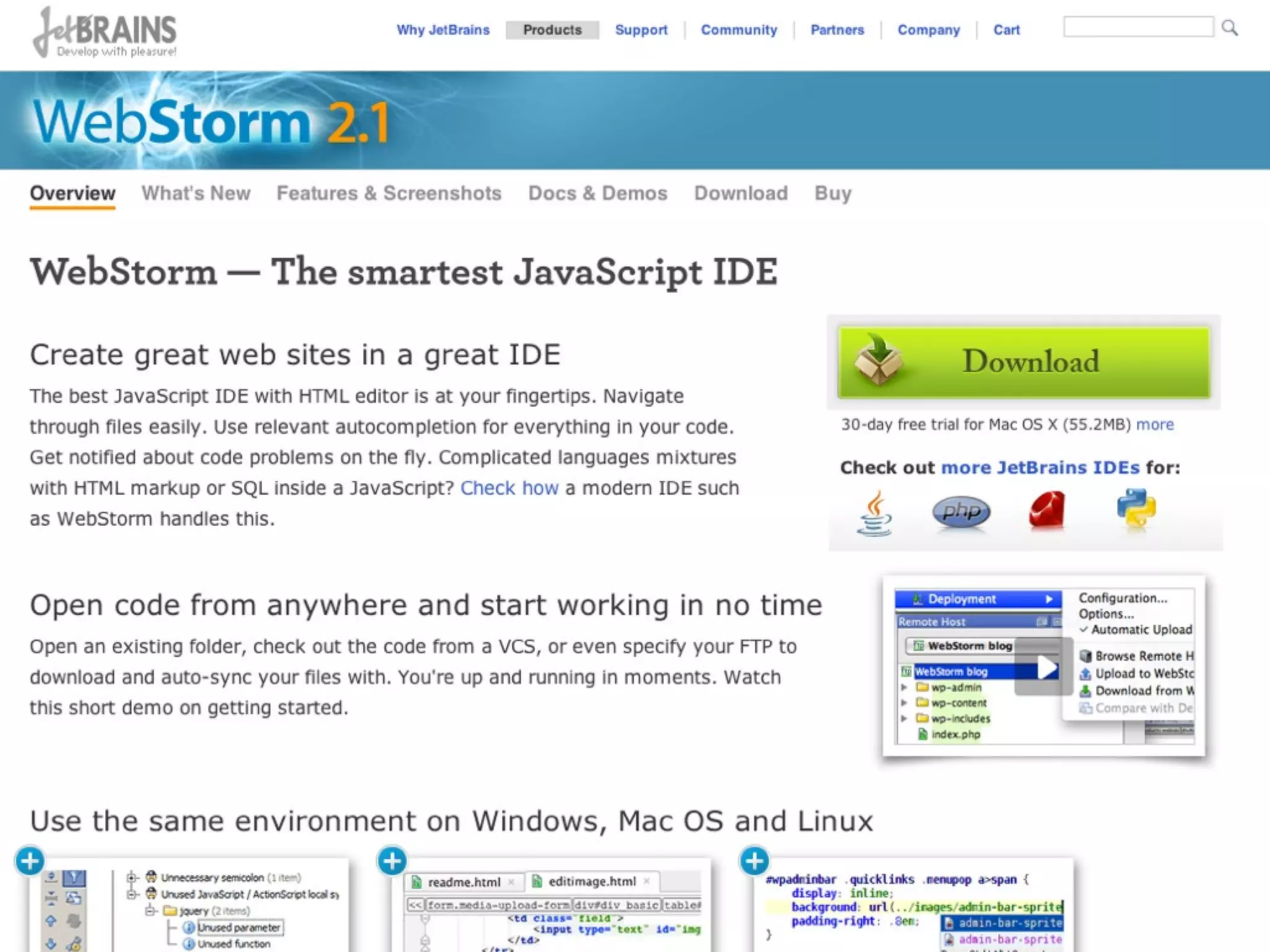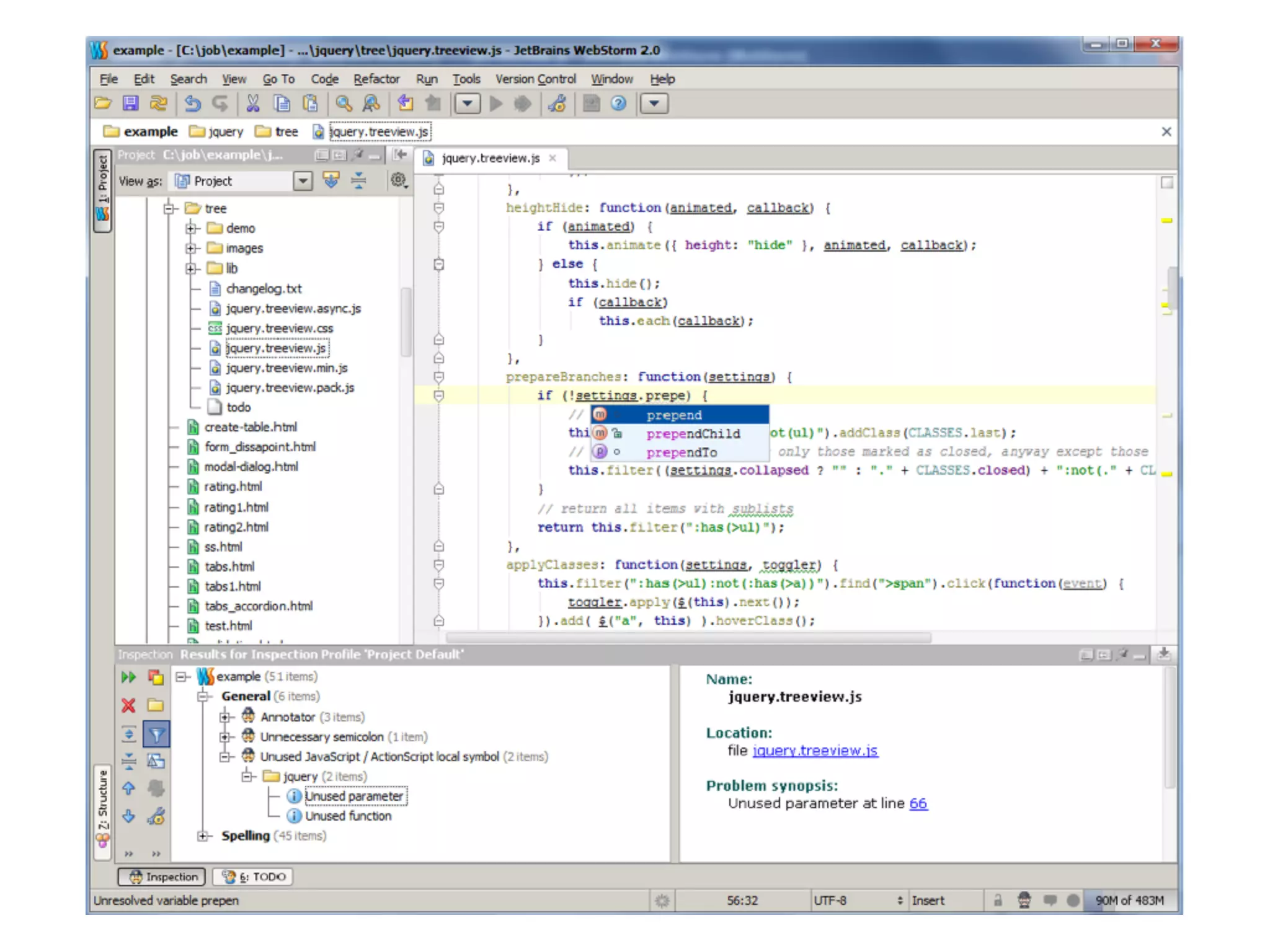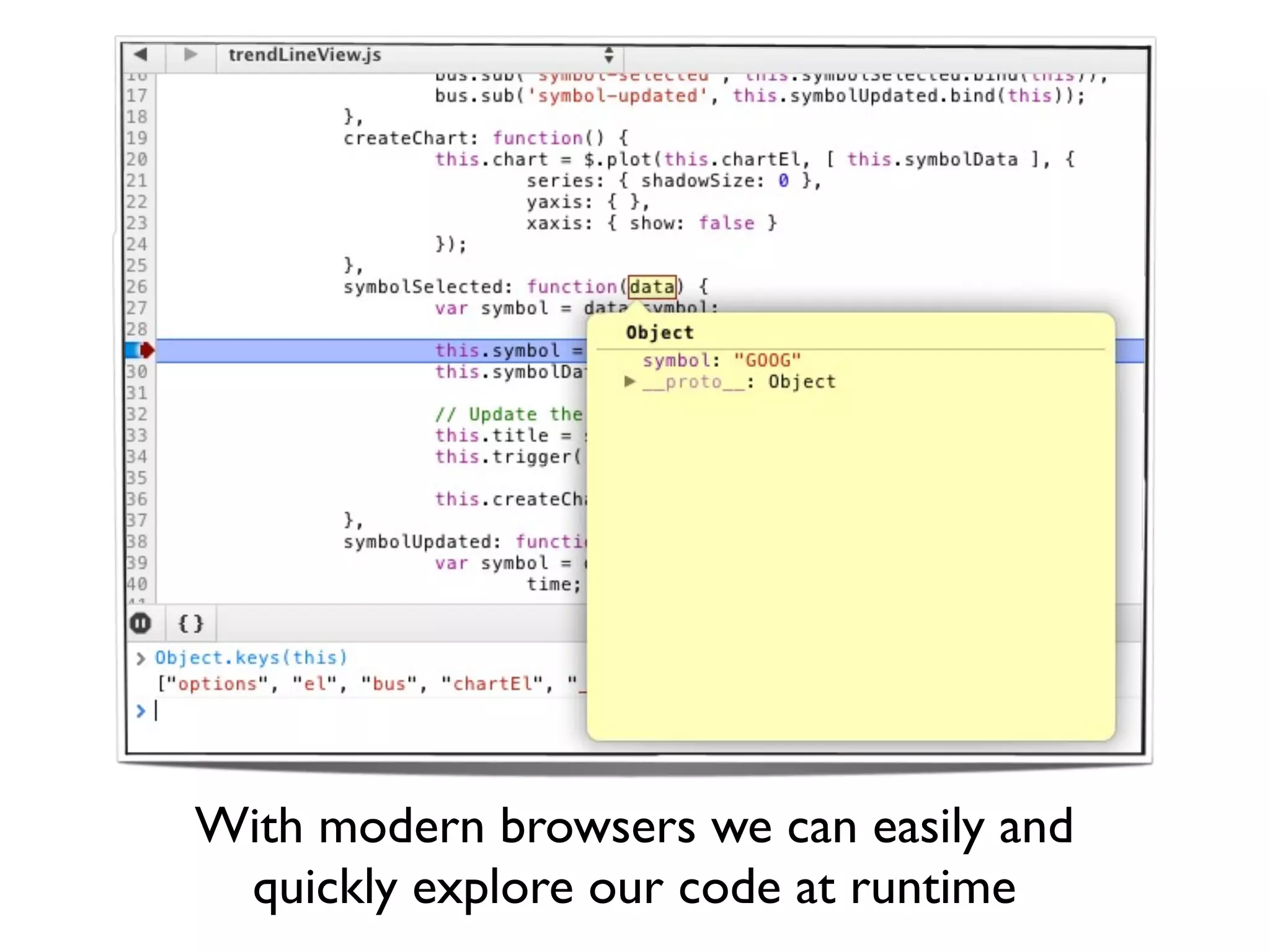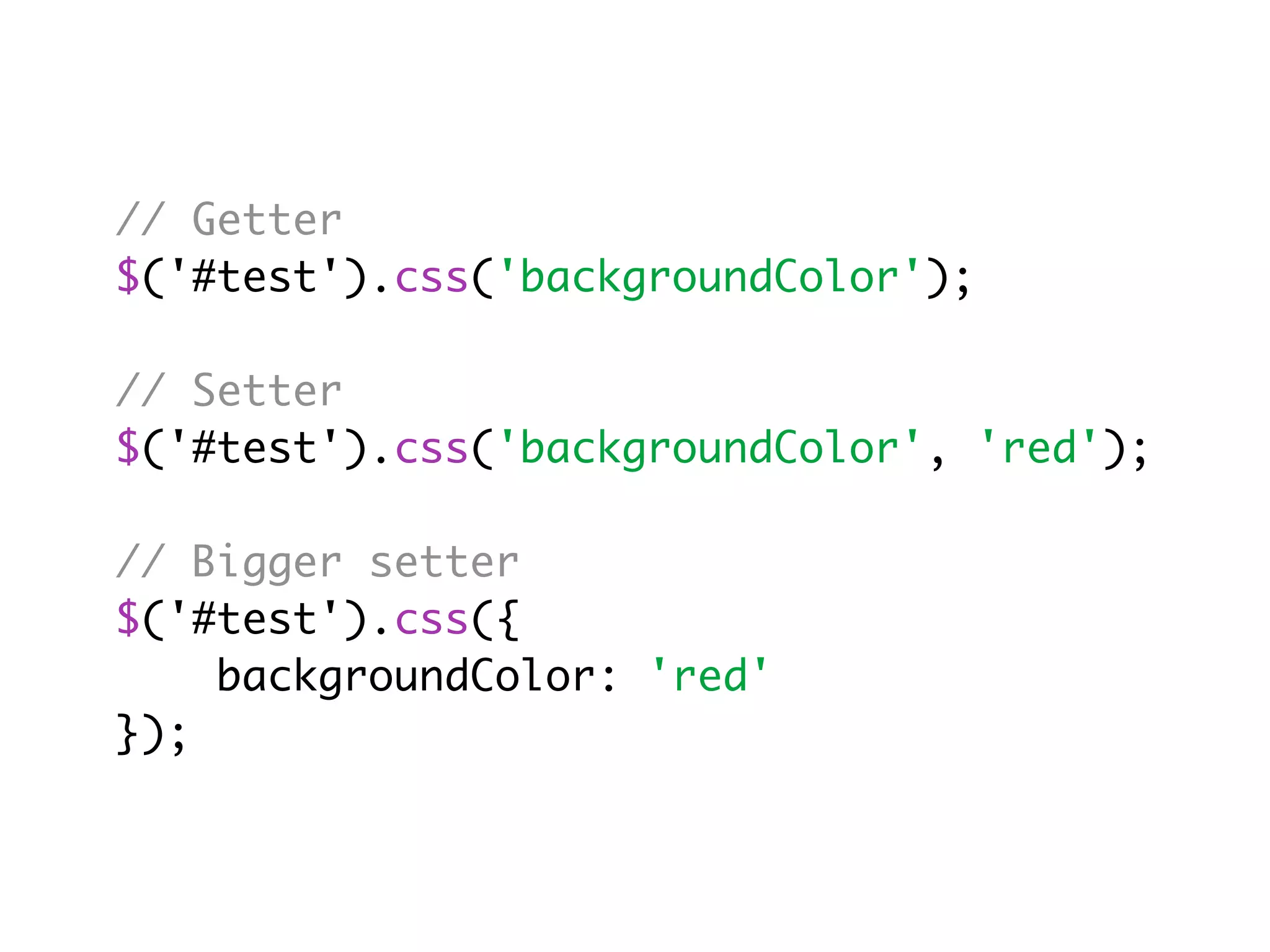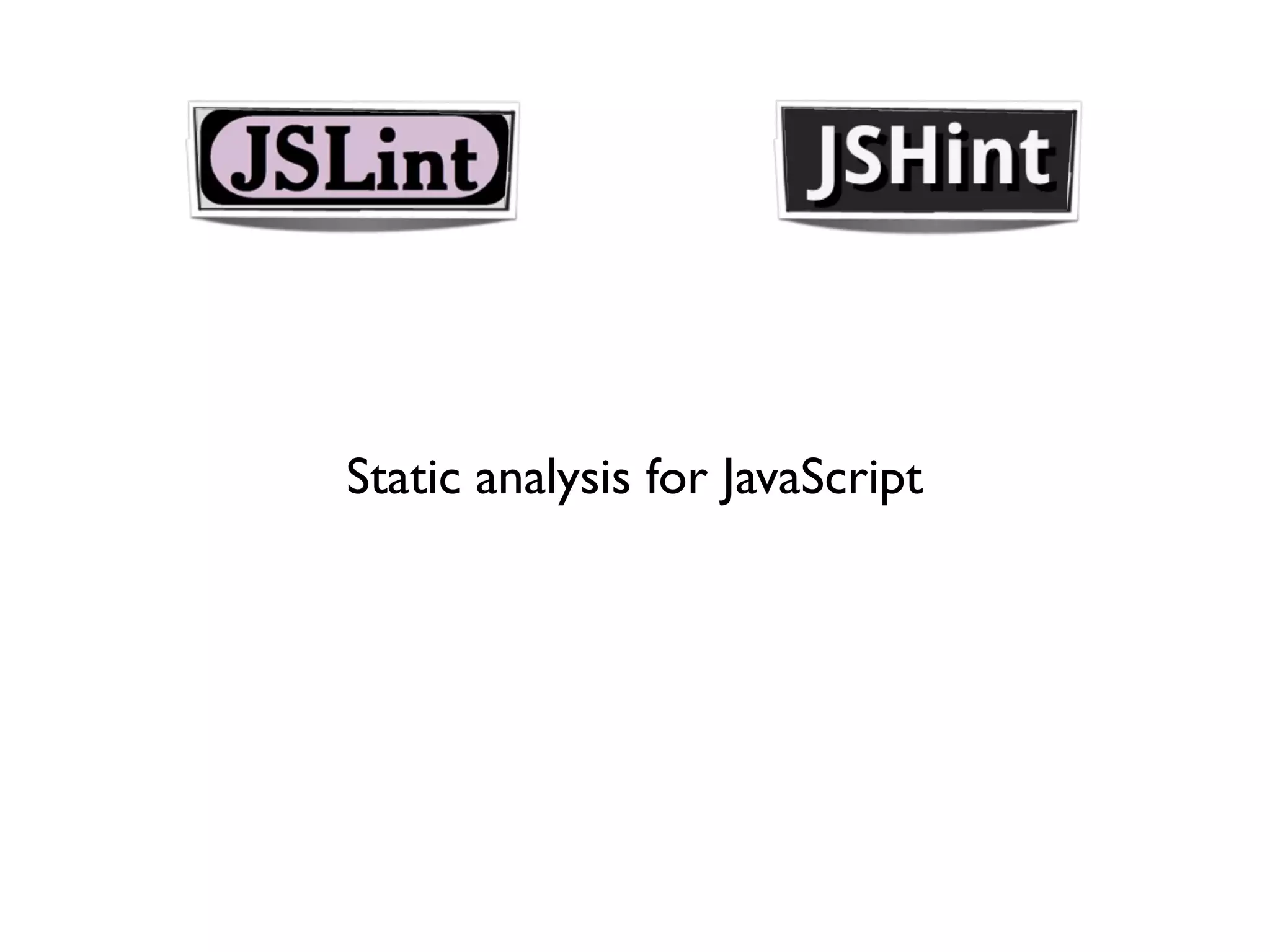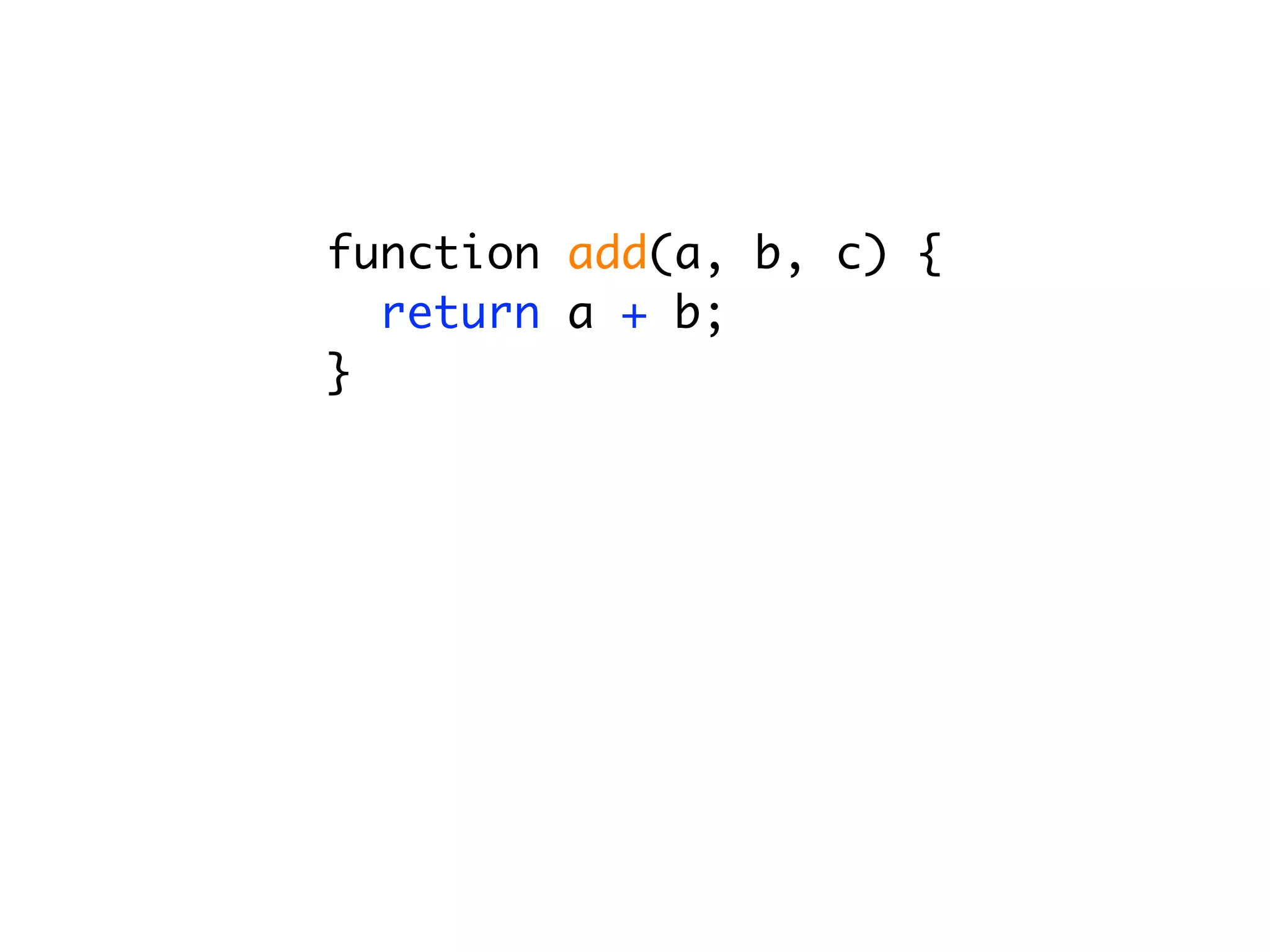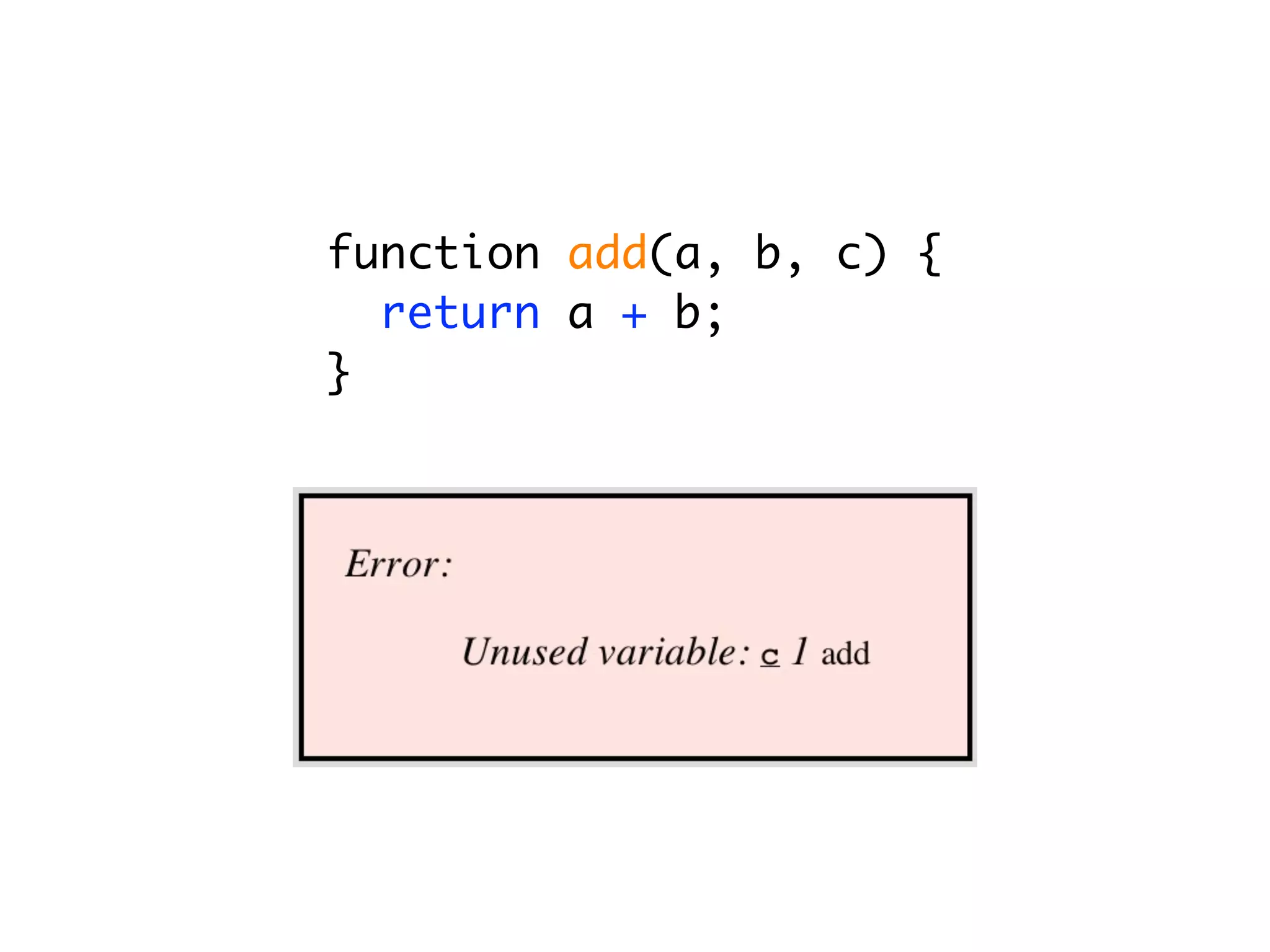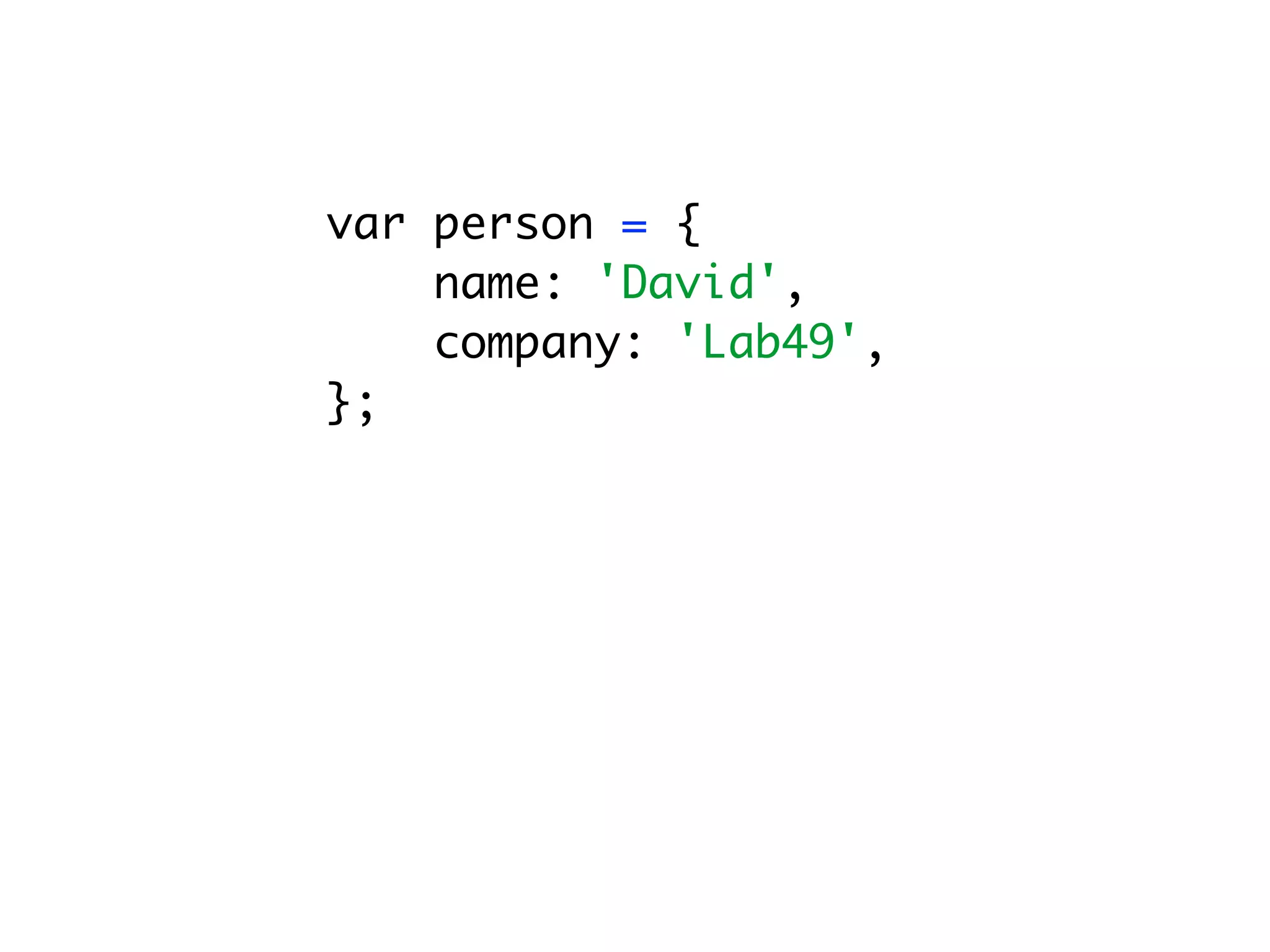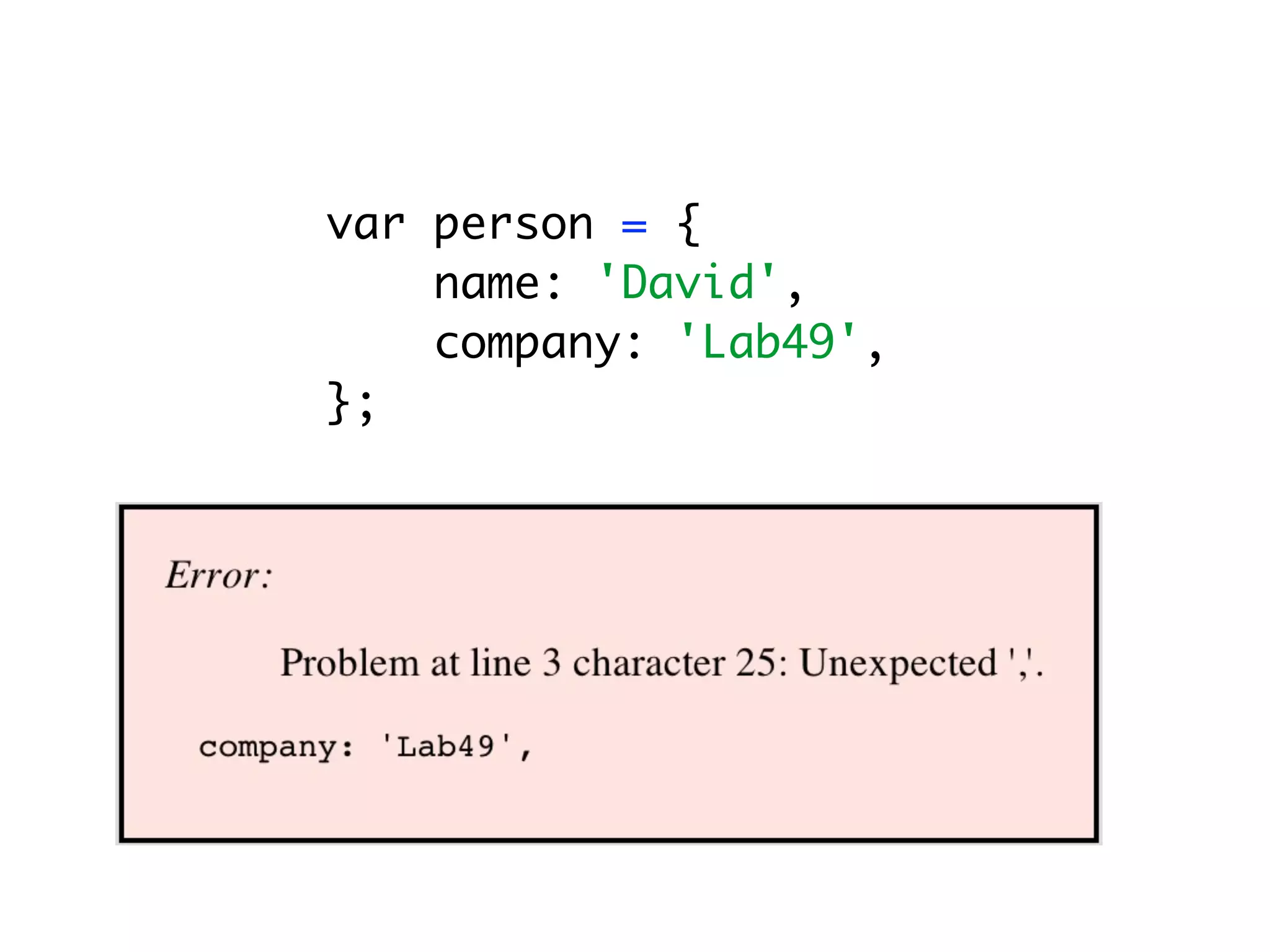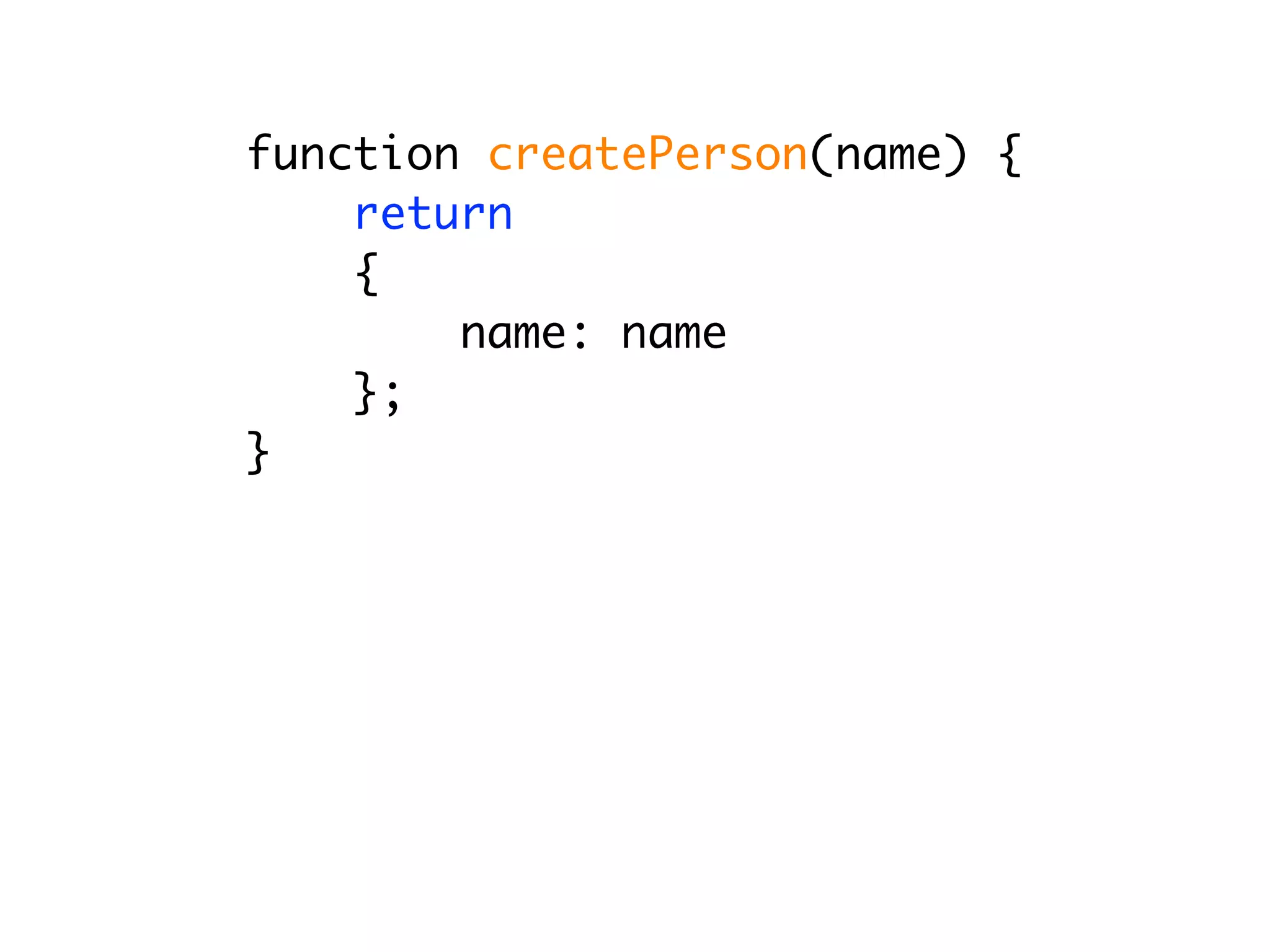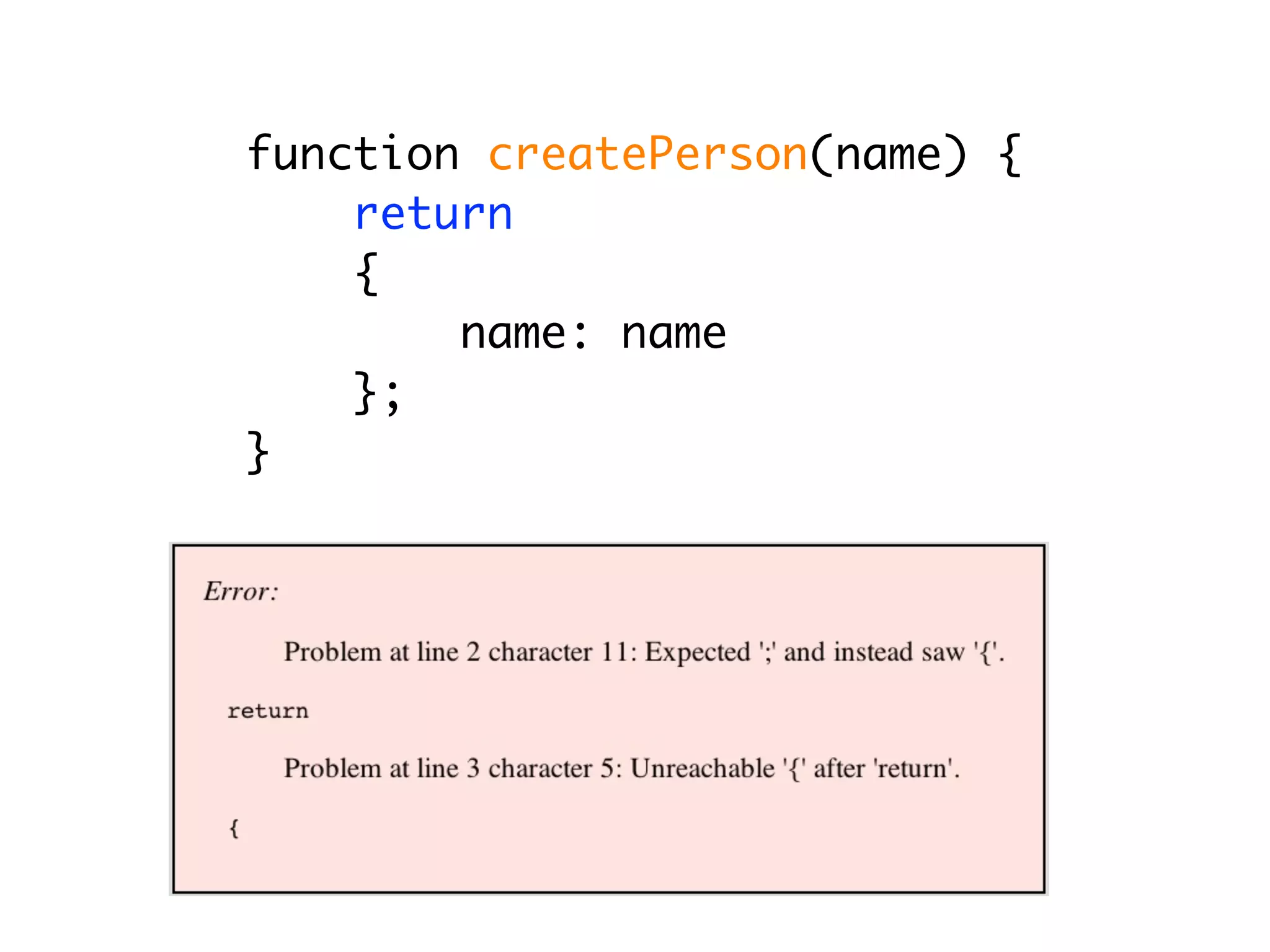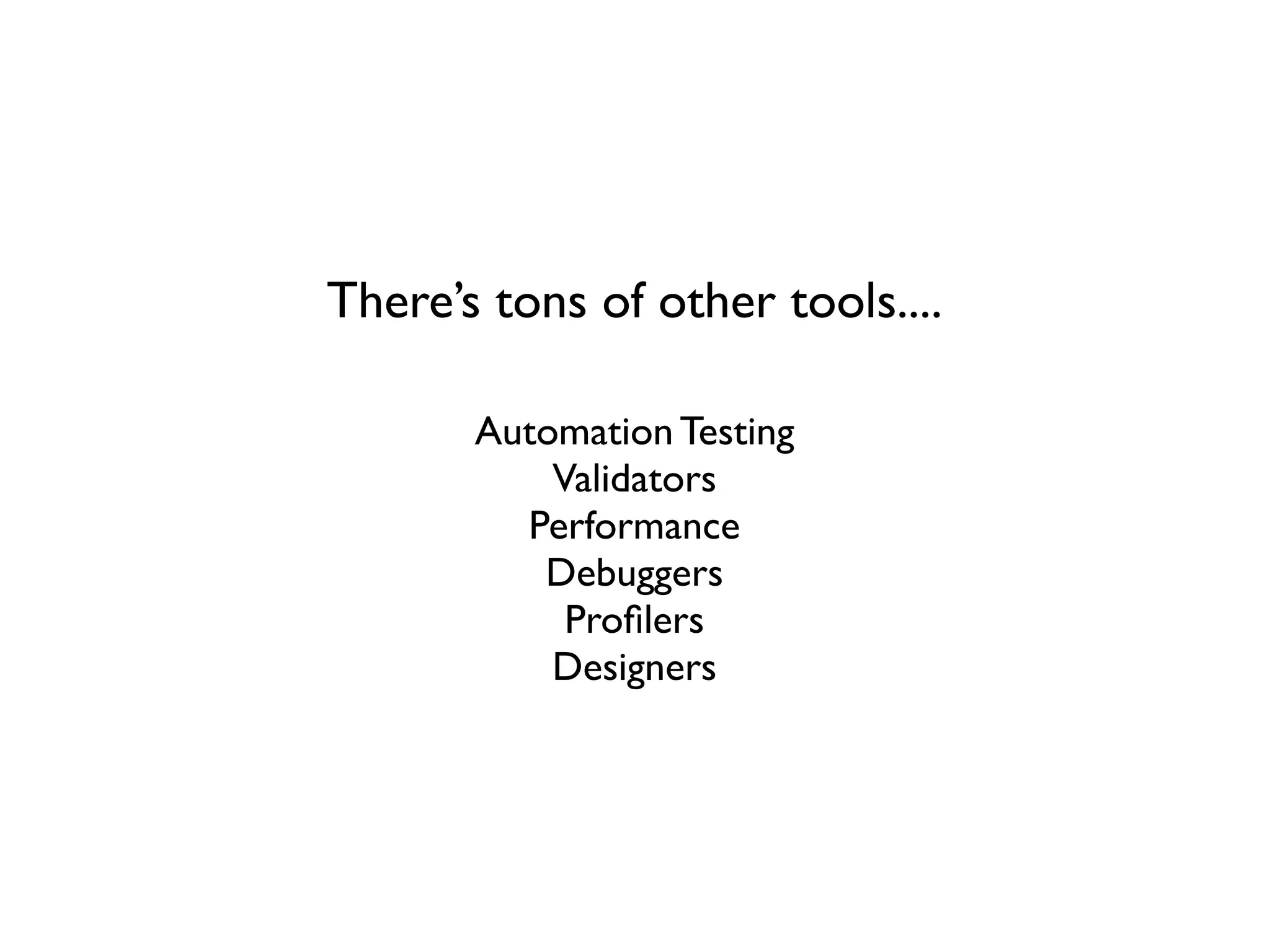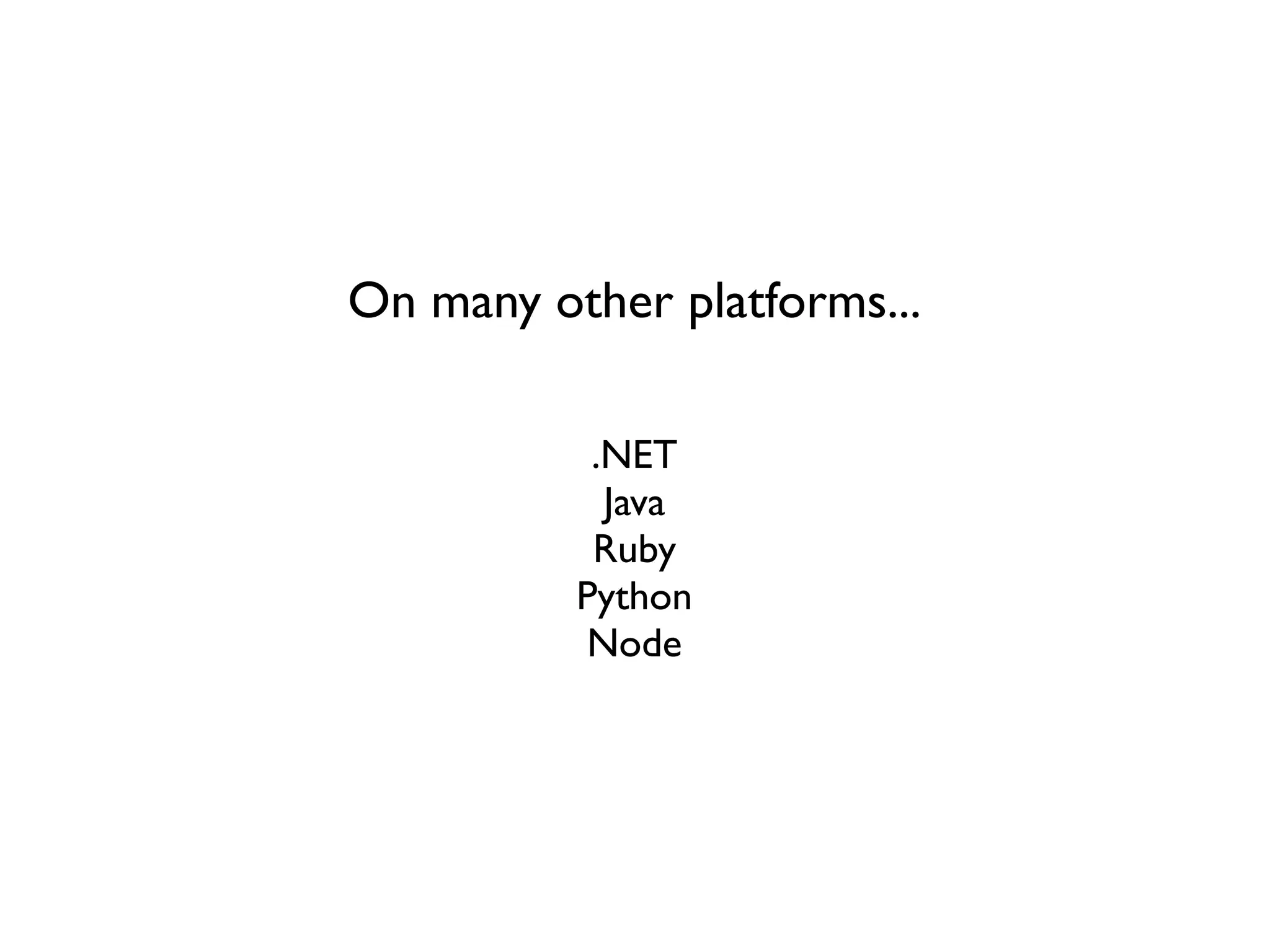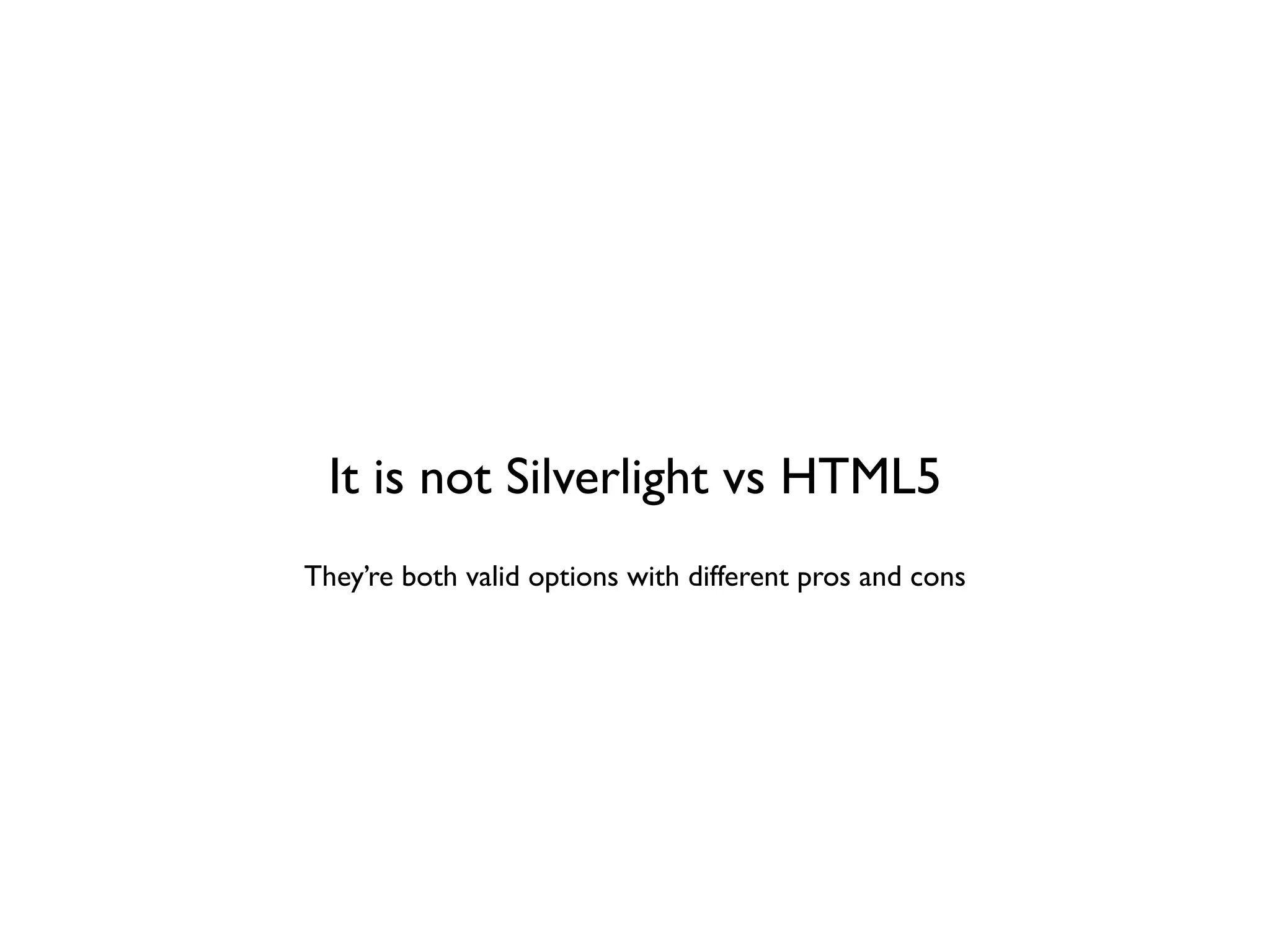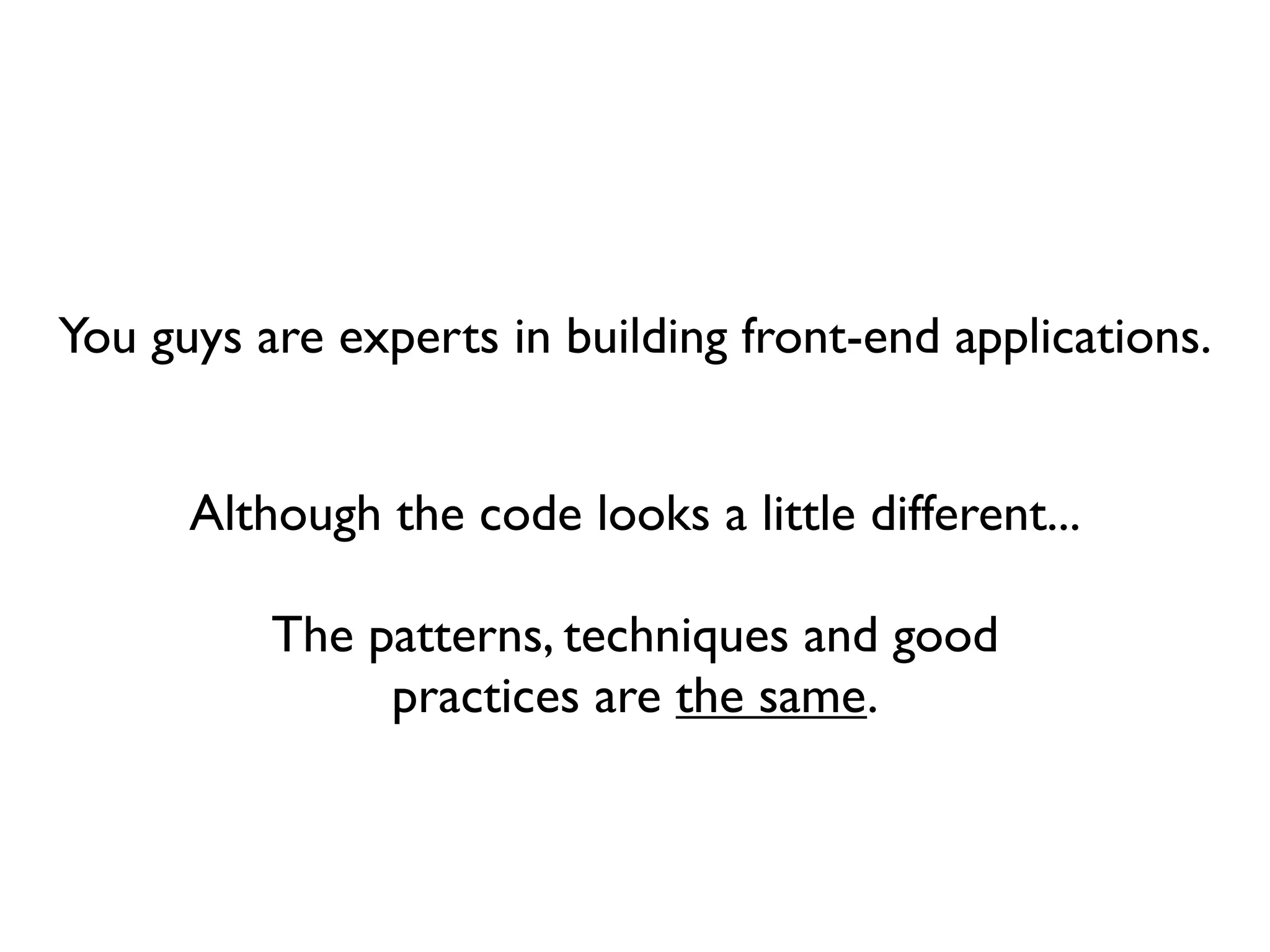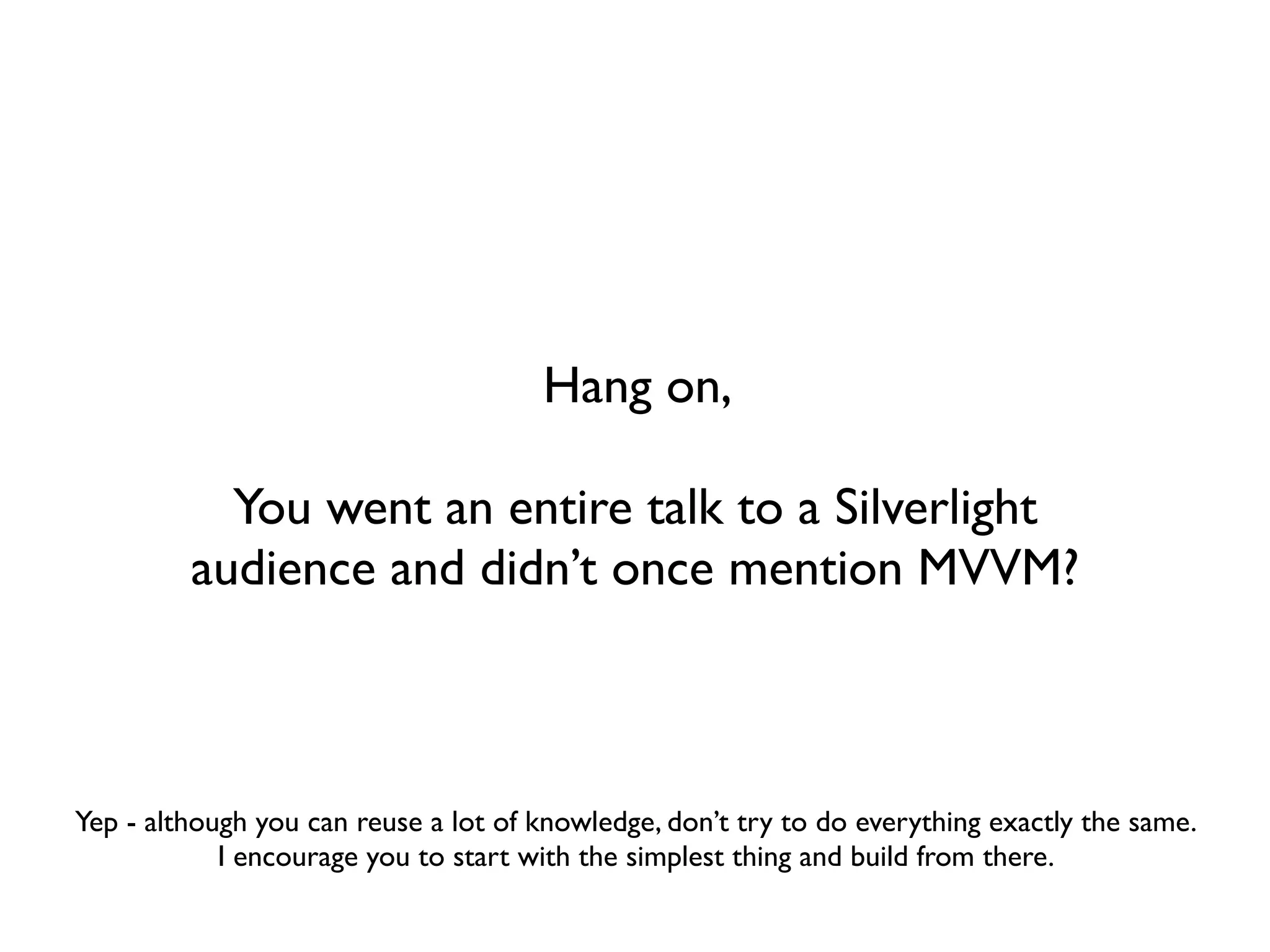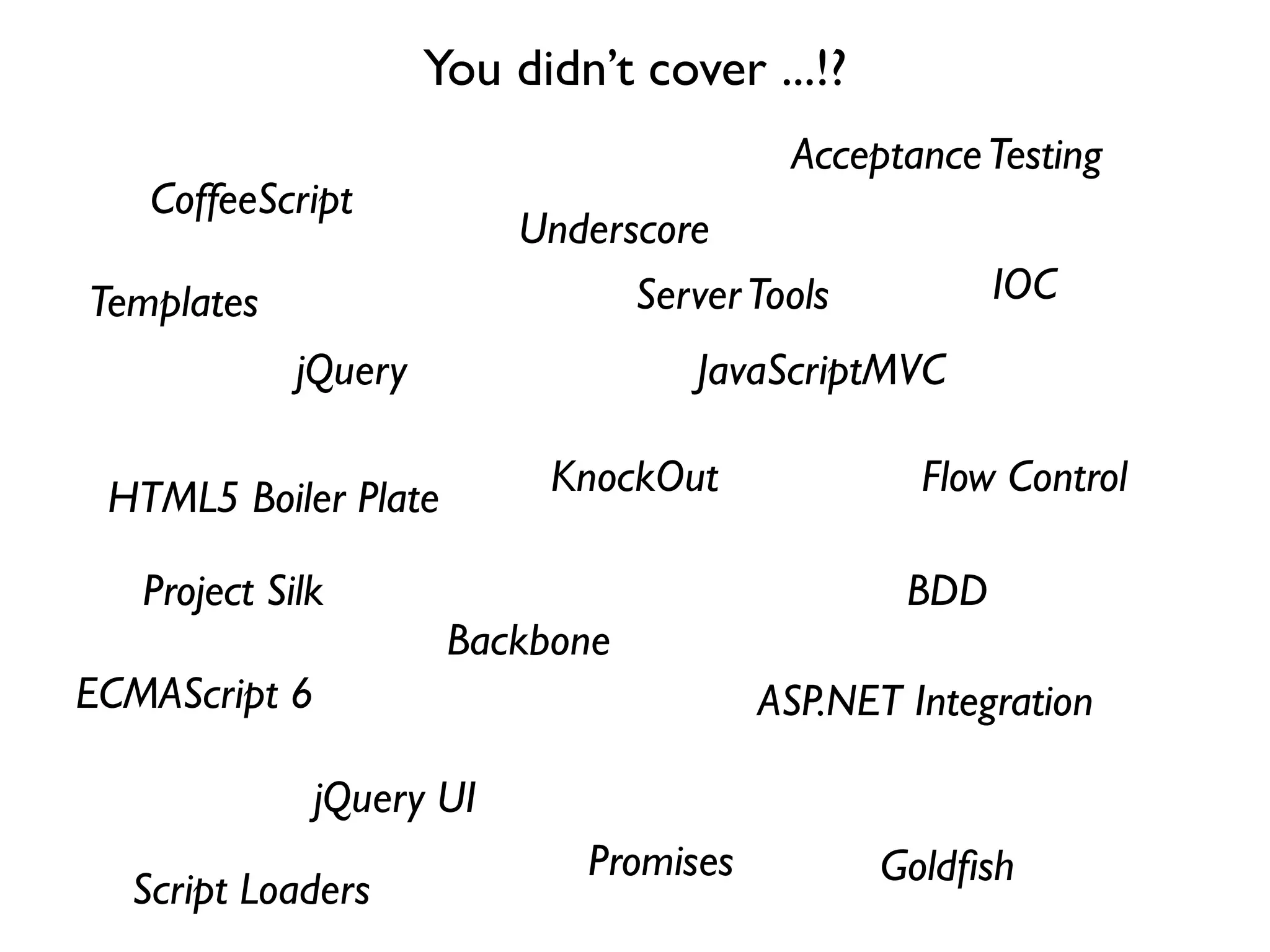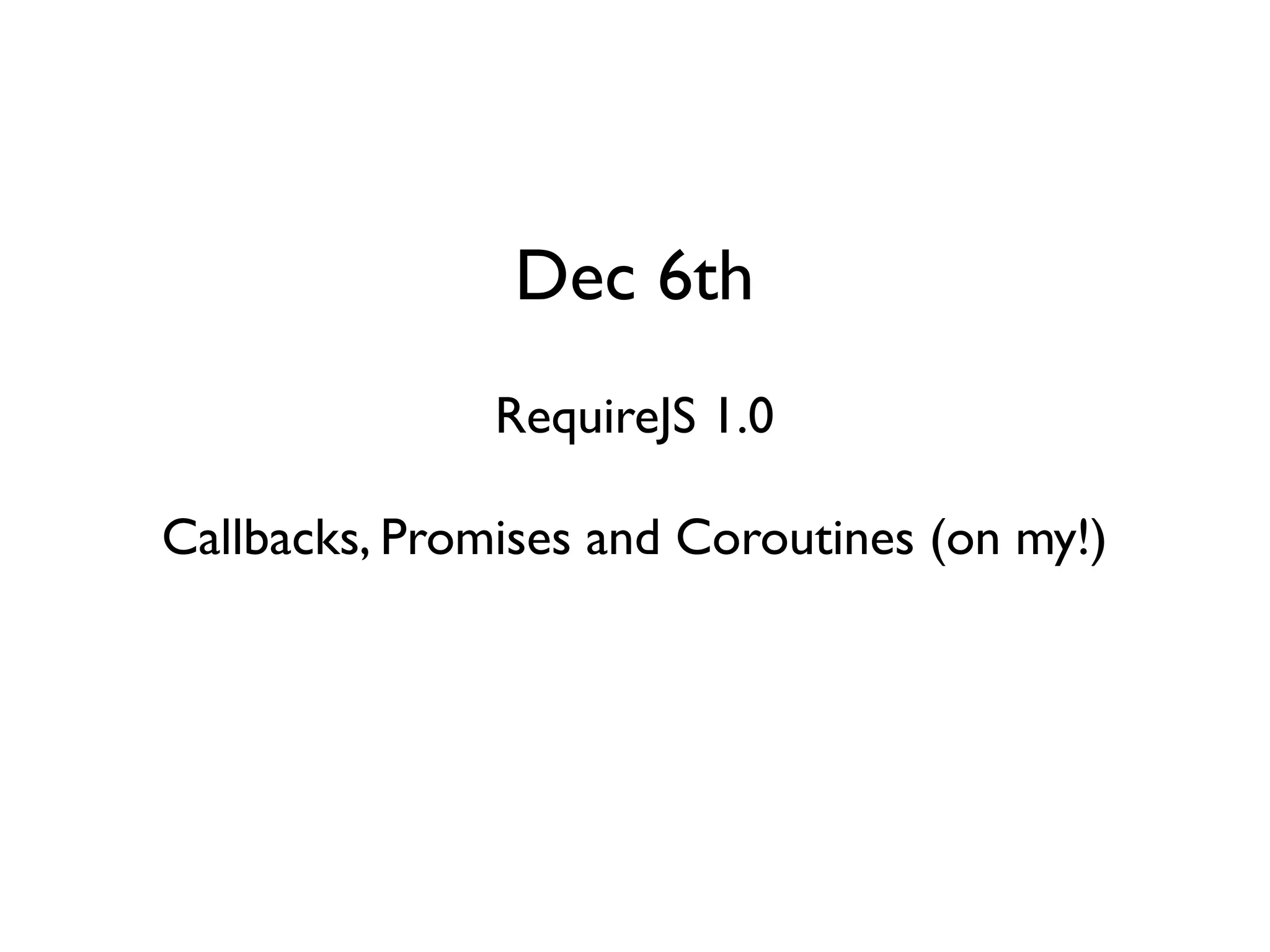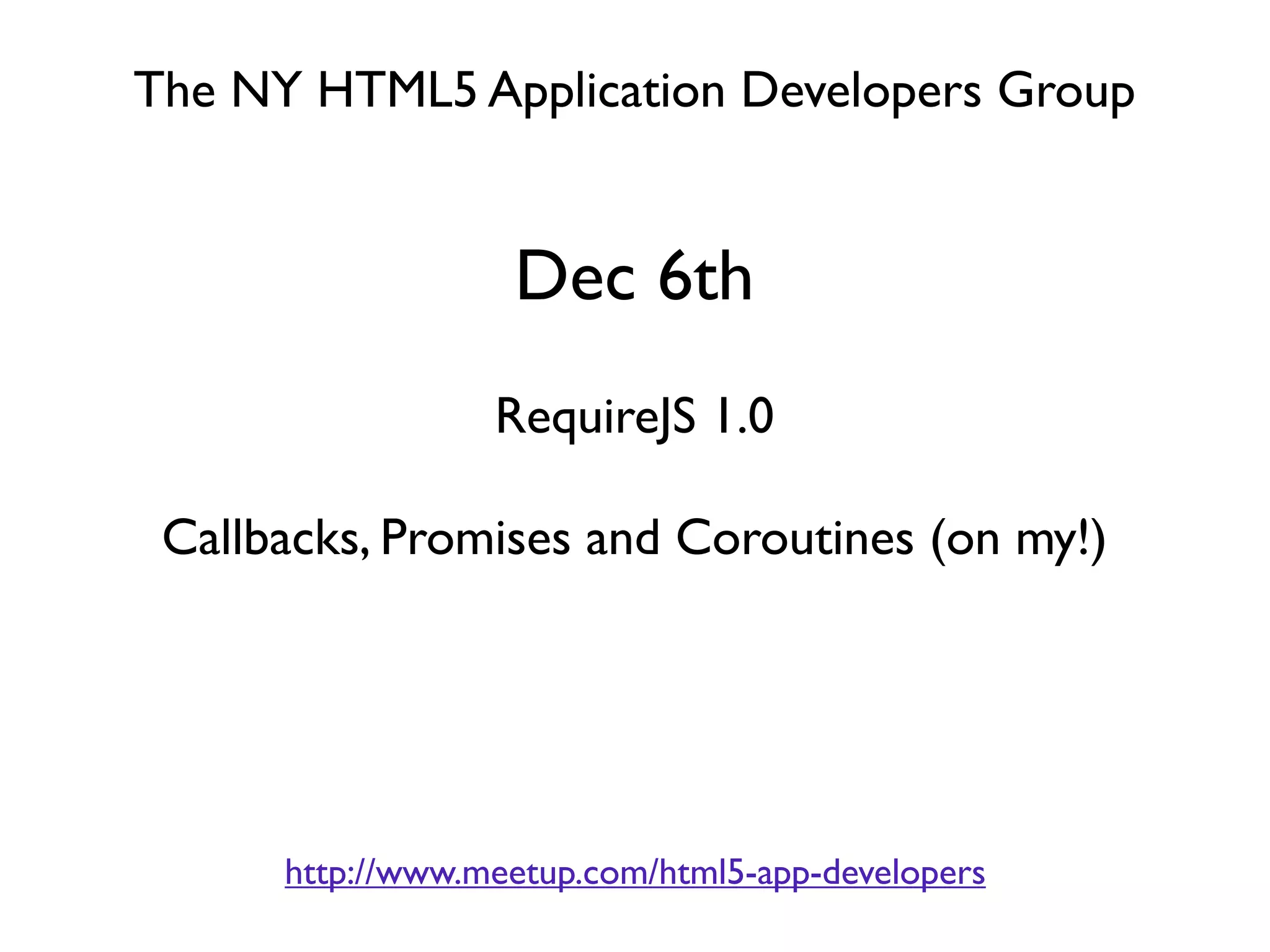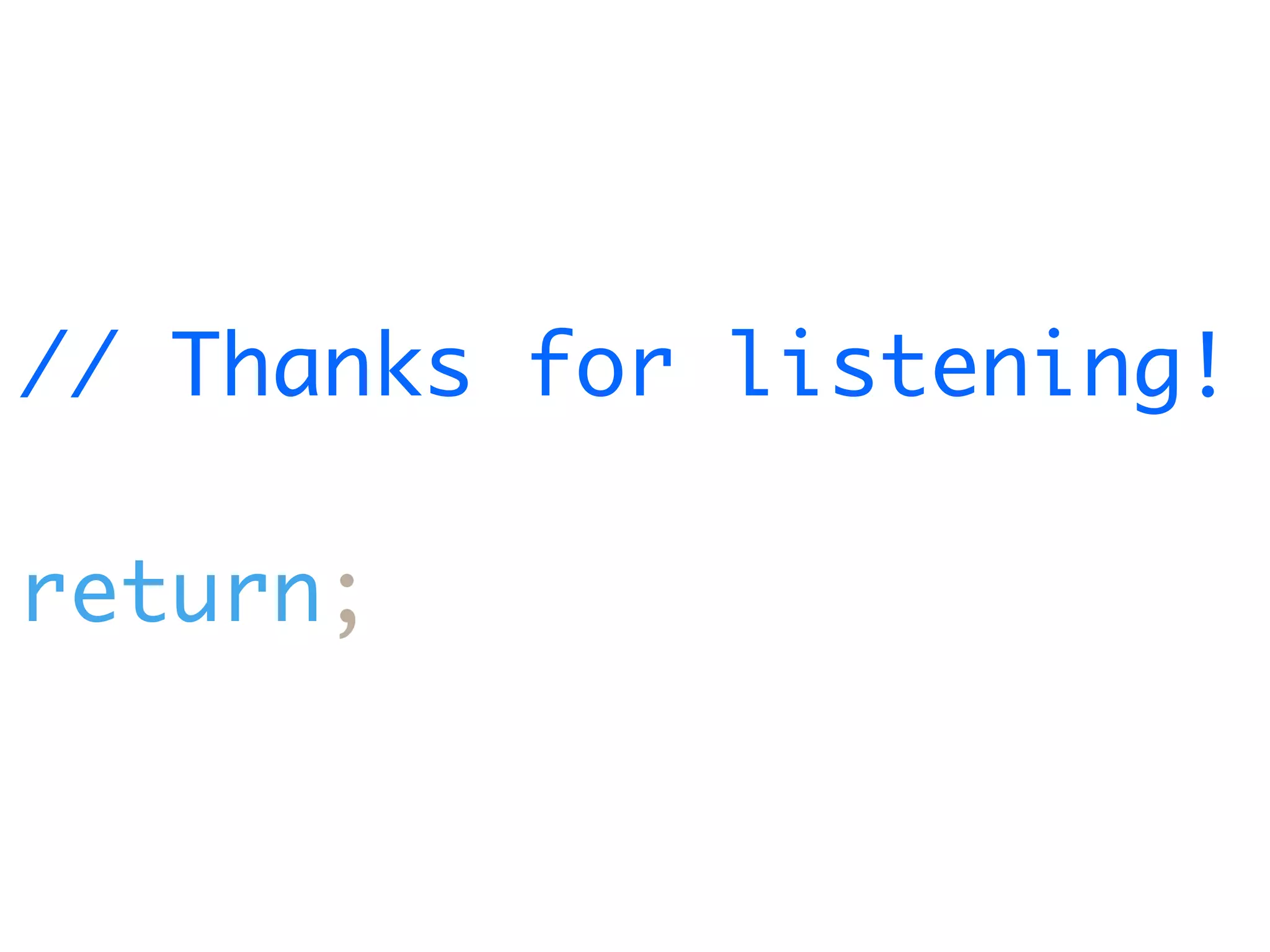The document provides an introduction to developing complex front-end applications using HTML and JavaScript. It discusses how JavaScript modules can be organized in a way that is similar to frameworks like WPF and Silverlight using simple constructs like the module pattern. It also covers asynchronous module definition (AMD) and how modules can be loaded and dependencies managed using RequireJS. The document demonstrates unit testing jQuery code and using pubsub for loose coupling between modules. Finally, it discusses how CSS compilers like SASS can make CSS authoring more productive by allowing variables, nesting and mixins.
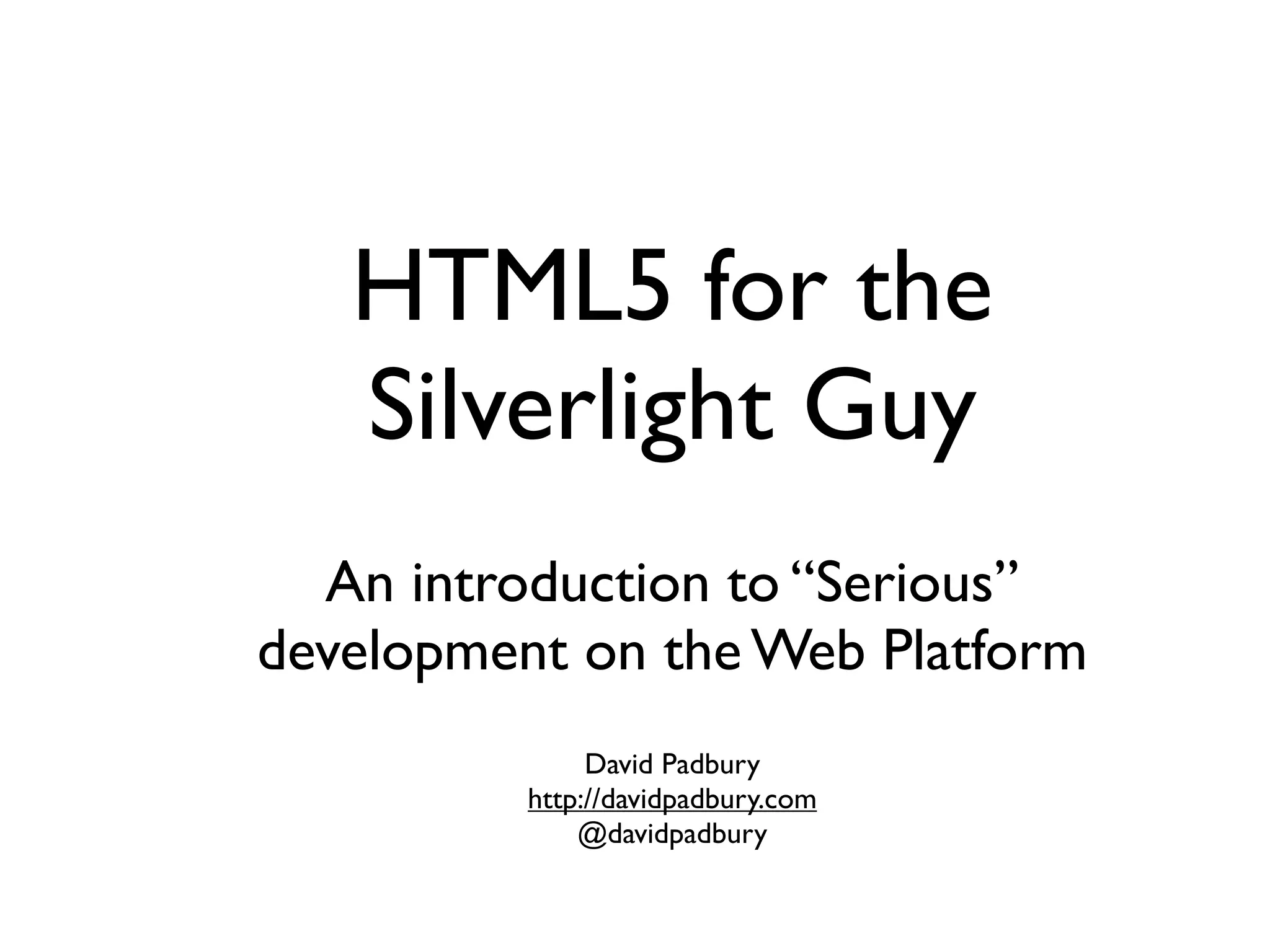
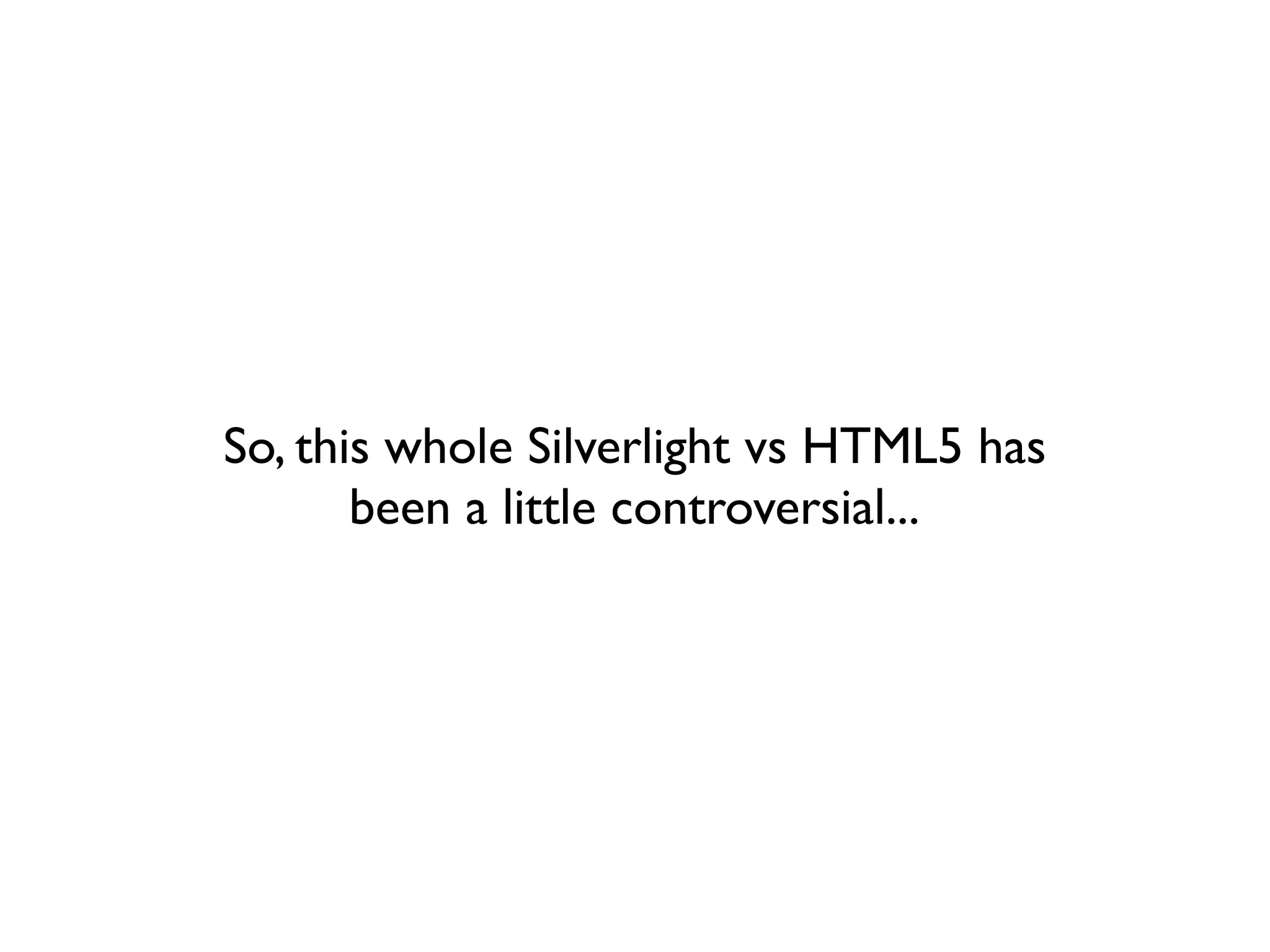
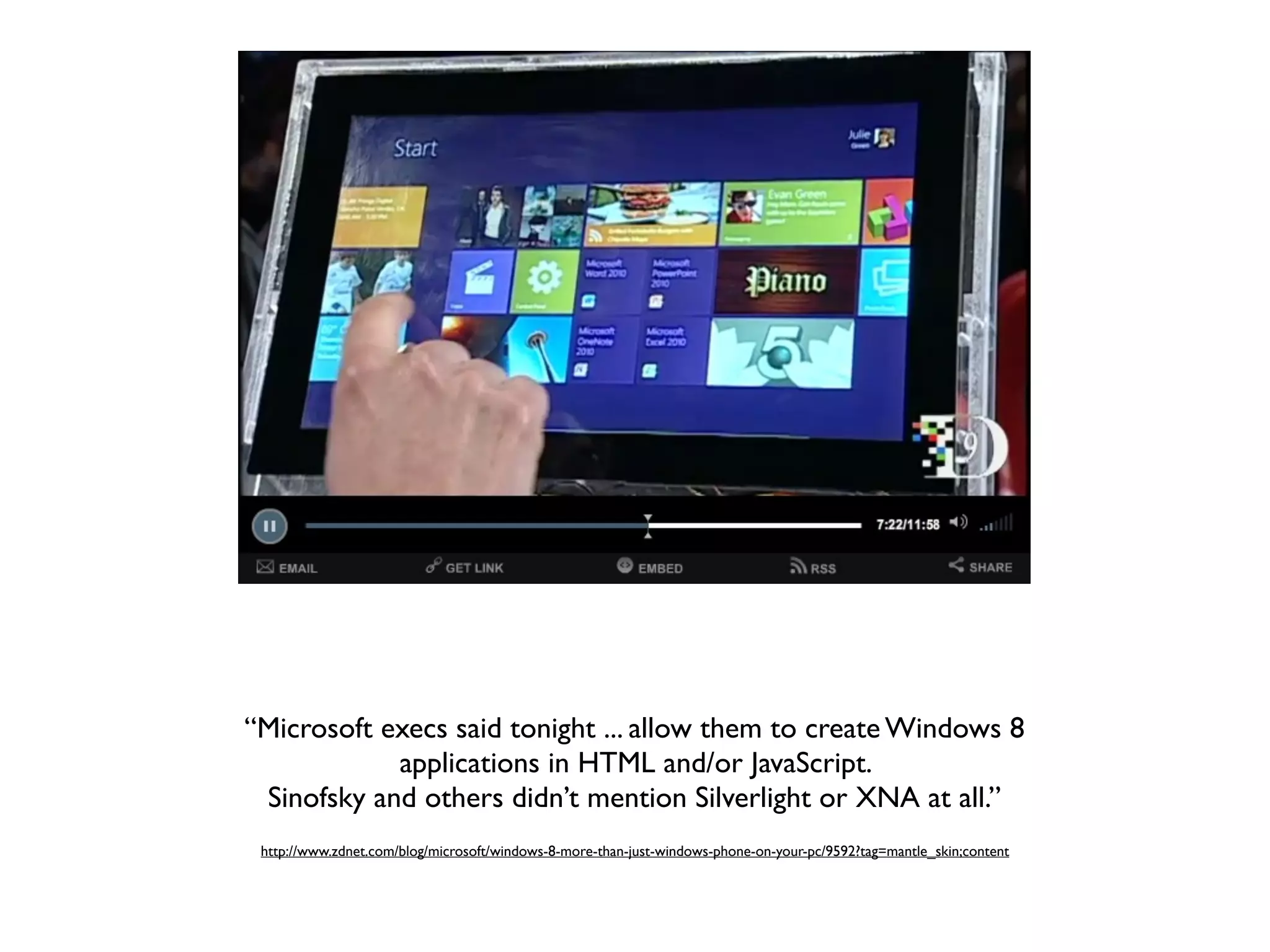

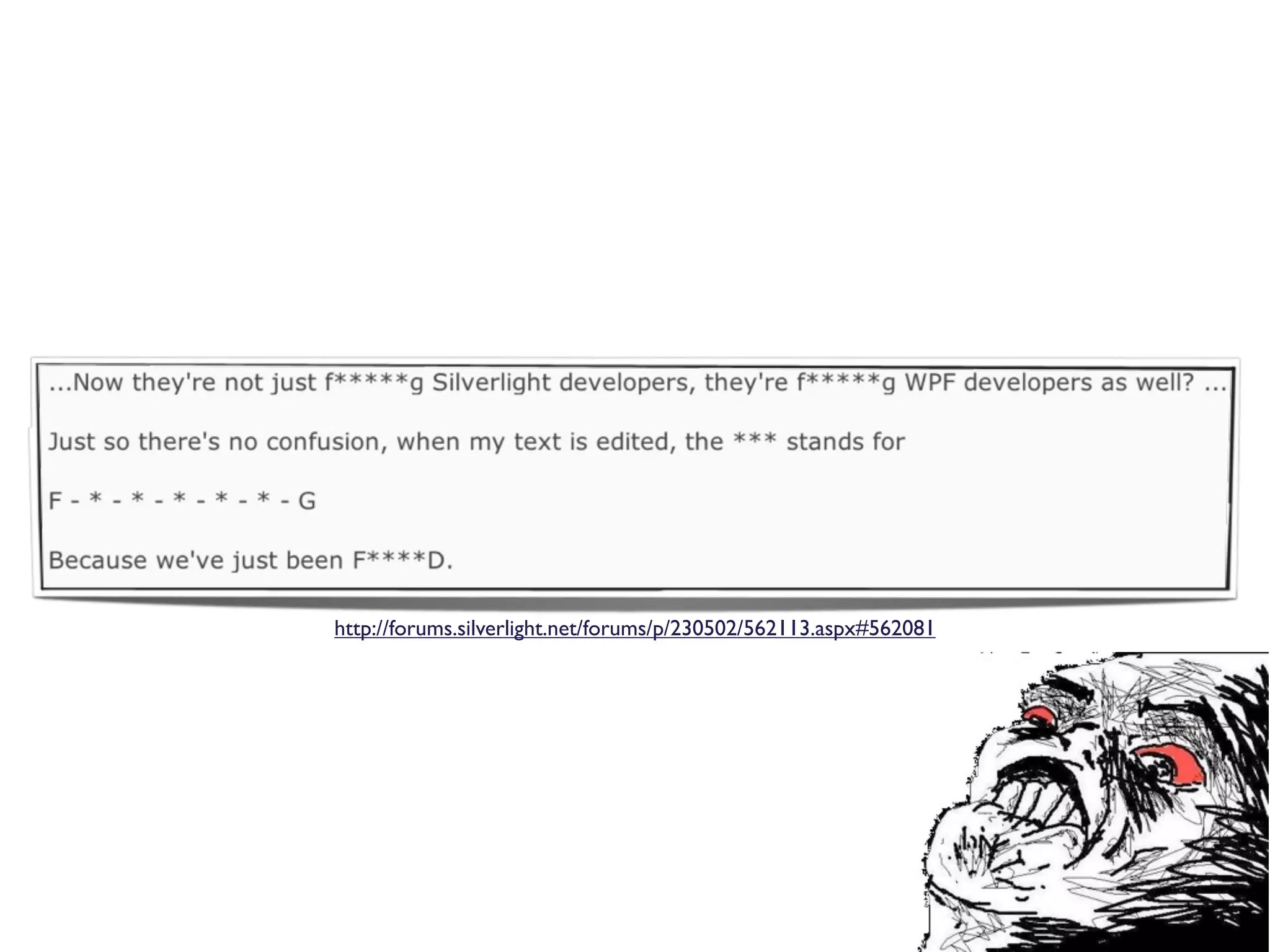
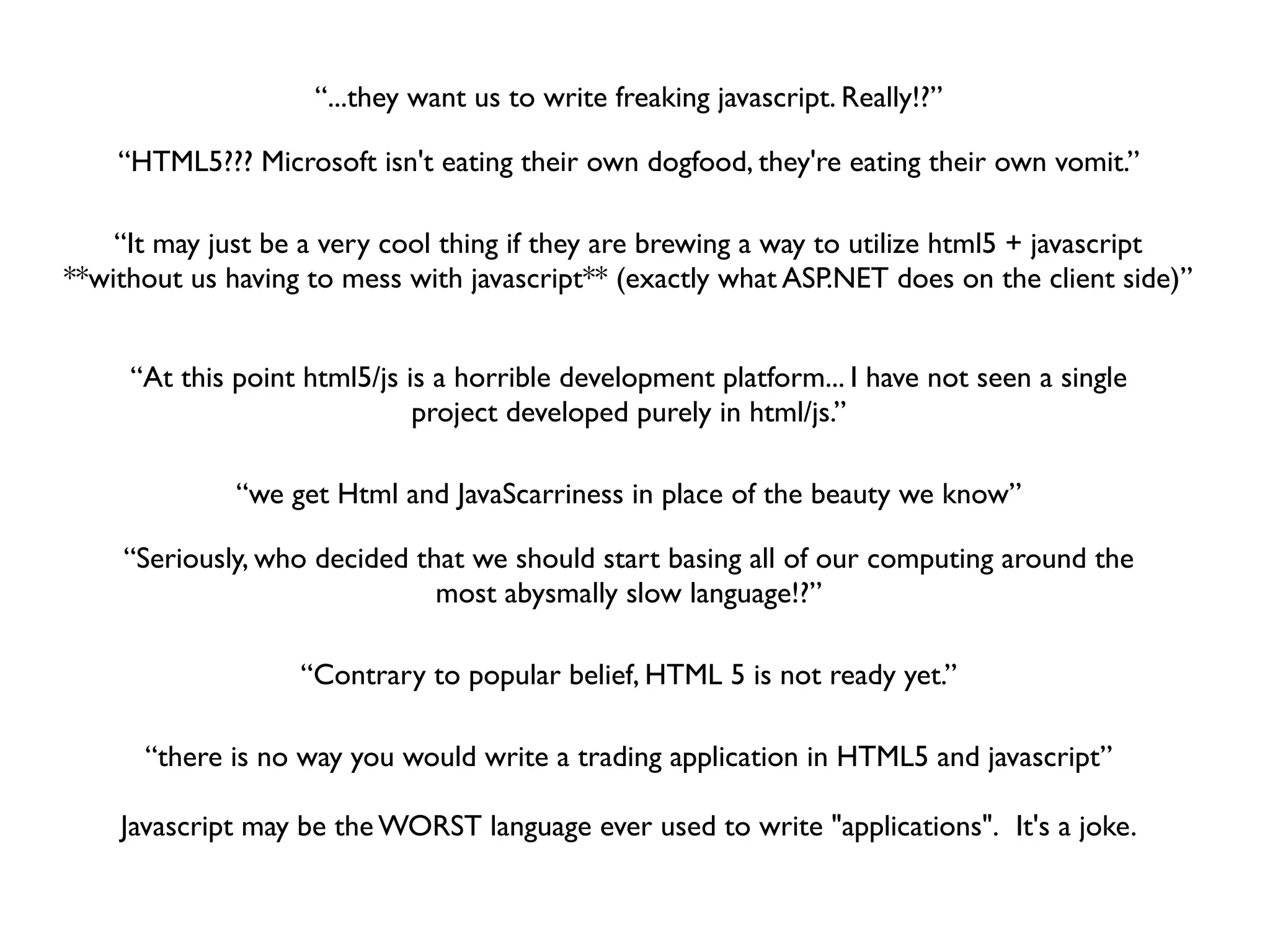
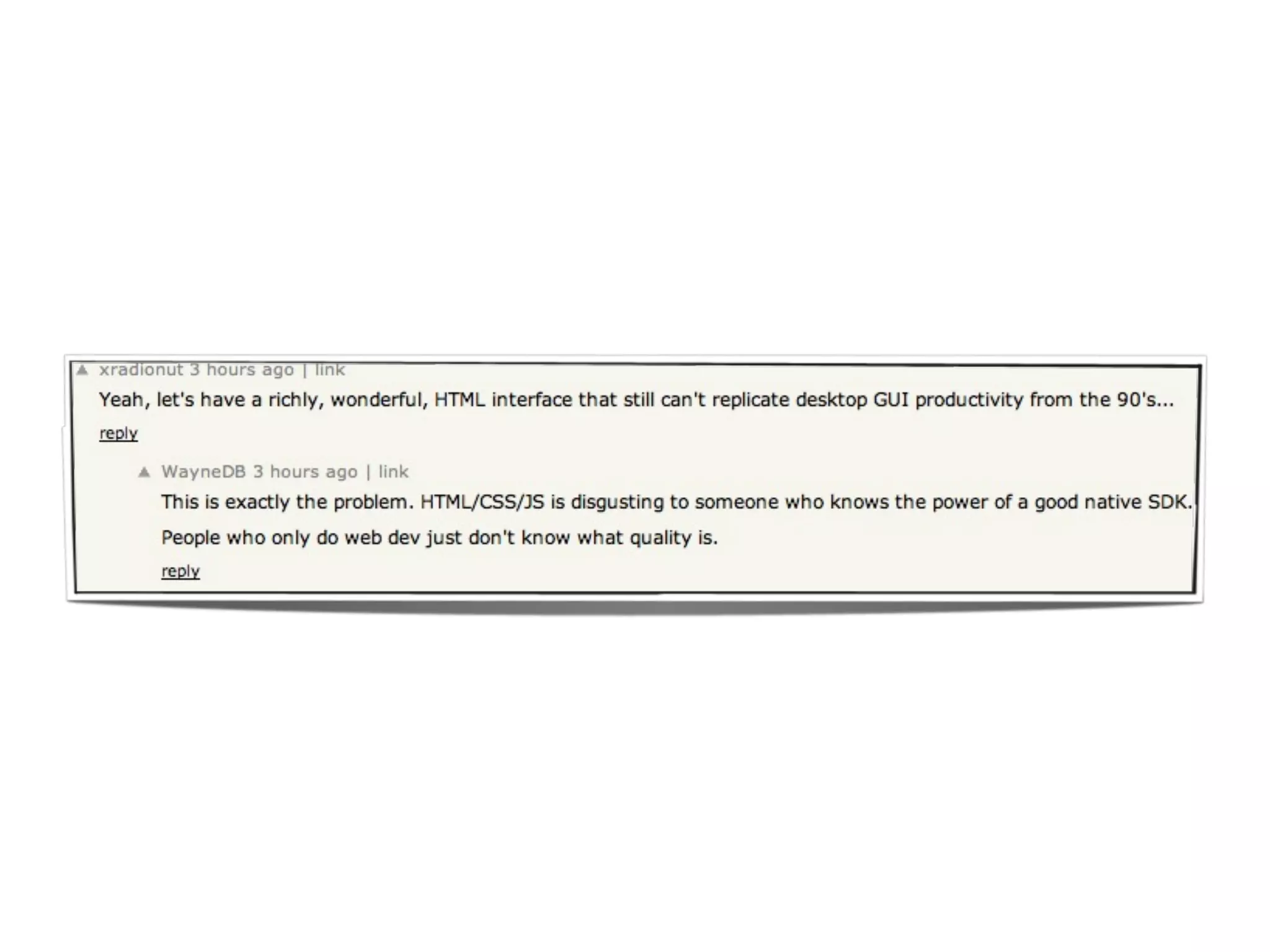
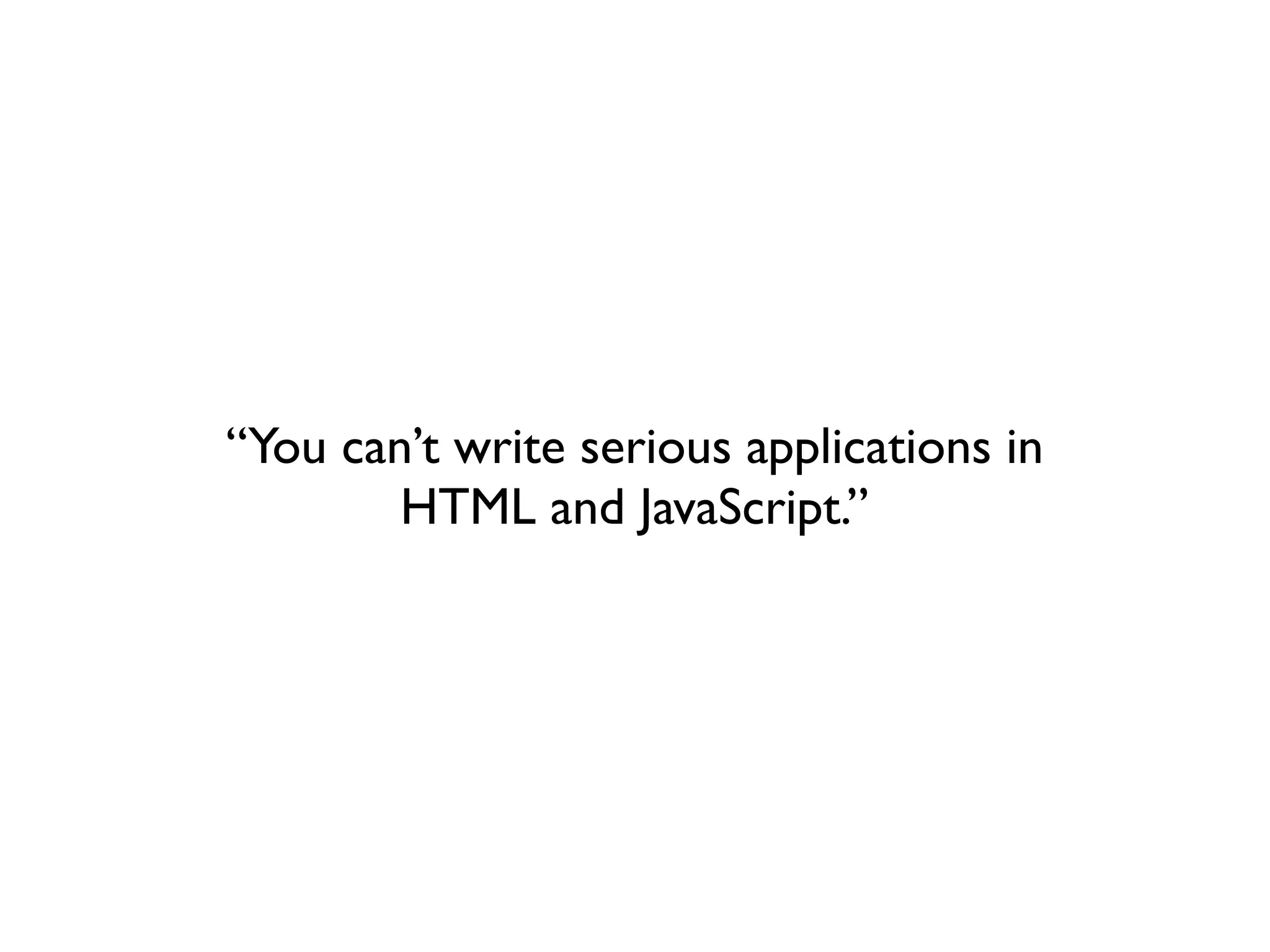
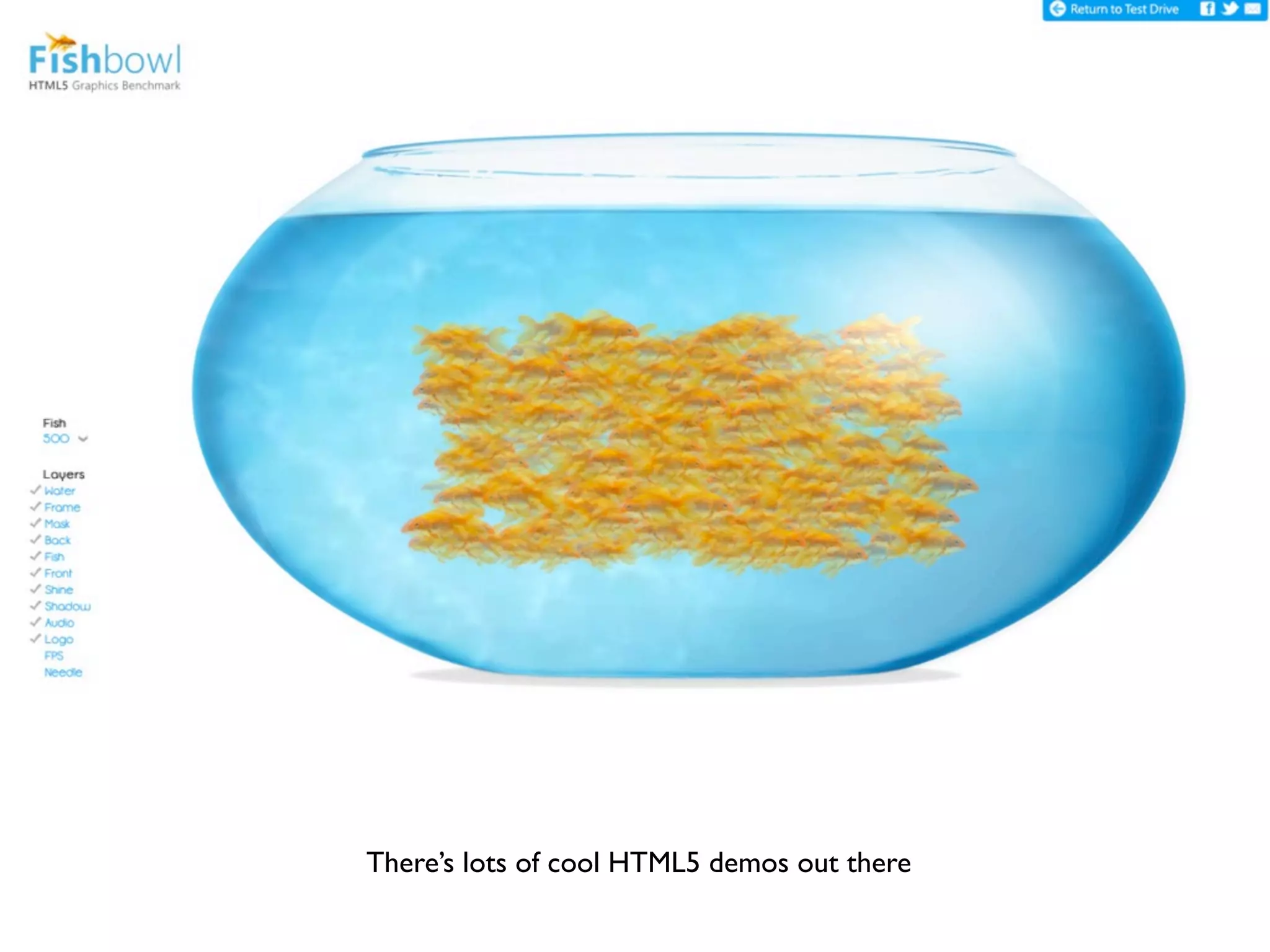

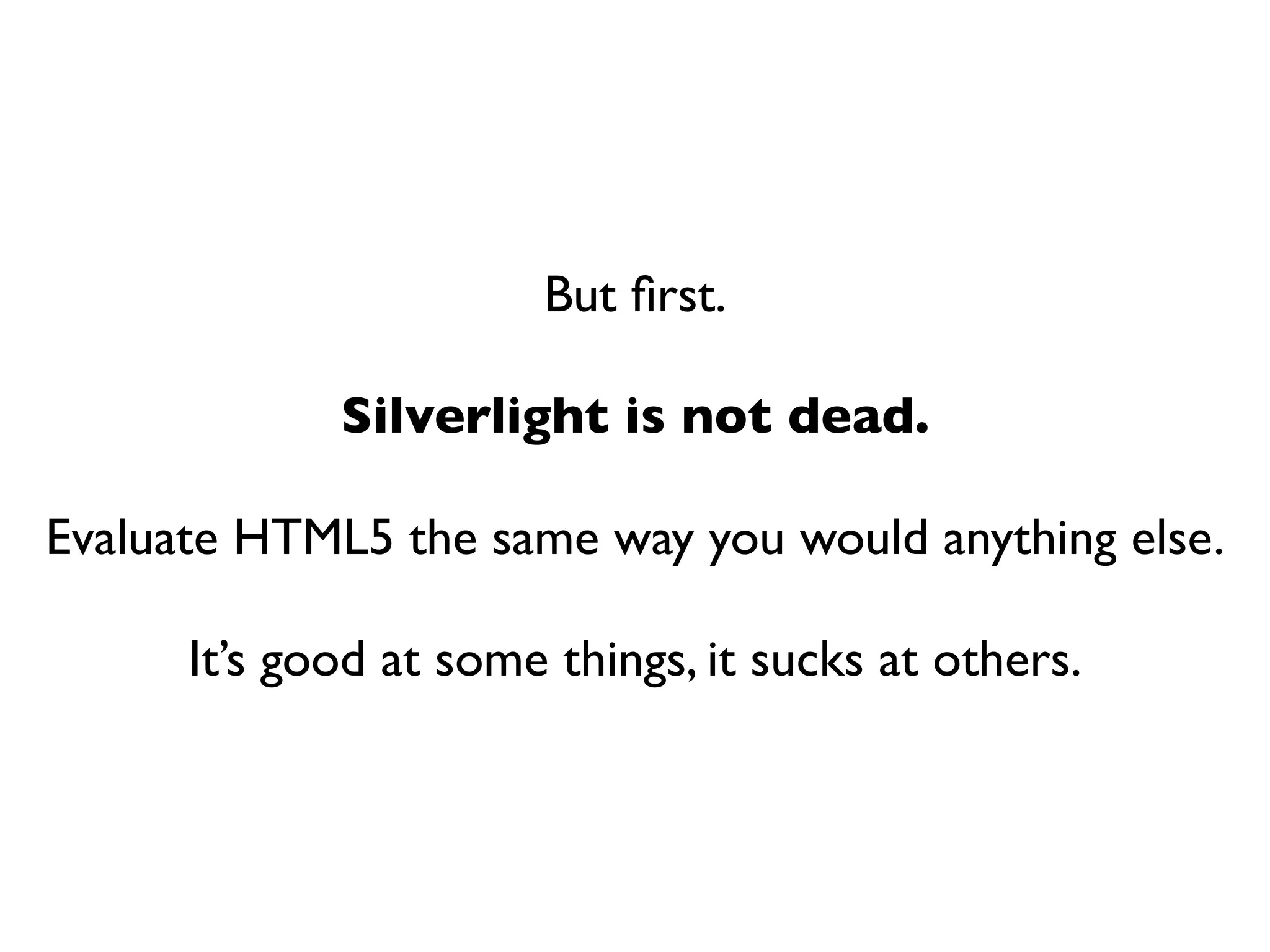
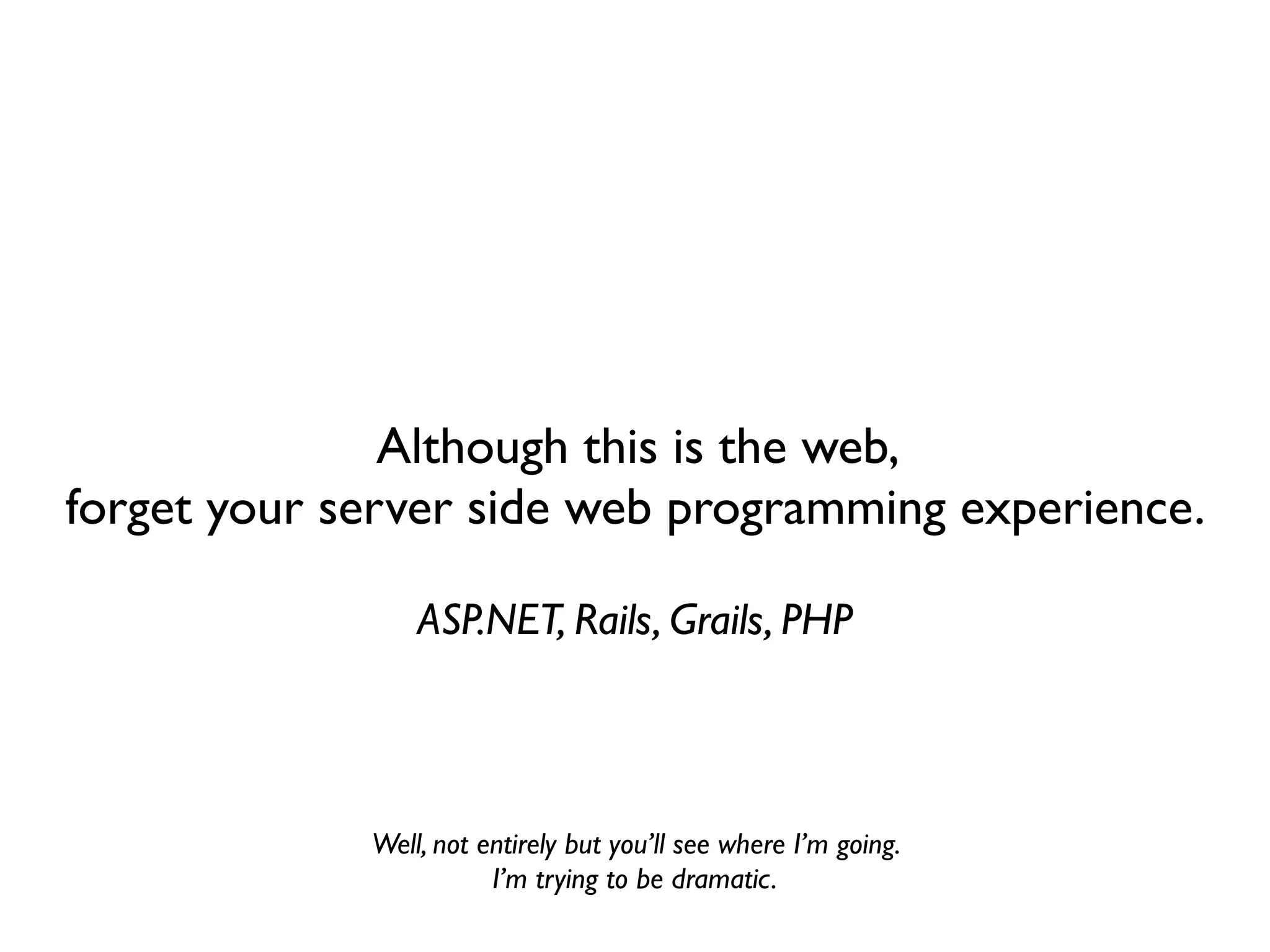
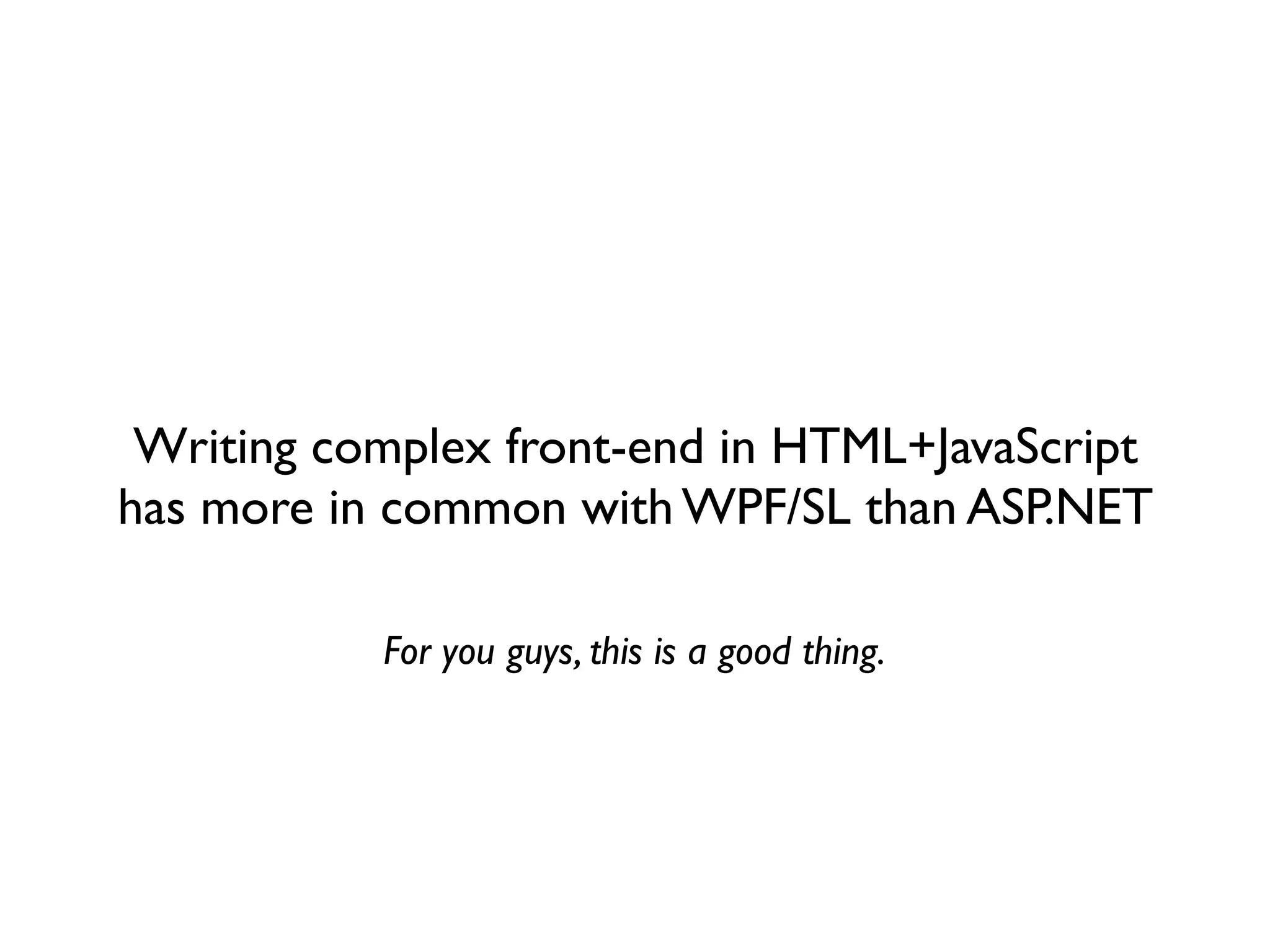



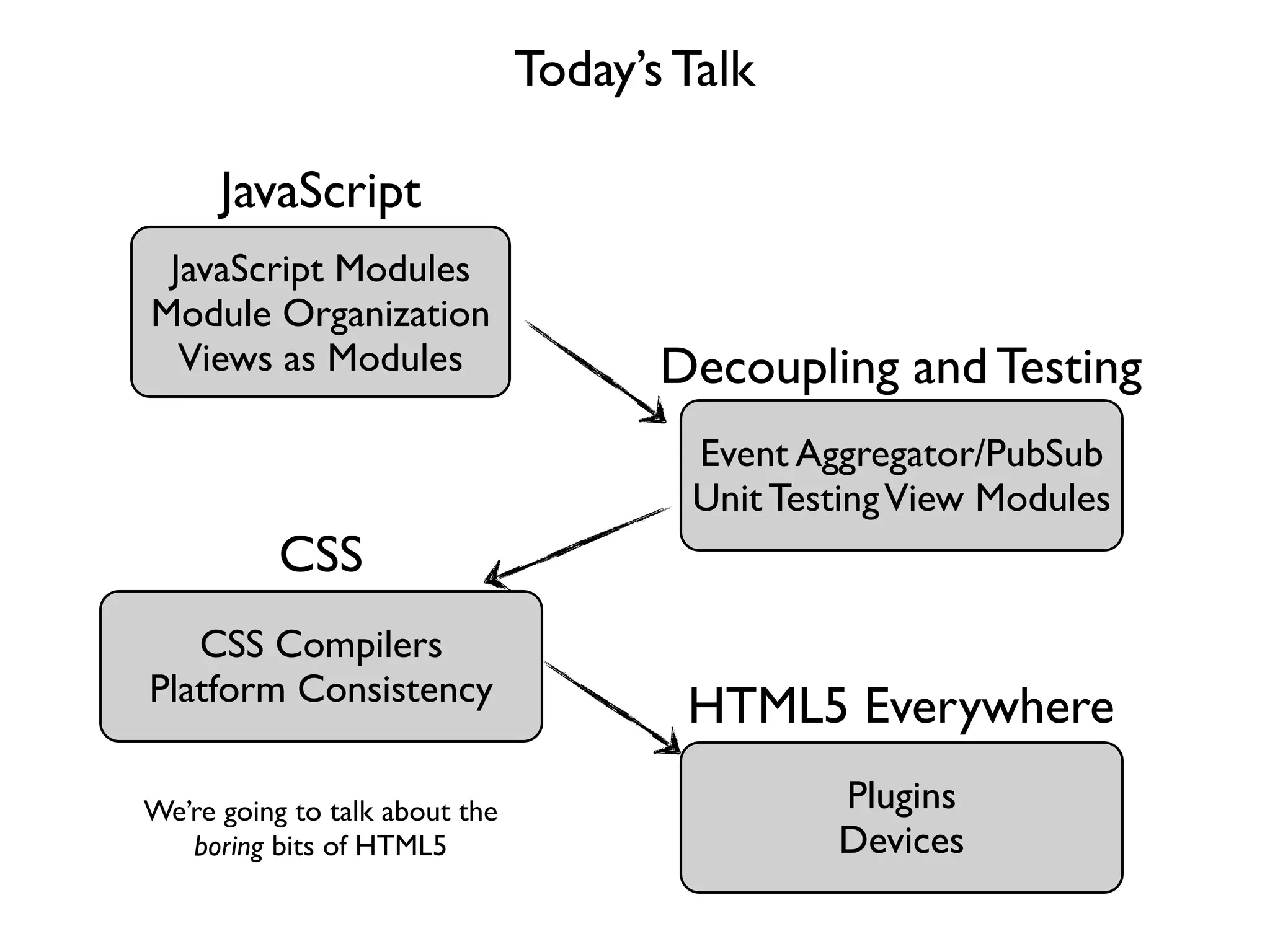
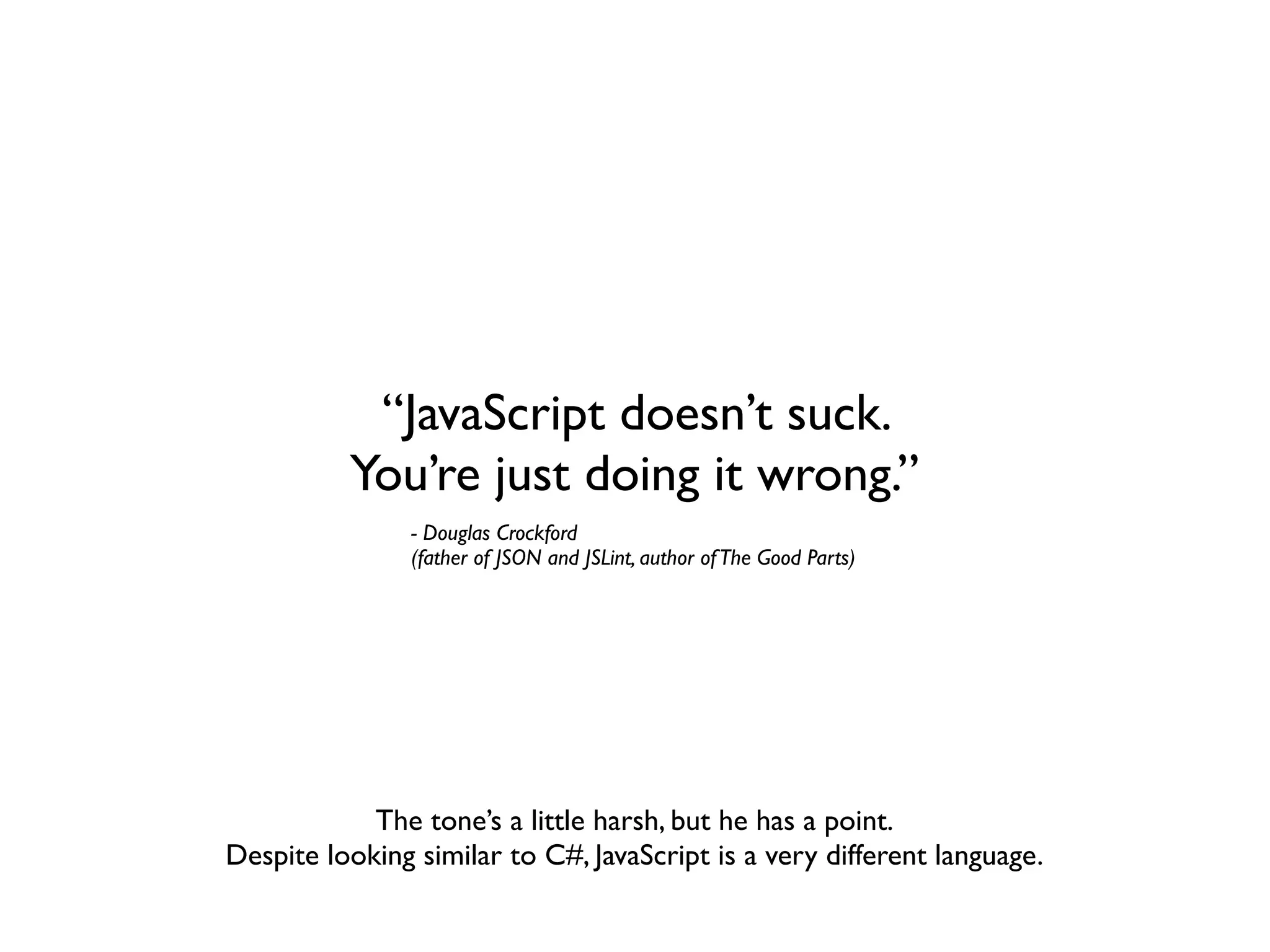
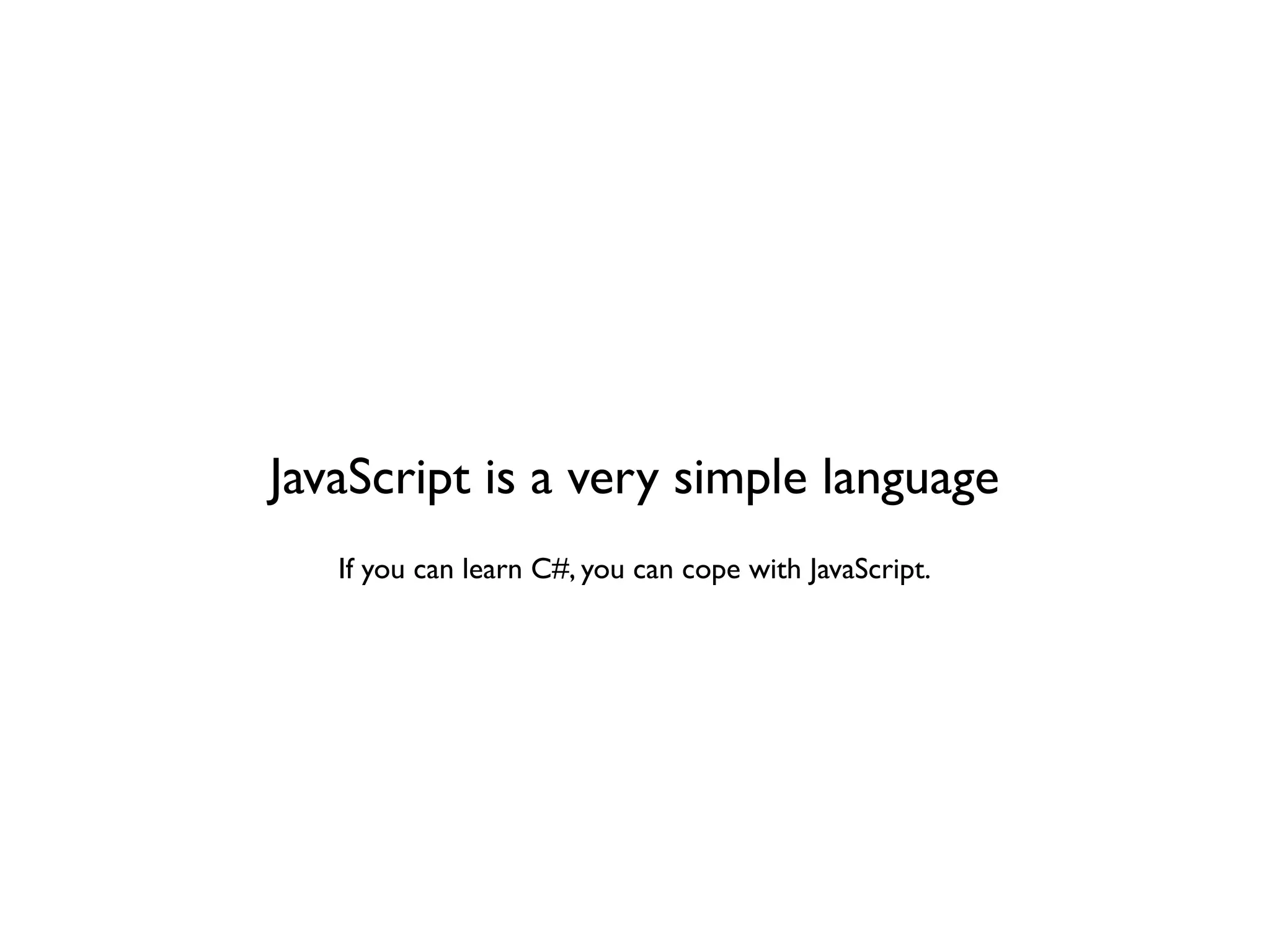
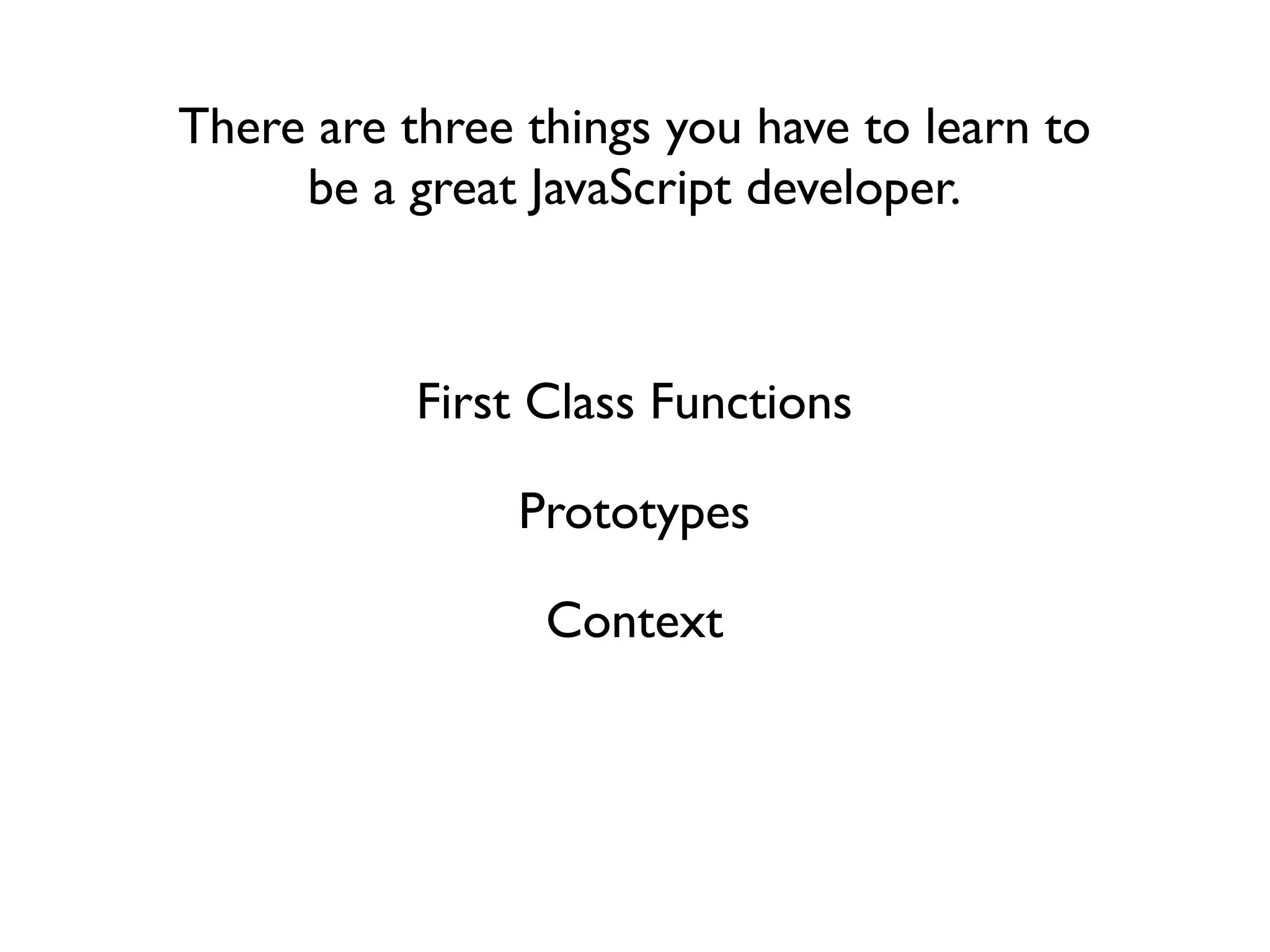
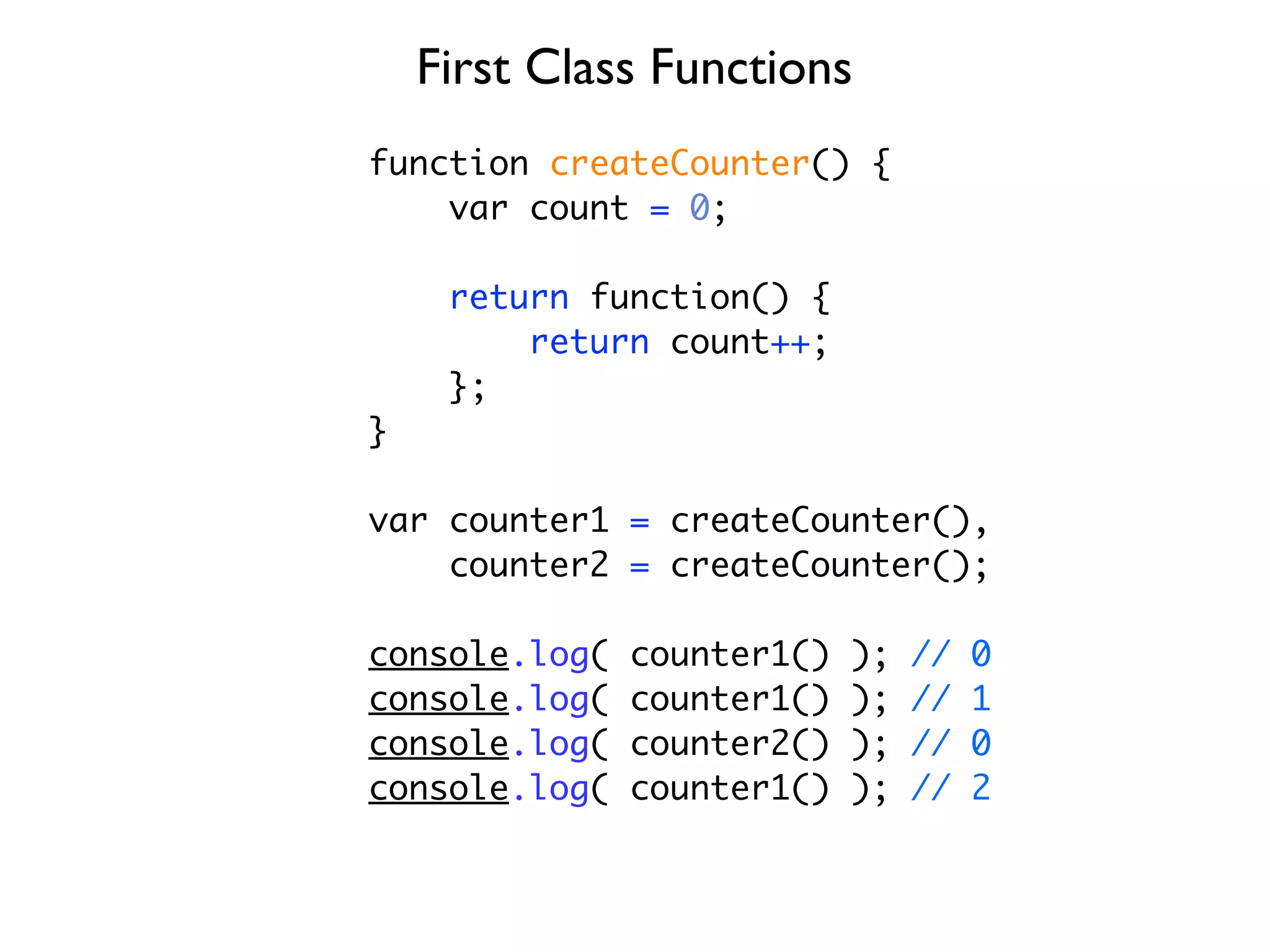
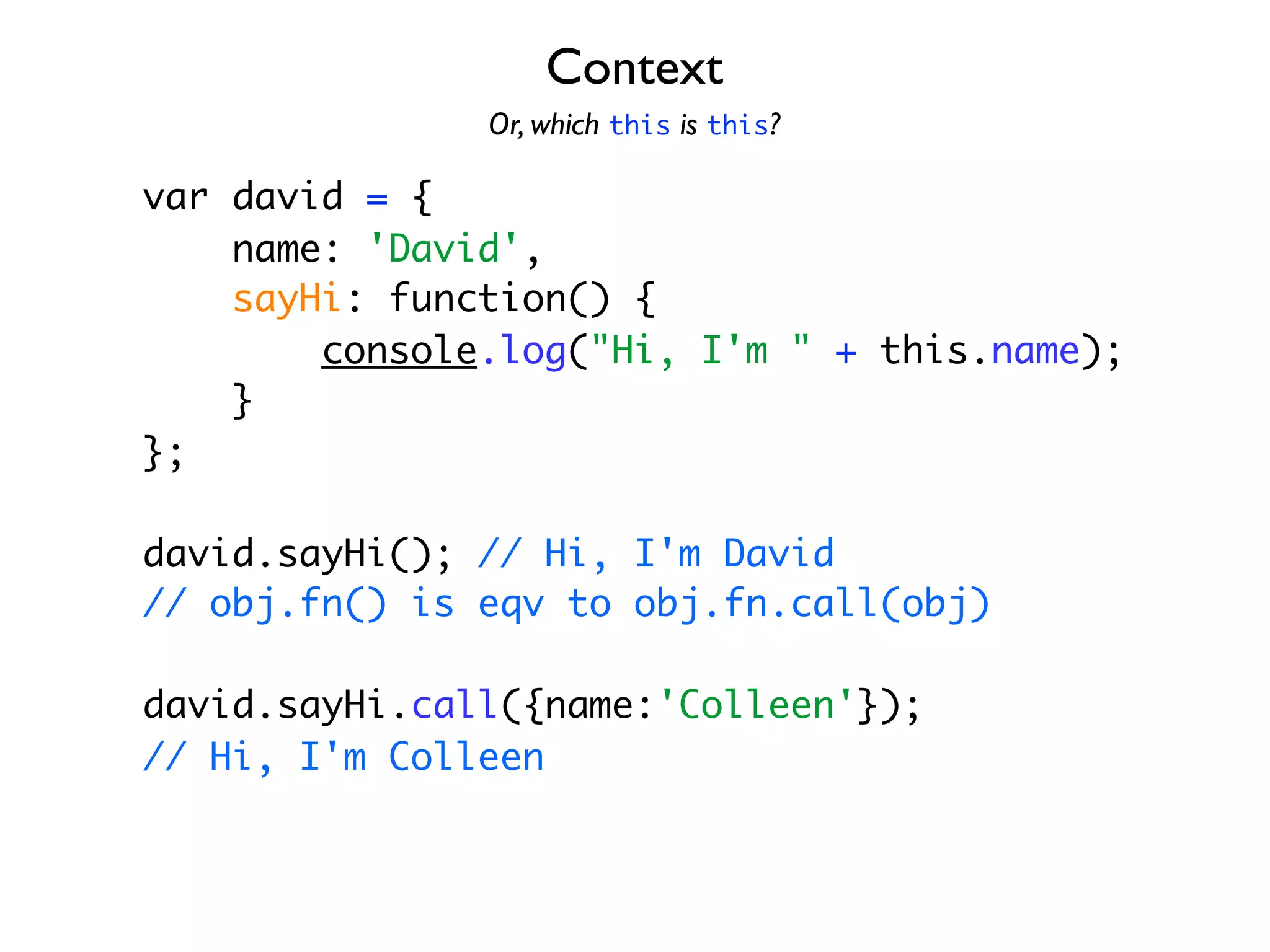
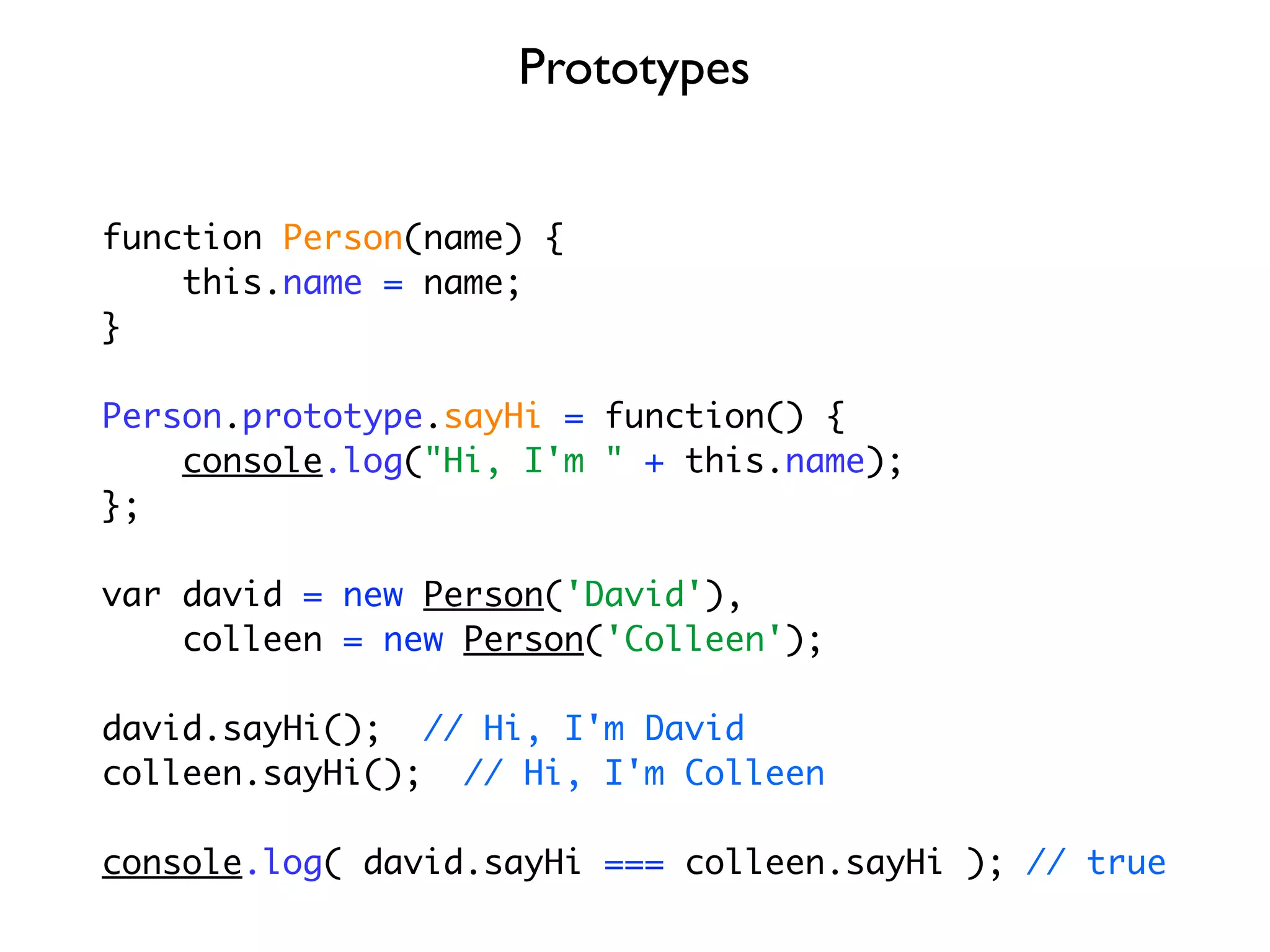

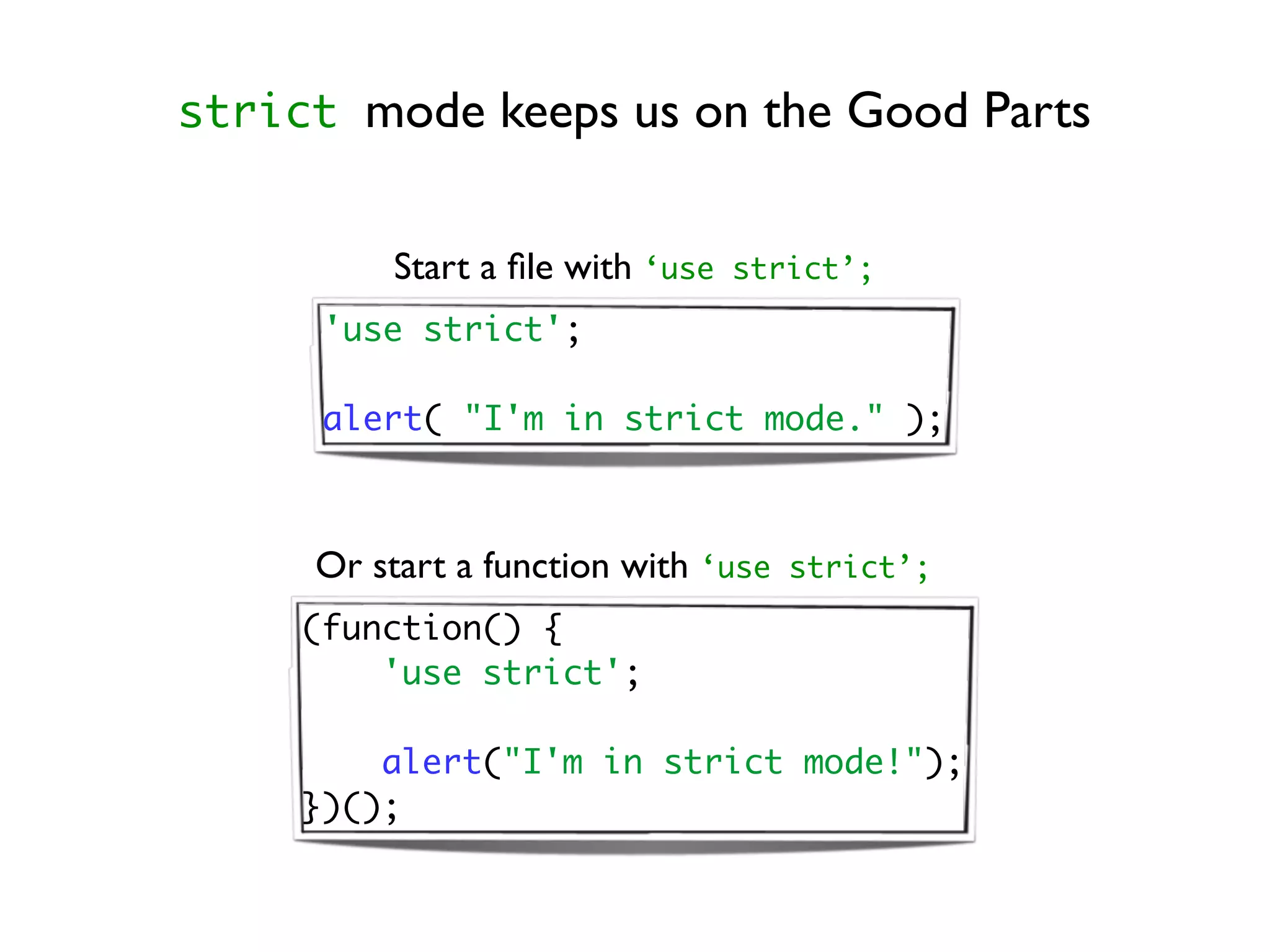
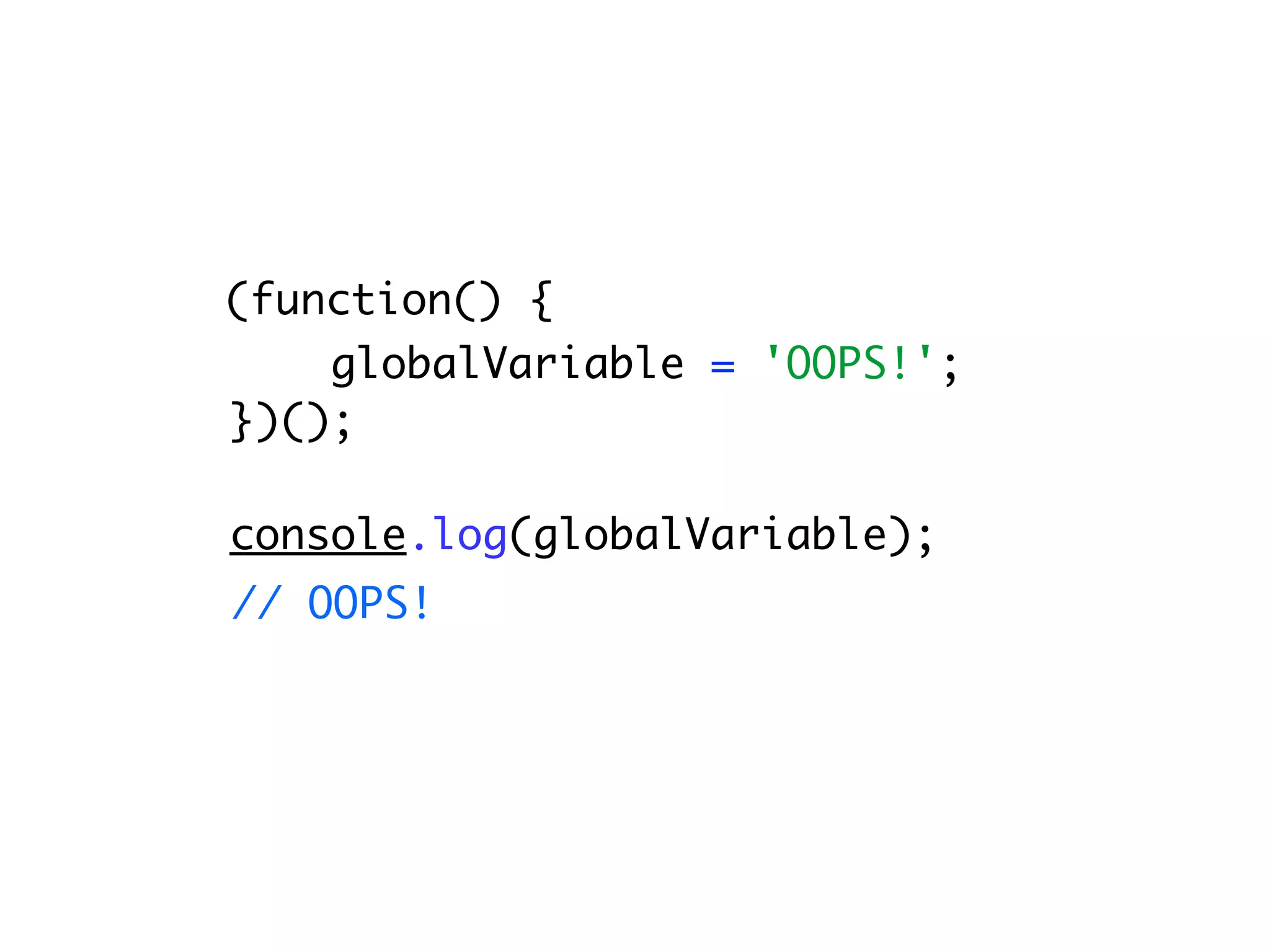
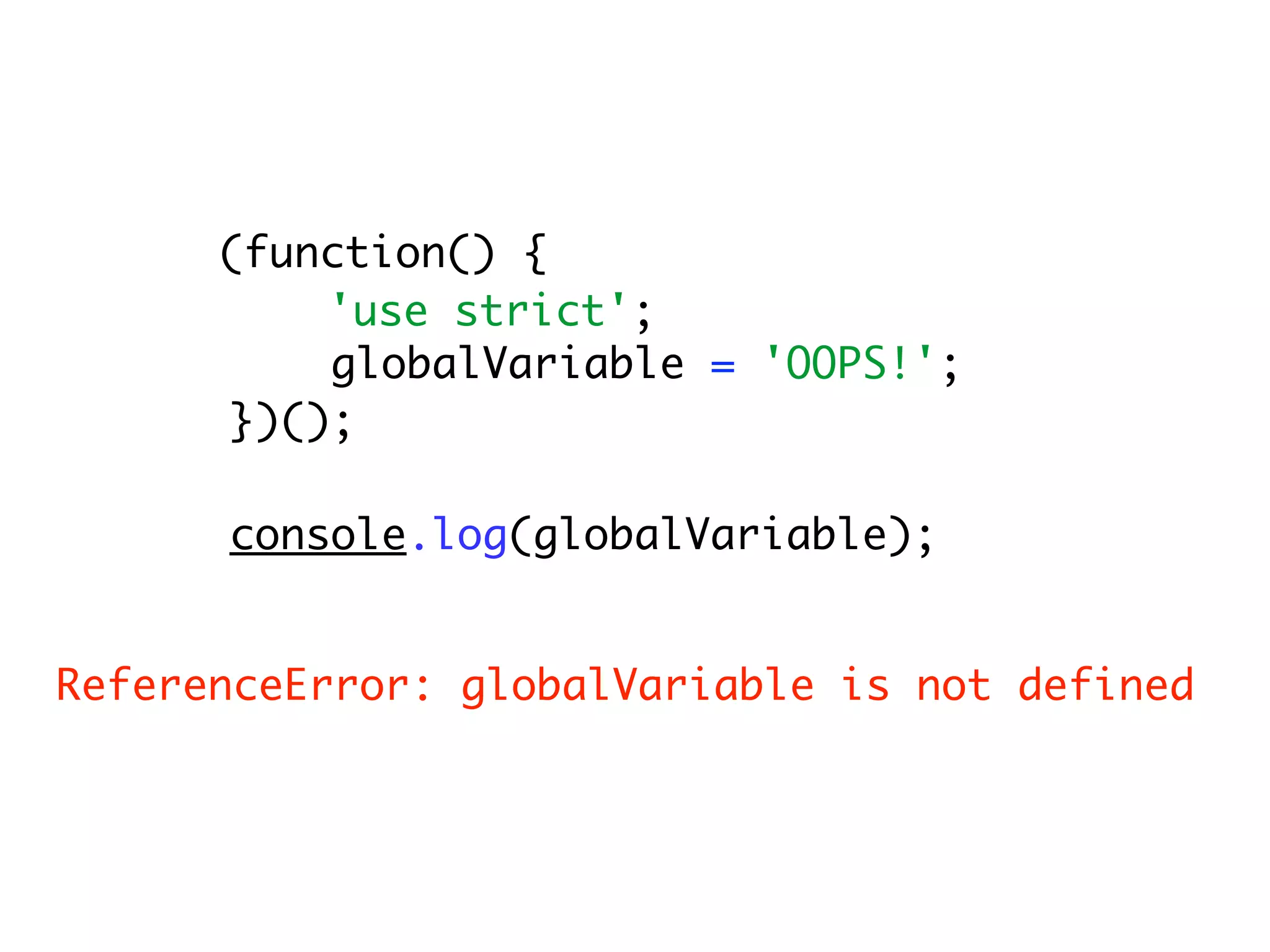
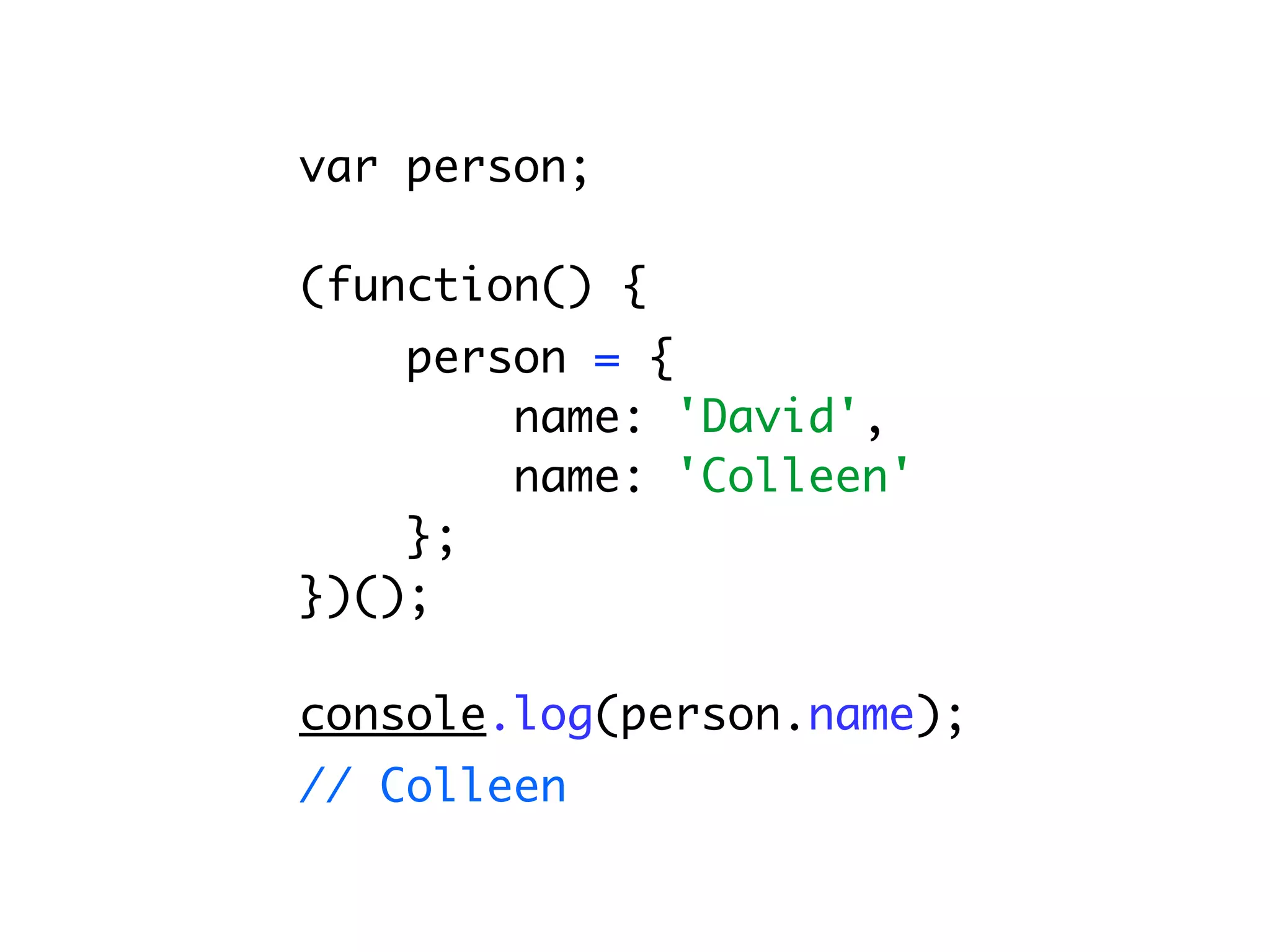
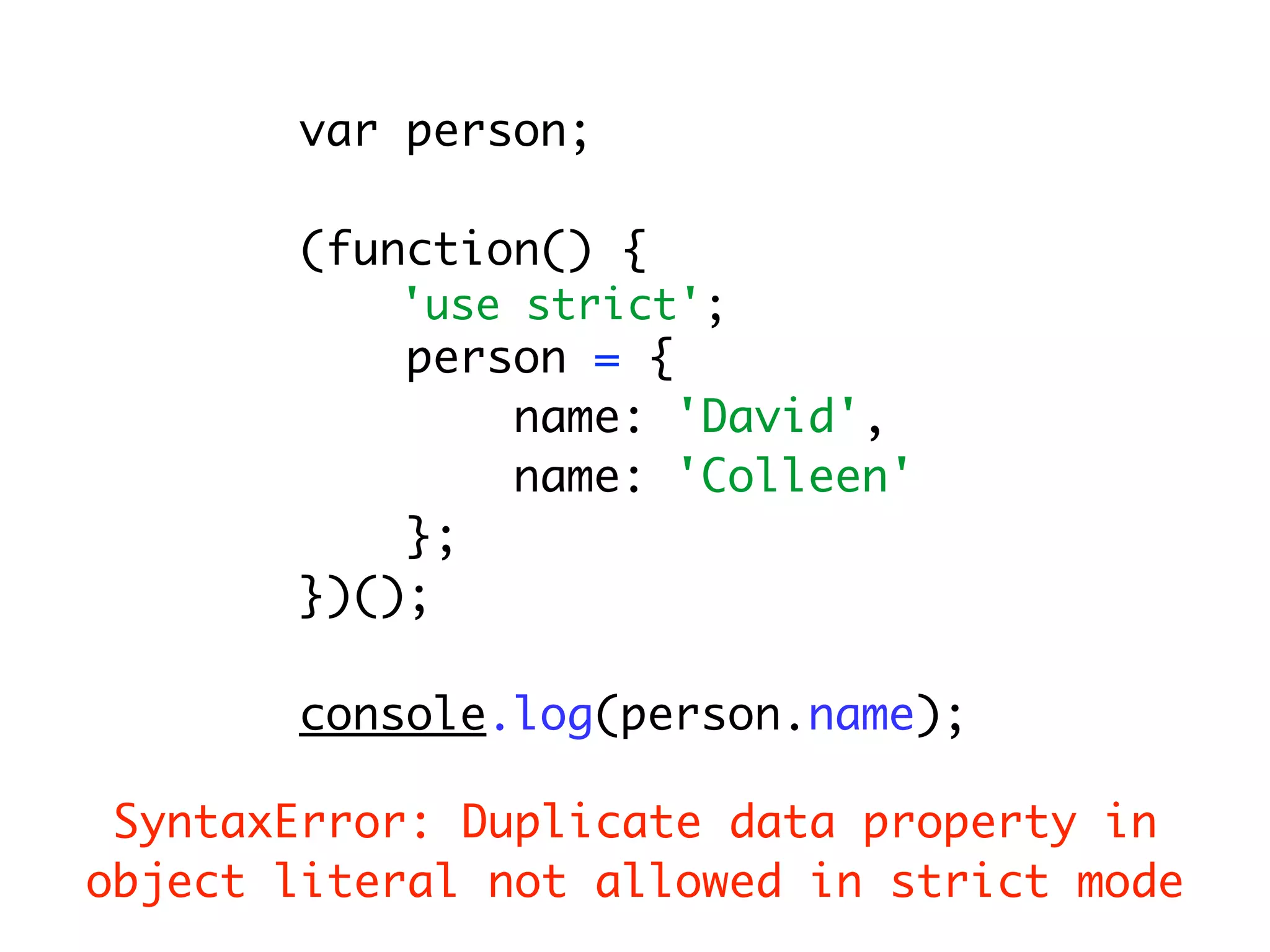
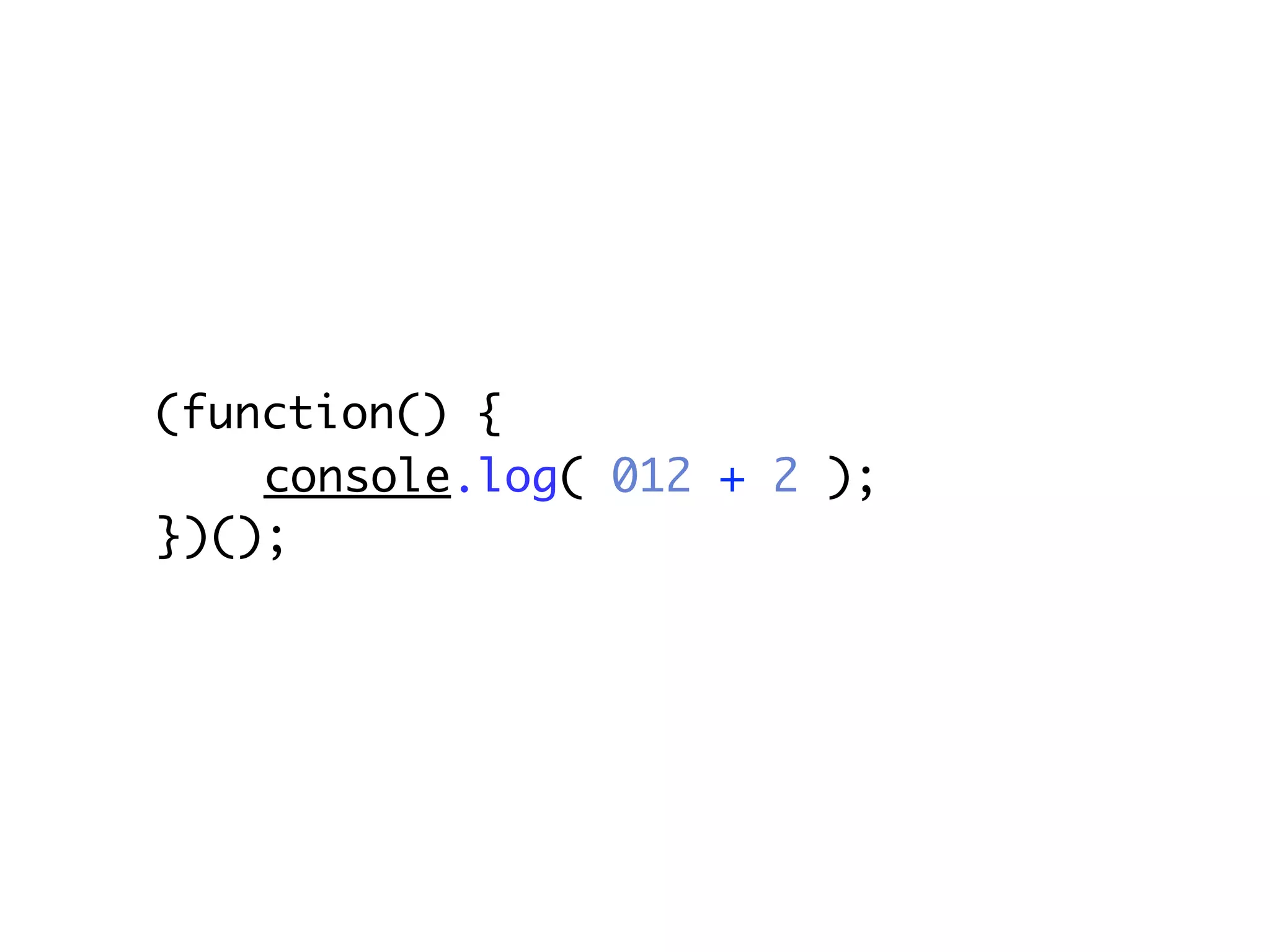
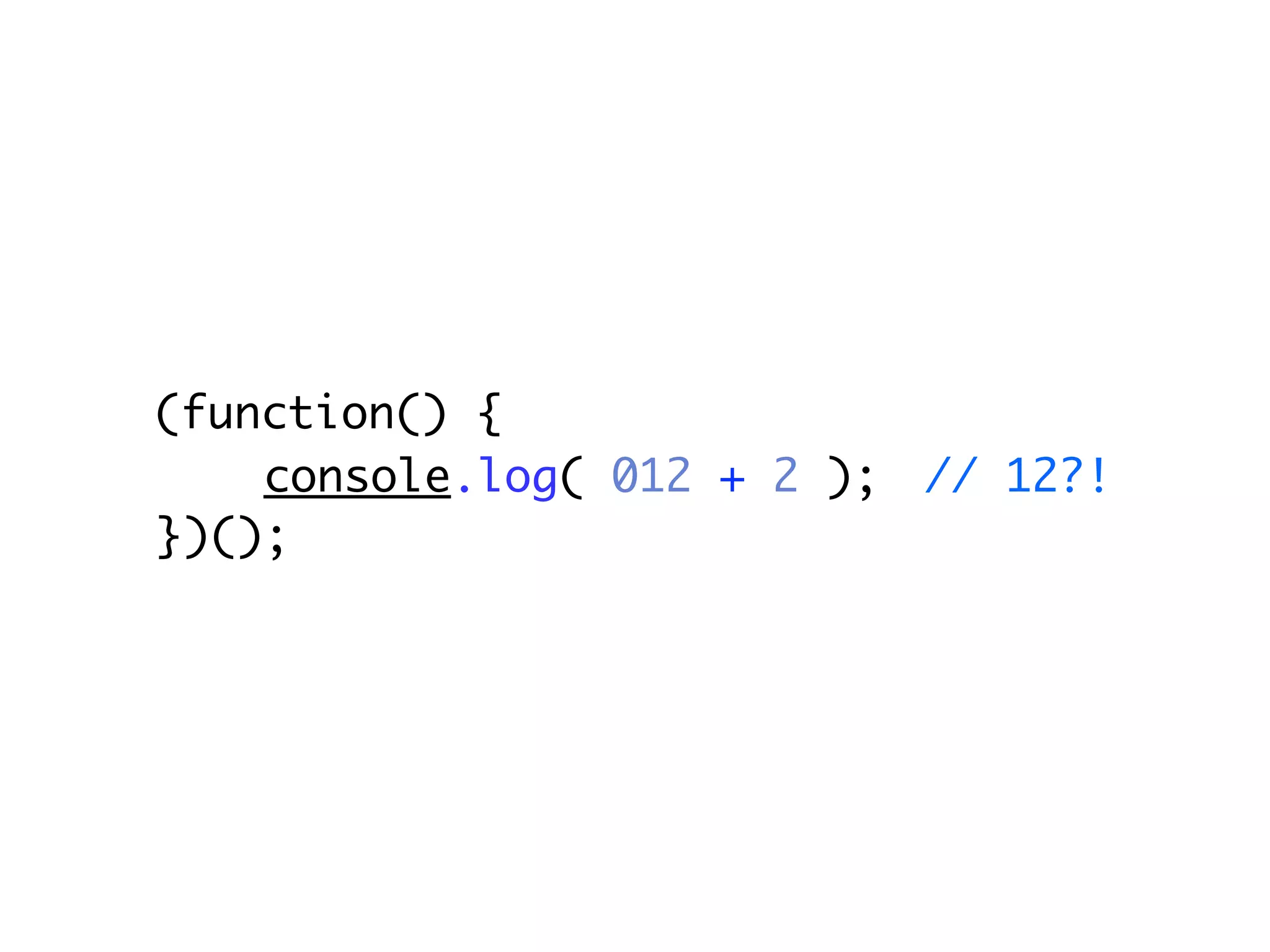
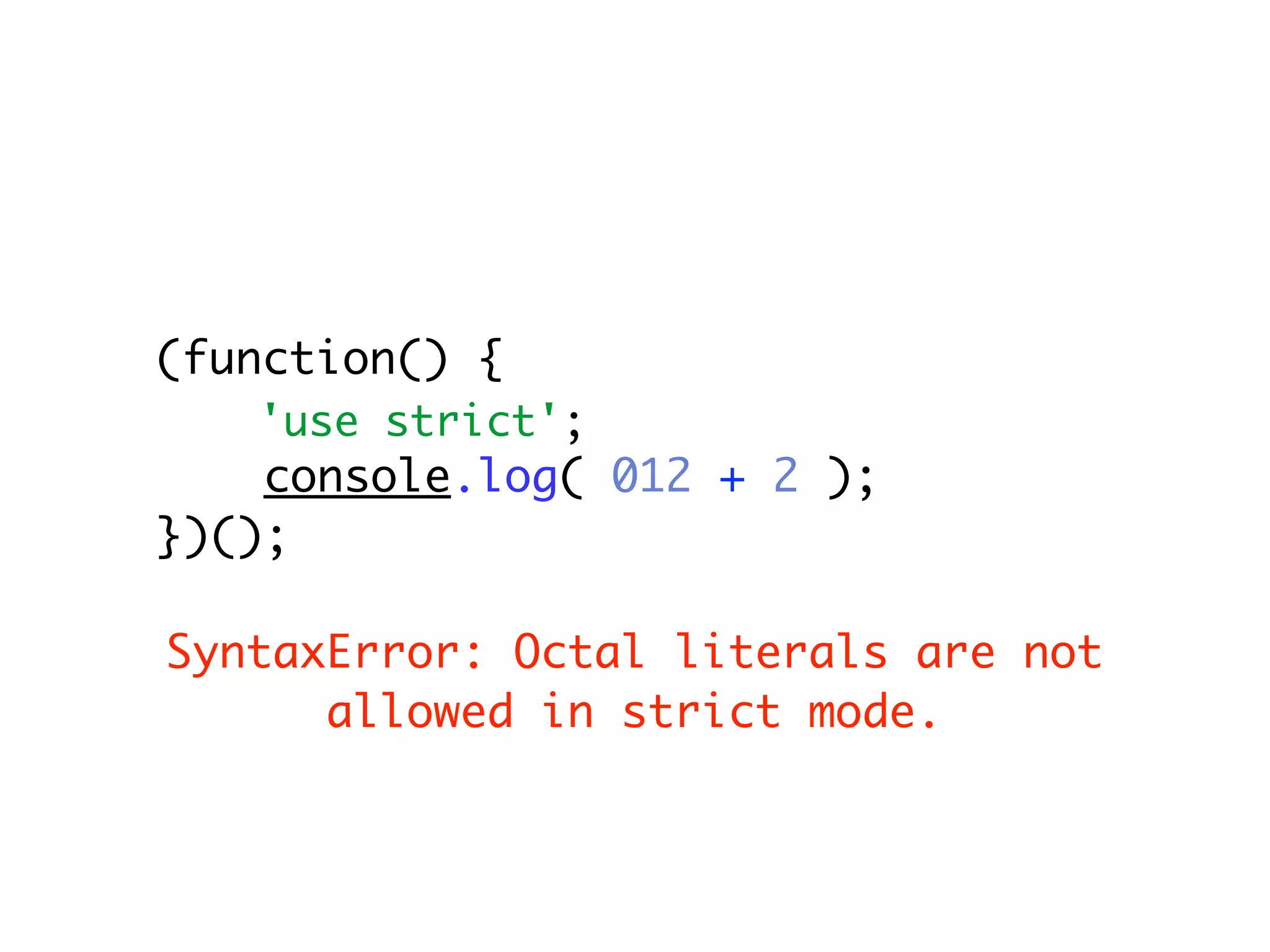

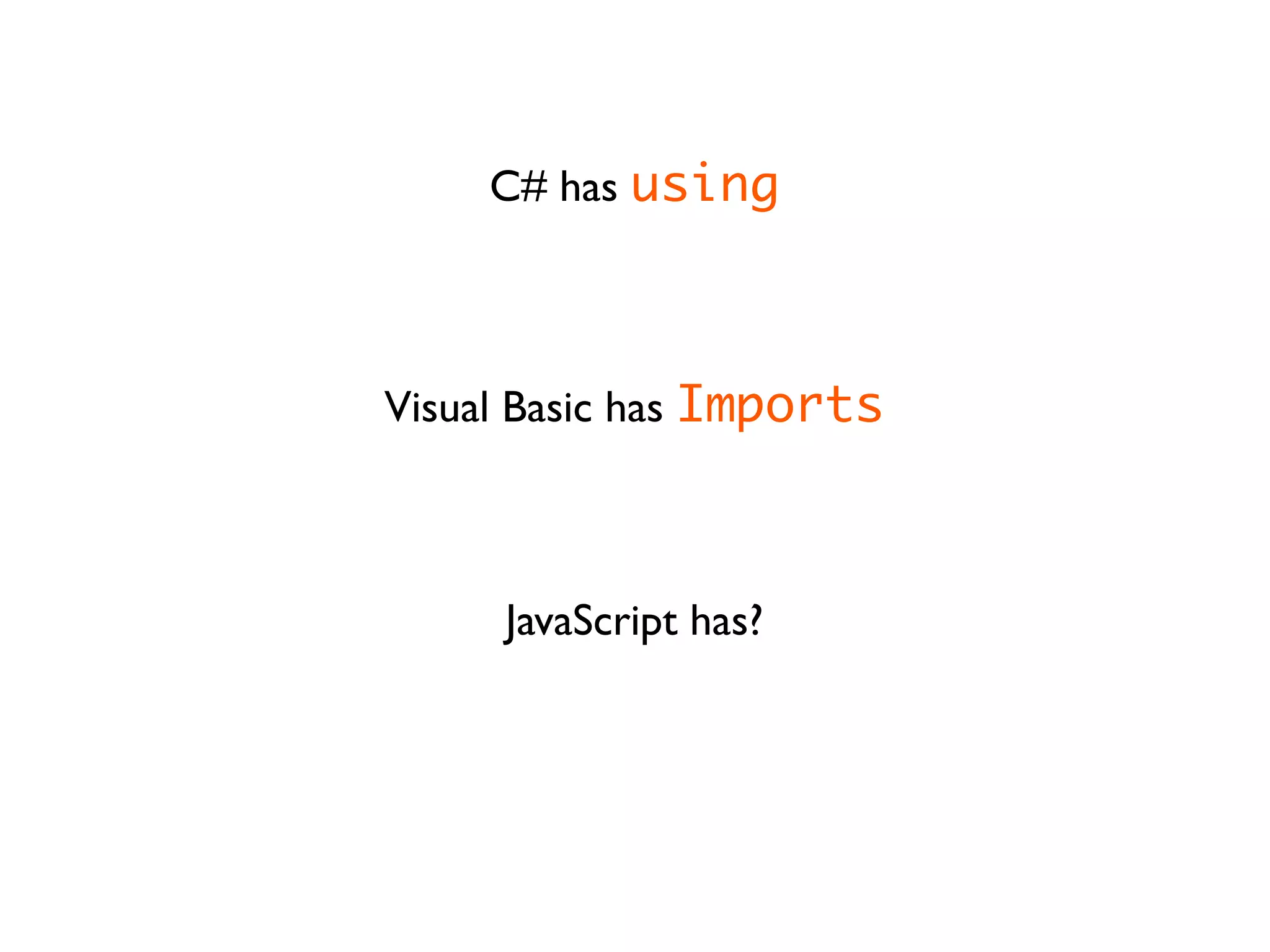
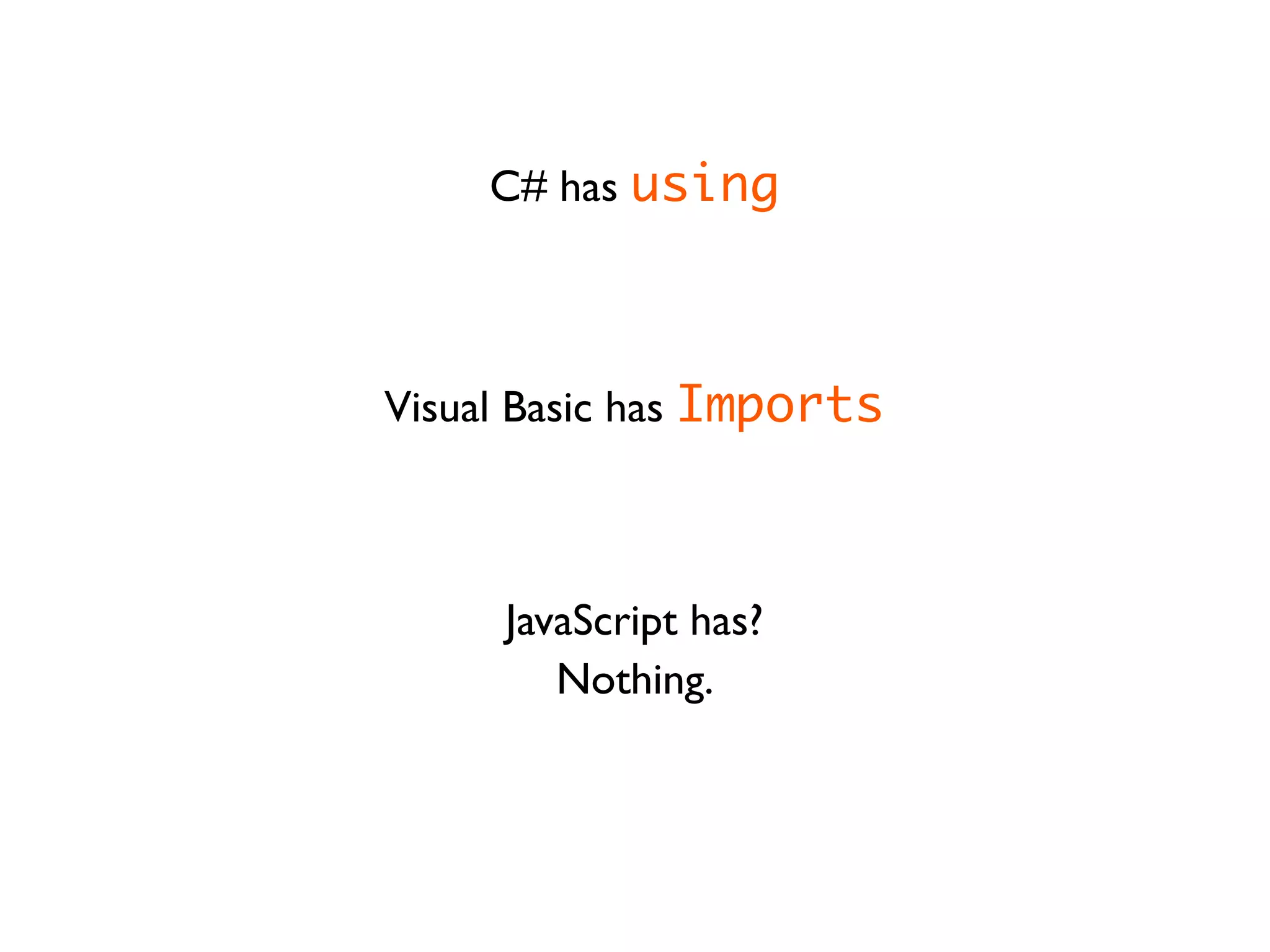
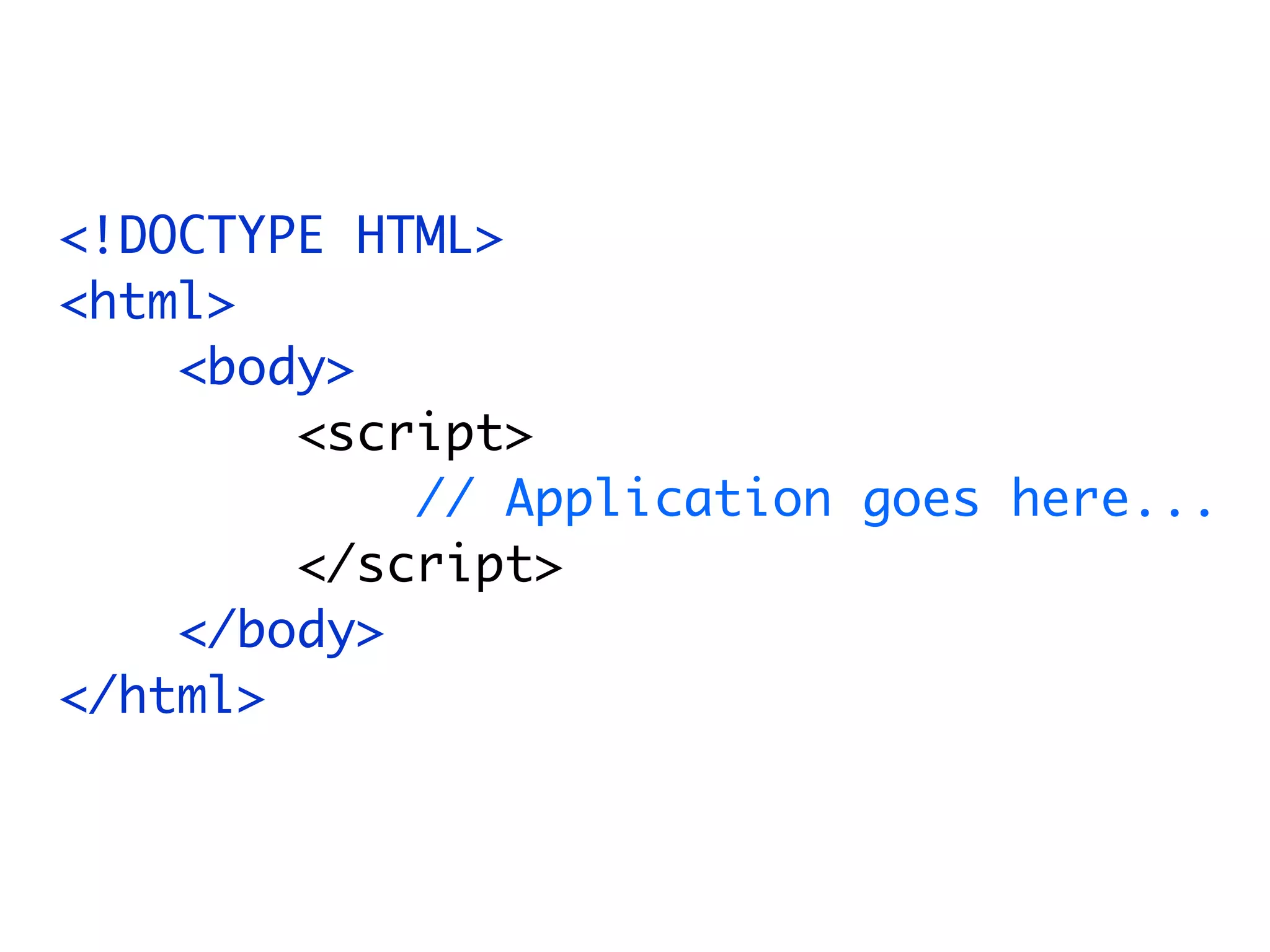
![$(document).ready(function() {
function addSymbol(symbol) {
var row = $('<tr>').append($('<td>').text(symbol));
$('.watches').children().append(row);
}
$('.screen-switcher a').click(function() {
var screen = $(this).attr('data-screen-id');
$('.screens .screen').slideUp('fast', function() {
$('.screens .screen[data-screen=' + screen + ']').slideDown();
});
});
$('.add-symbol').parent('form').submit(function(e) {
e.preventDefault();
var symbol = $('.add-symbol').val();
addSymbol(symbol);
$.ajax('/data/symbol' + symbol, {
completed: function(xhr, data) {
$('<div class="price">')
.text(data.price)
.click(function() {
$('.price .tooltip')
.show('fast', function() {
$(this).text(price);
})
});
}
});
});
$('.sidebar .history').flot({
data: $.ajax('/stock/history', {
data: [1,23,4,5,6],
date: new Date().getTime()
});](https://image.slidesharecdn.com/html5-for-the-silverlight-guycopy-111107175217-phpapp02/75/HTML5-for-the-Silverlight-Guy-37-2048.jpg)
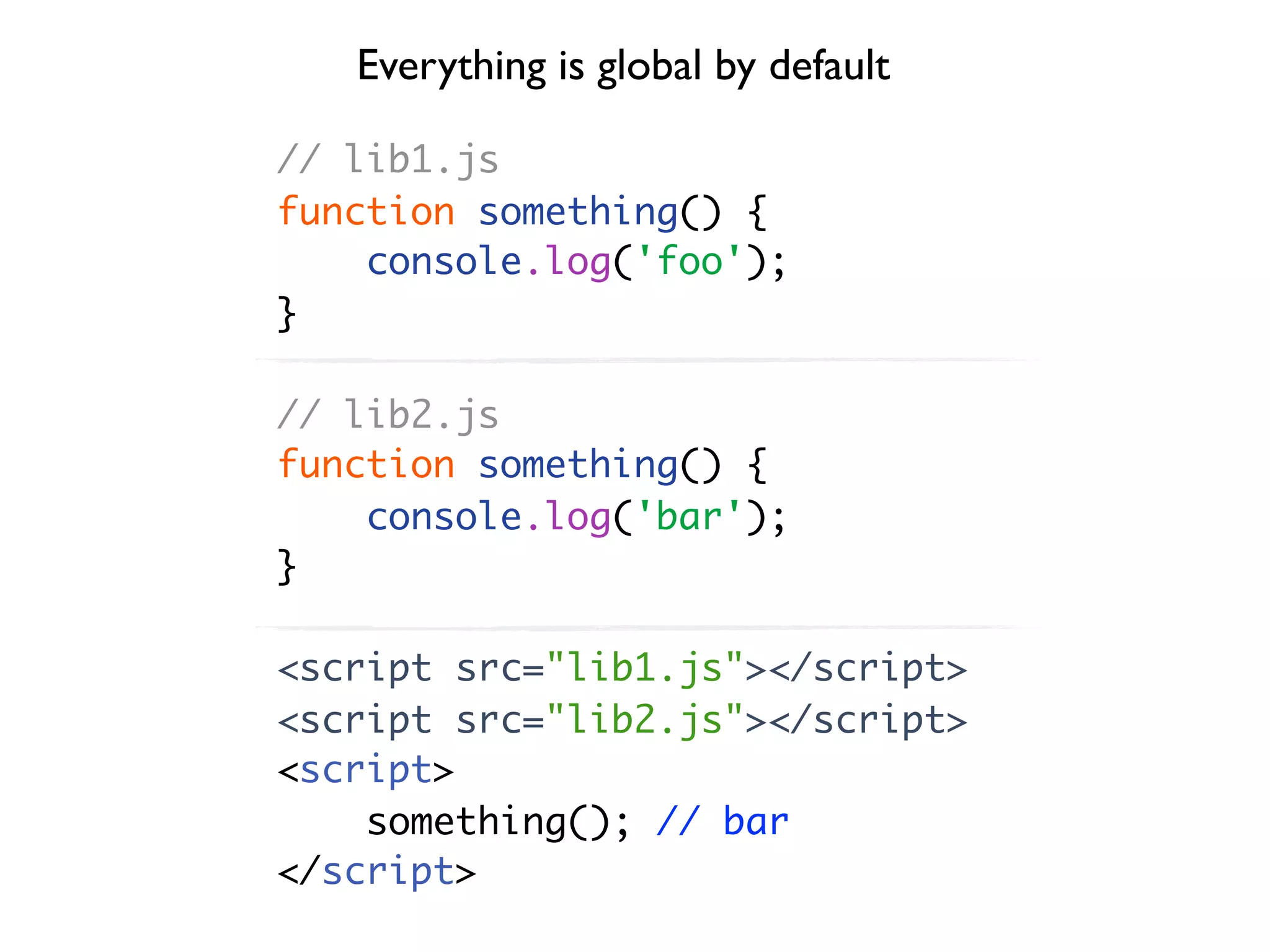
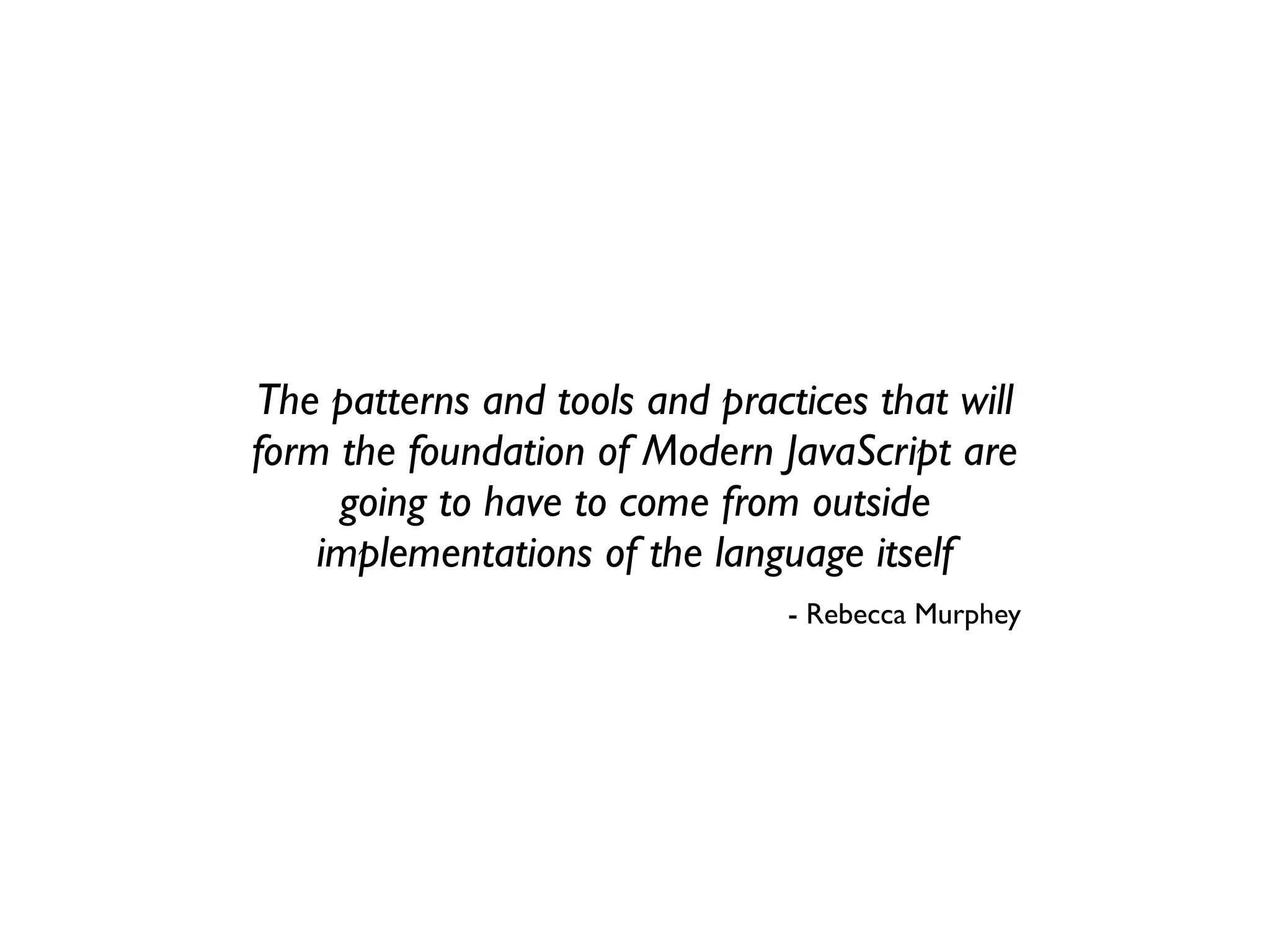
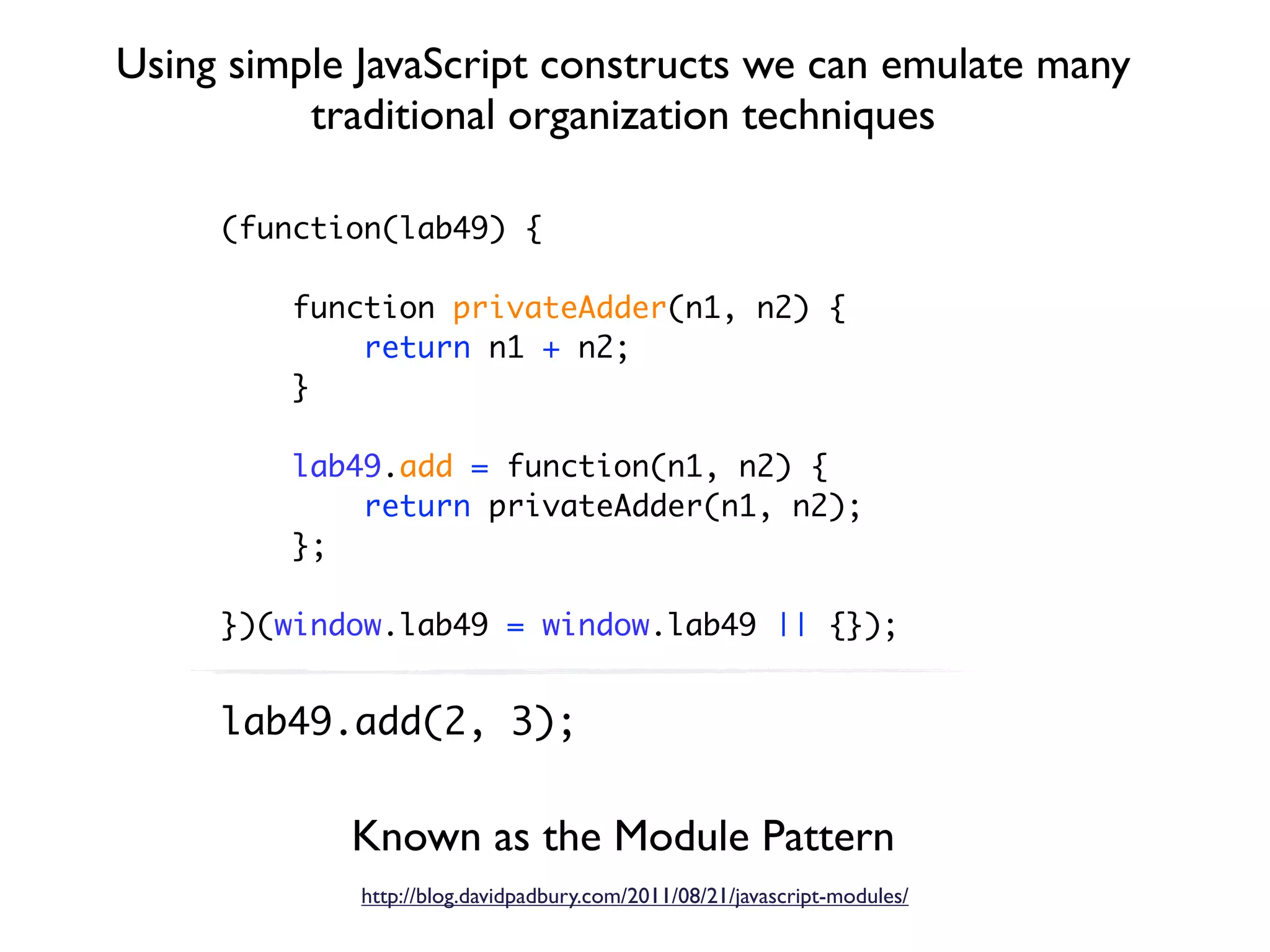
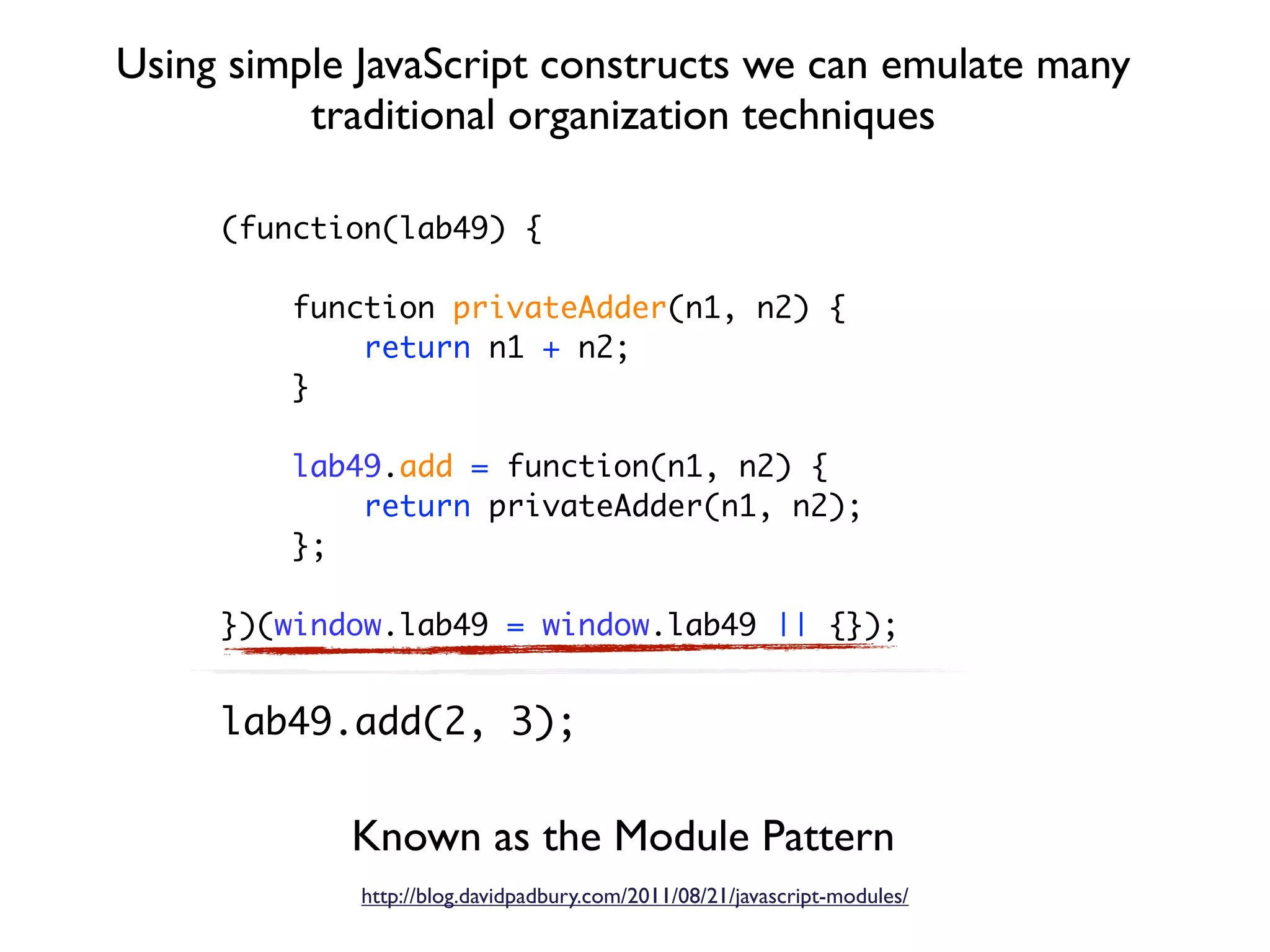
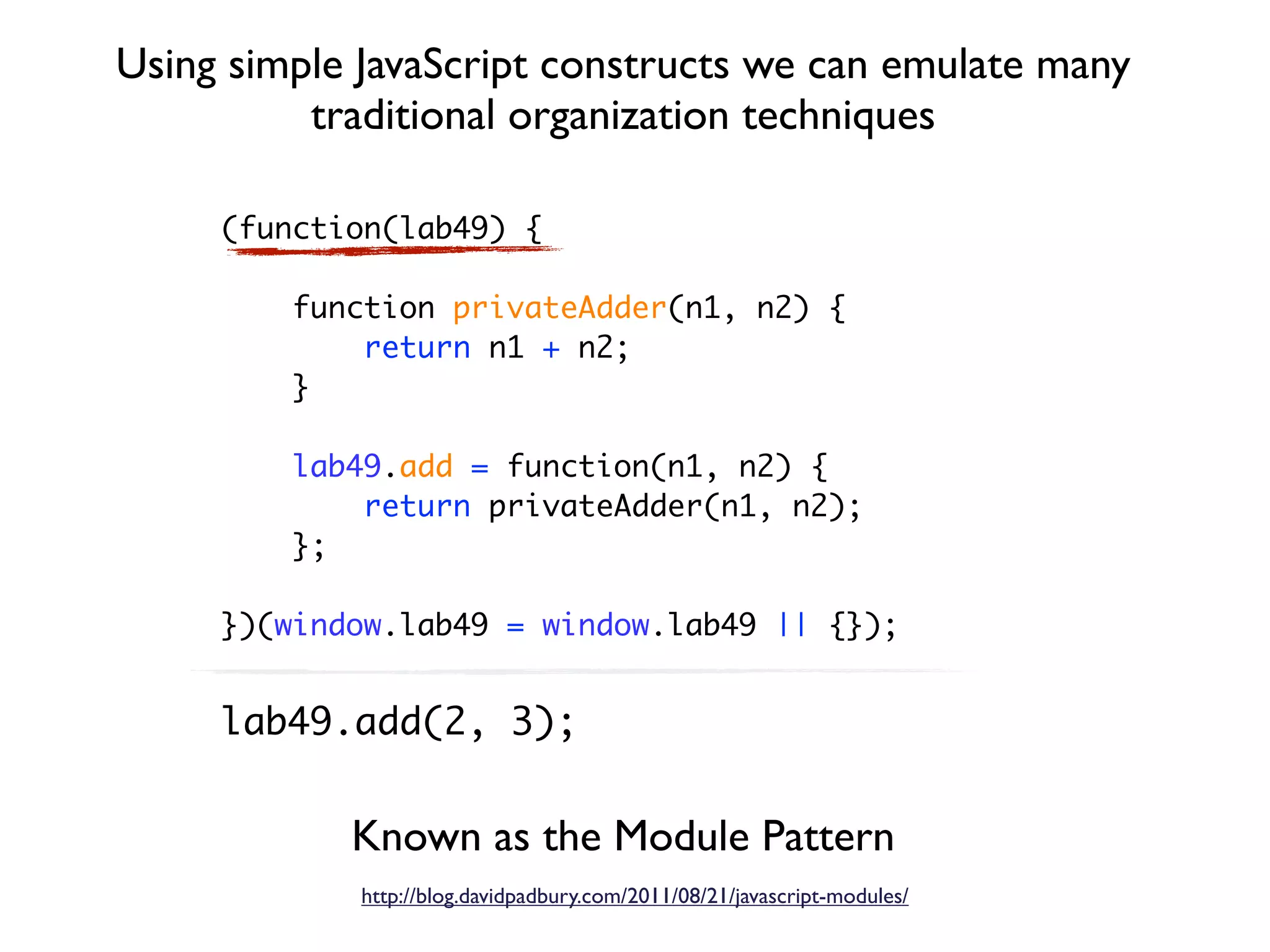
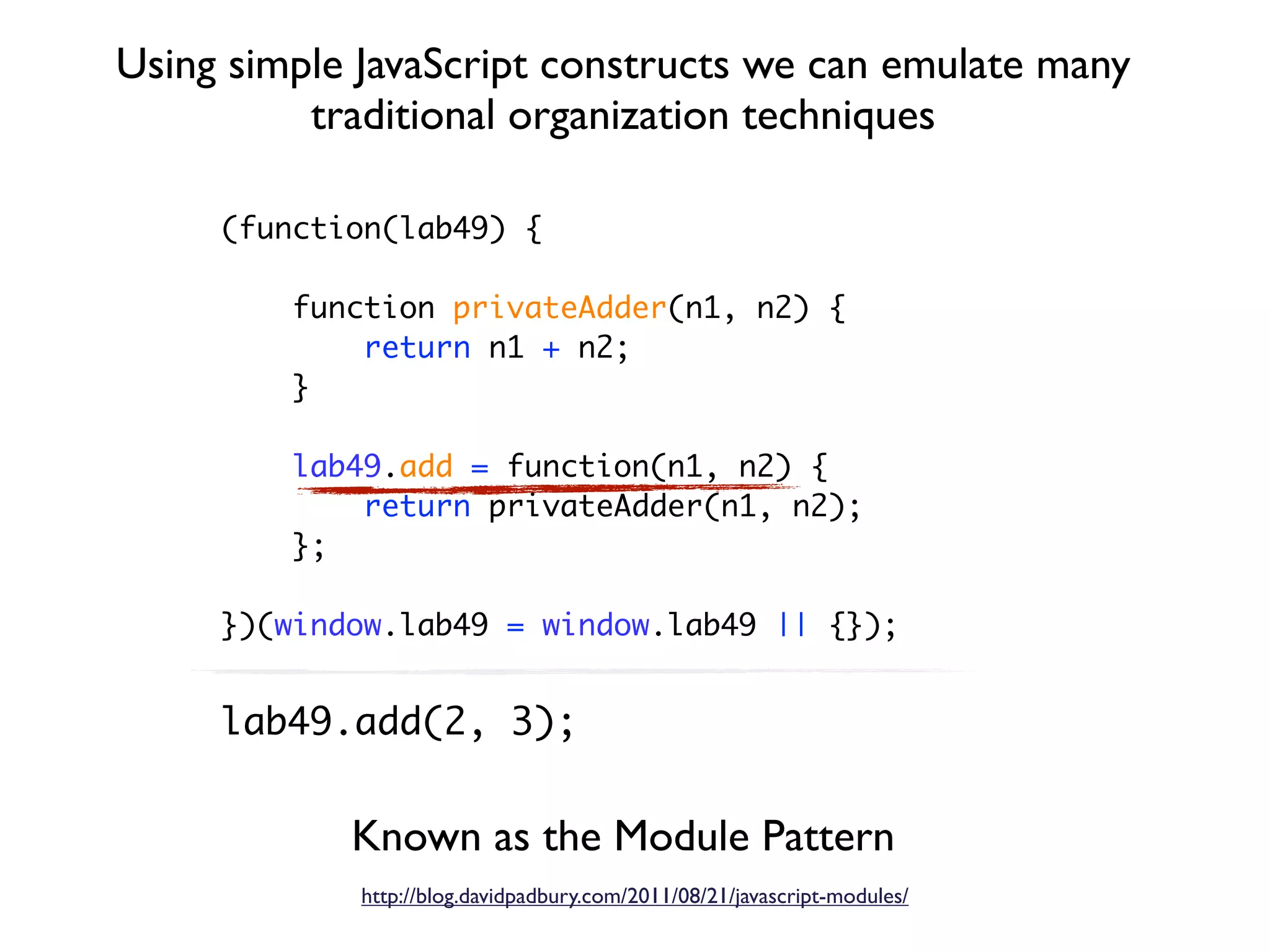

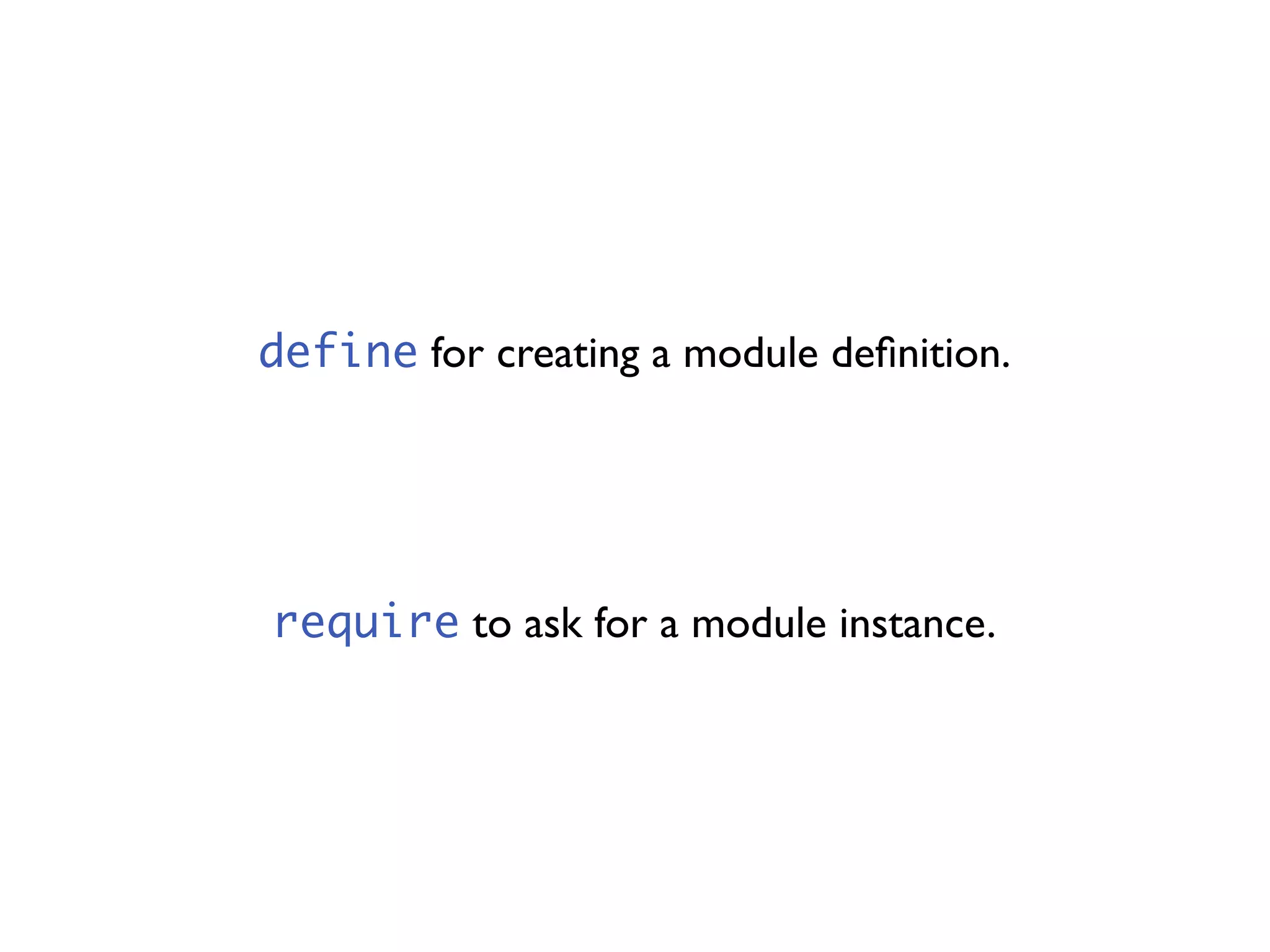
![define('calculator', function() {
return {
add: function(n1, n2) {
return n1 + n2;
}
}; Callback so modules can be loaded asynchronously
});
require(['calculator'], function(calculator) {
console.log( calculator.add(1, 2) ); // 3
});](https://image.slidesharecdn.com/html5-for-the-silverlight-guycopy-111107175217-phpapp02/75/HTML5-for-the-Silverlight-Guy-46-2048.jpg)
![define('math/adder', function() {
return {
add: function(n1, n2) {
return n1 + n2;
} Specify modules this module depends on
}
});
define('math/calculator', ['./adder'], function(adder) {
return {
add: function(n1, n2) {
return adder.add(n1, n2);
}
}; Loader passes instances of them
});](https://image.slidesharecdn.com/html5-for-the-silverlight-guycopy-111107175217-phpapp02/75/HTML5-for-the-Silverlight-Guy-47-2048.jpg)
![Loaders can assume module names from files
// math/adder.js
define(function() {
return {
add: function(n1, n2) {
return n1 + n2;
}
}
});
// math/calculator.js
define(['./adder'], function(adder) {
return {
add: function(n1, n2) {
return adder.add(n1, n2);
}
};
});](https://image.slidesharecdn.com/html5-for-the-silverlight-guycopy-111107175217-phpapp02/75/HTML5-for-the-Silverlight-Guy-48-2048.jpg)
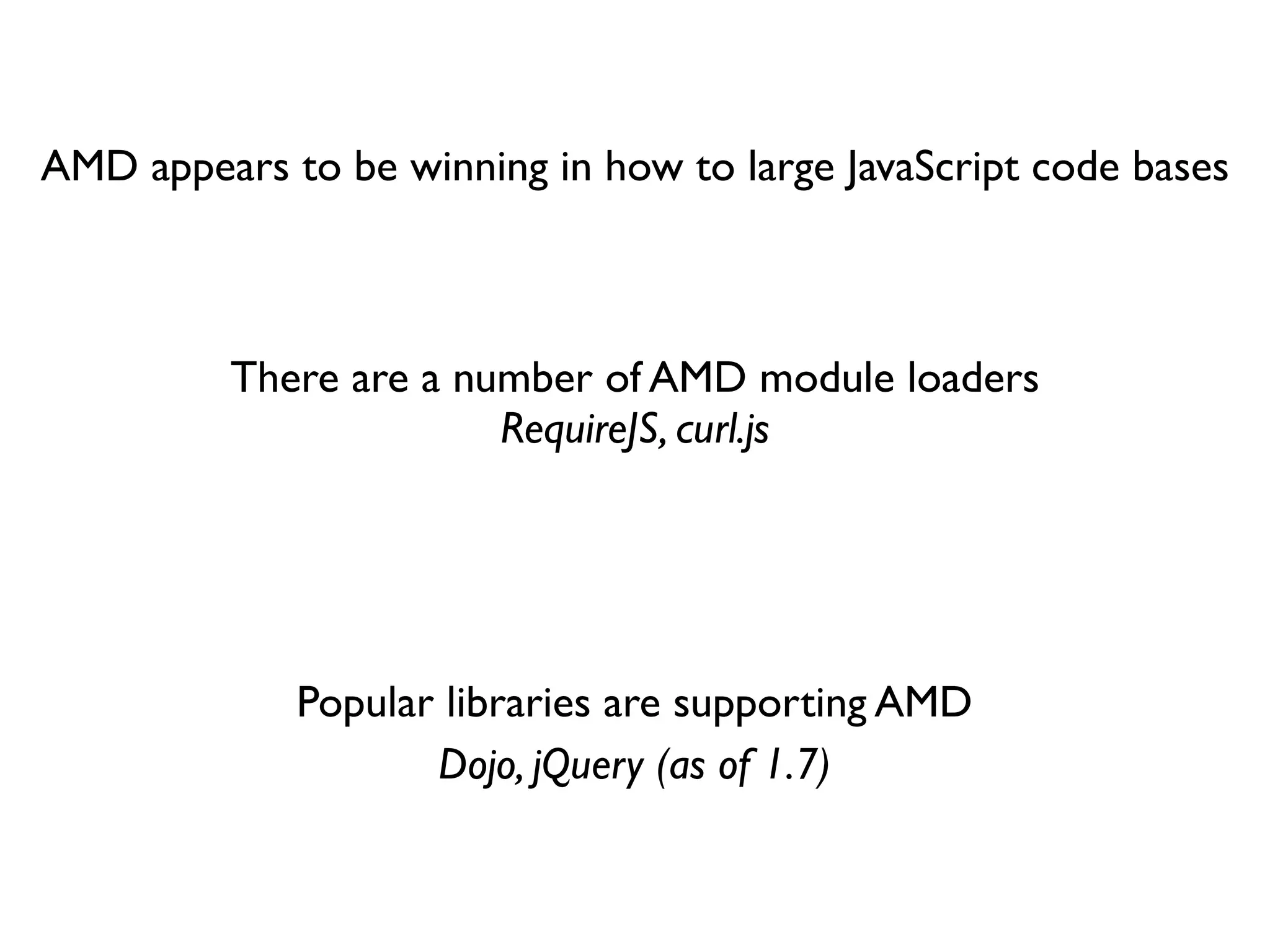

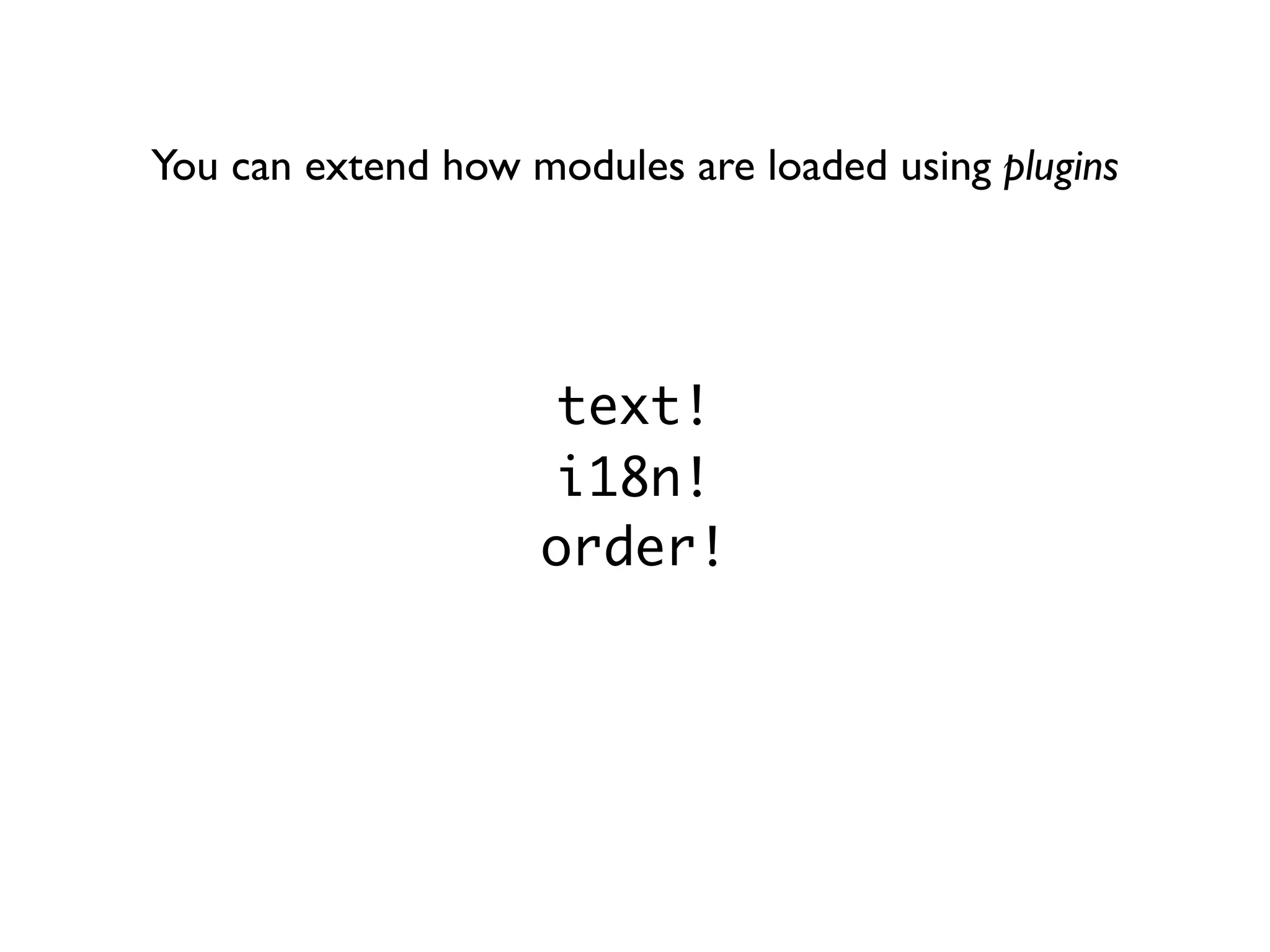
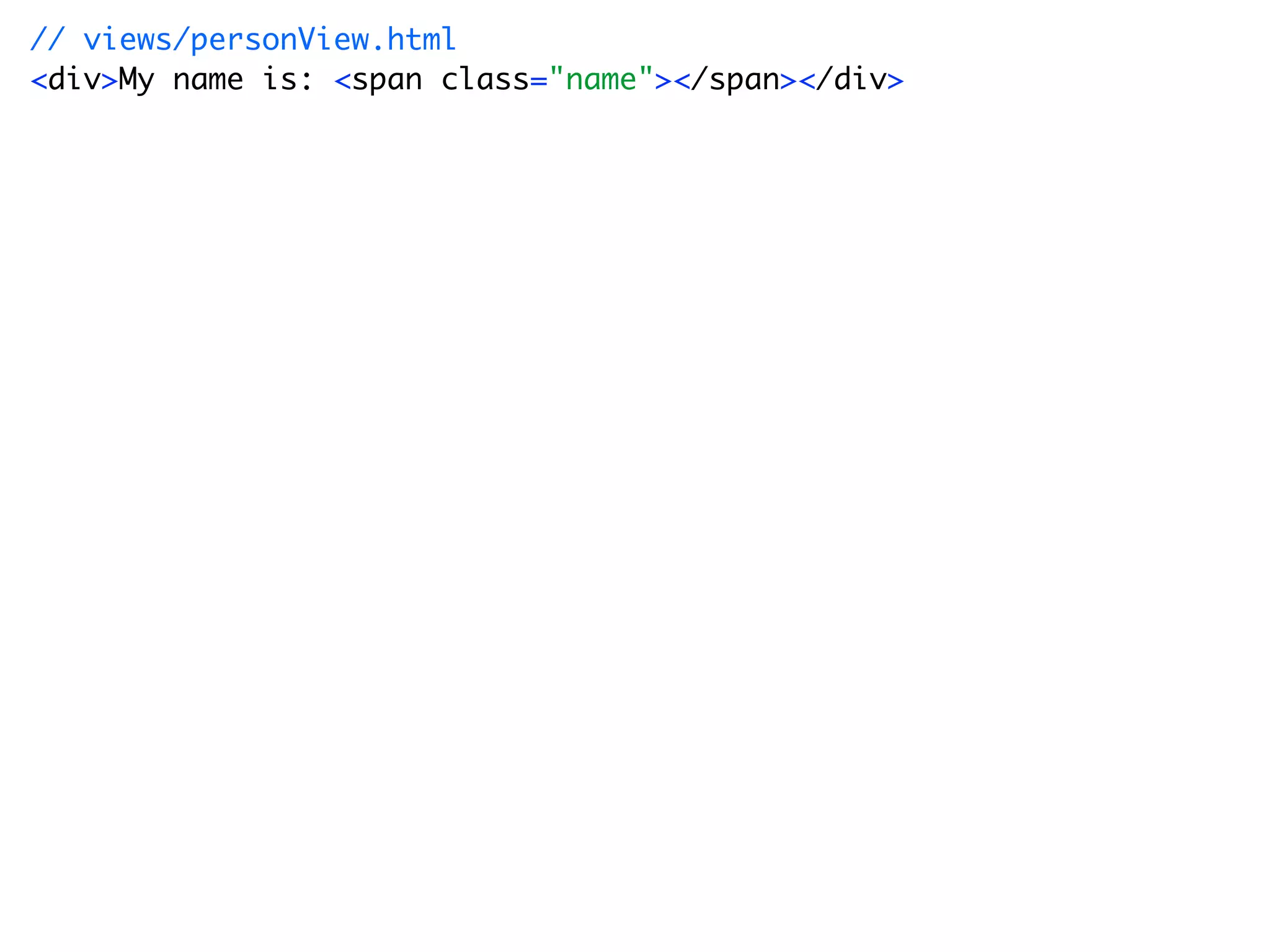
![// views/personView.html
<div>My name is: <span class="name"></span></div>
// views/personView.js
define(['text!./personView.html'], function(tmpl) {
function PersonView(options) {
var el = $(options.el),
Ask for content with the text
name = options.name; plugin and we get a String
el.html(tmpl).find('.name').text(name);
}
return PersonView;
});](https://image.slidesharecdn.com/html5-for-the-silverlight-guycopy-111107175217-phpapp02/75/HTML5-for-the-Silverlight-Guy-53-2048.jpg)
![// views/personView.html
<div>My name is: <span class="name"></span></div>
// views/personView.js
define(['text!./personView.html'], function(tmpl) {
function PersonView(options) {
var el = $(options.el),
Ask for content with the text
name = options.name; plugin and we get a String
el.html(tmpl).find('.name').text(name);
}
return PersonView;
});
// index.html
<div id="person"></div>
<script>
require(['views/personView'], function(PersonView) {
var personView = new PersonView({
el: $('#person'), name: 'David'
});
});
</script>](https://image.slidesharecdn.com/html5-for-the-silverlight-guycopy-111107175217-phpapp02/75/HTML5-for-the-Silverlight-Guy-54-2048.jpg)
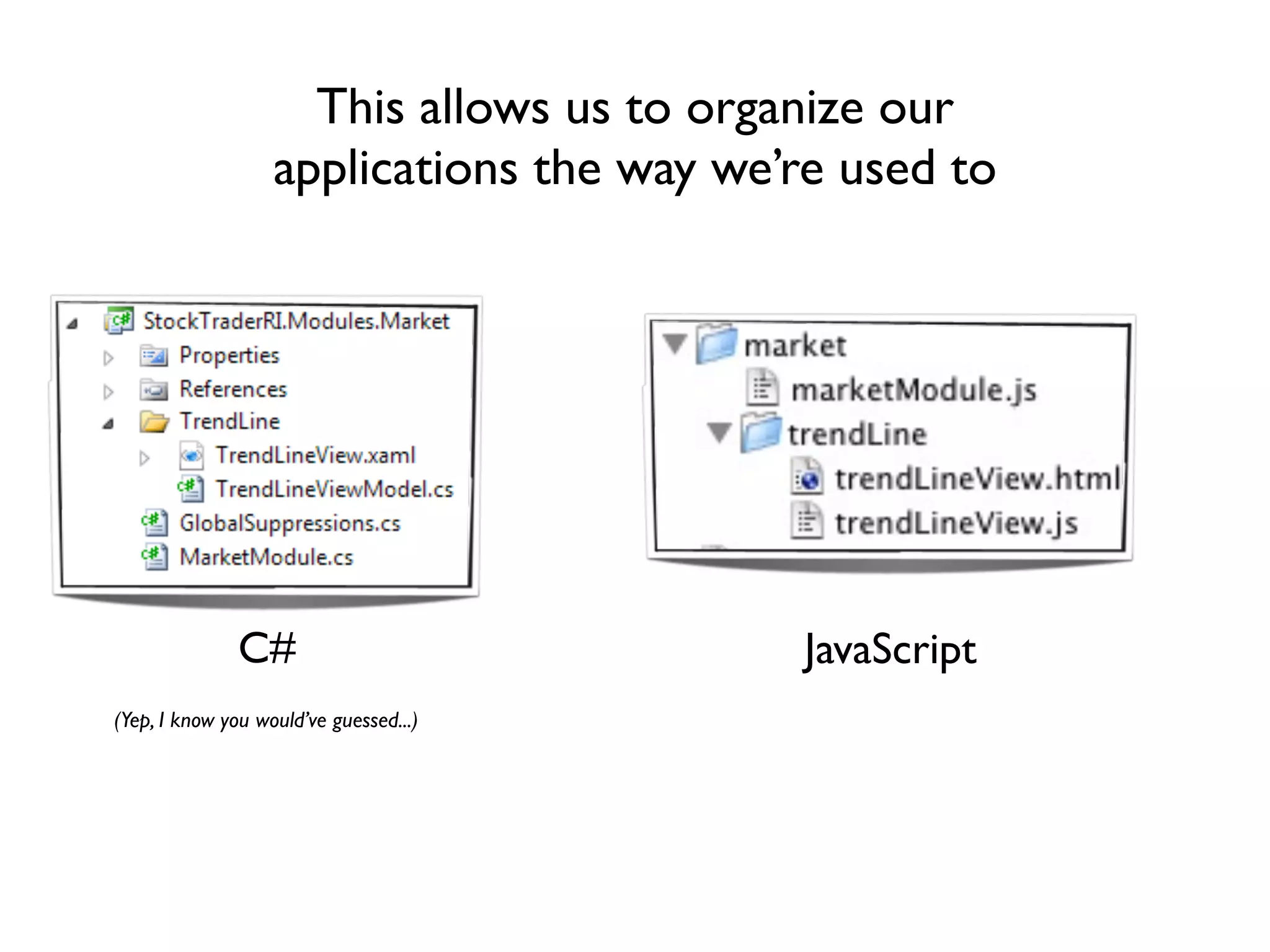

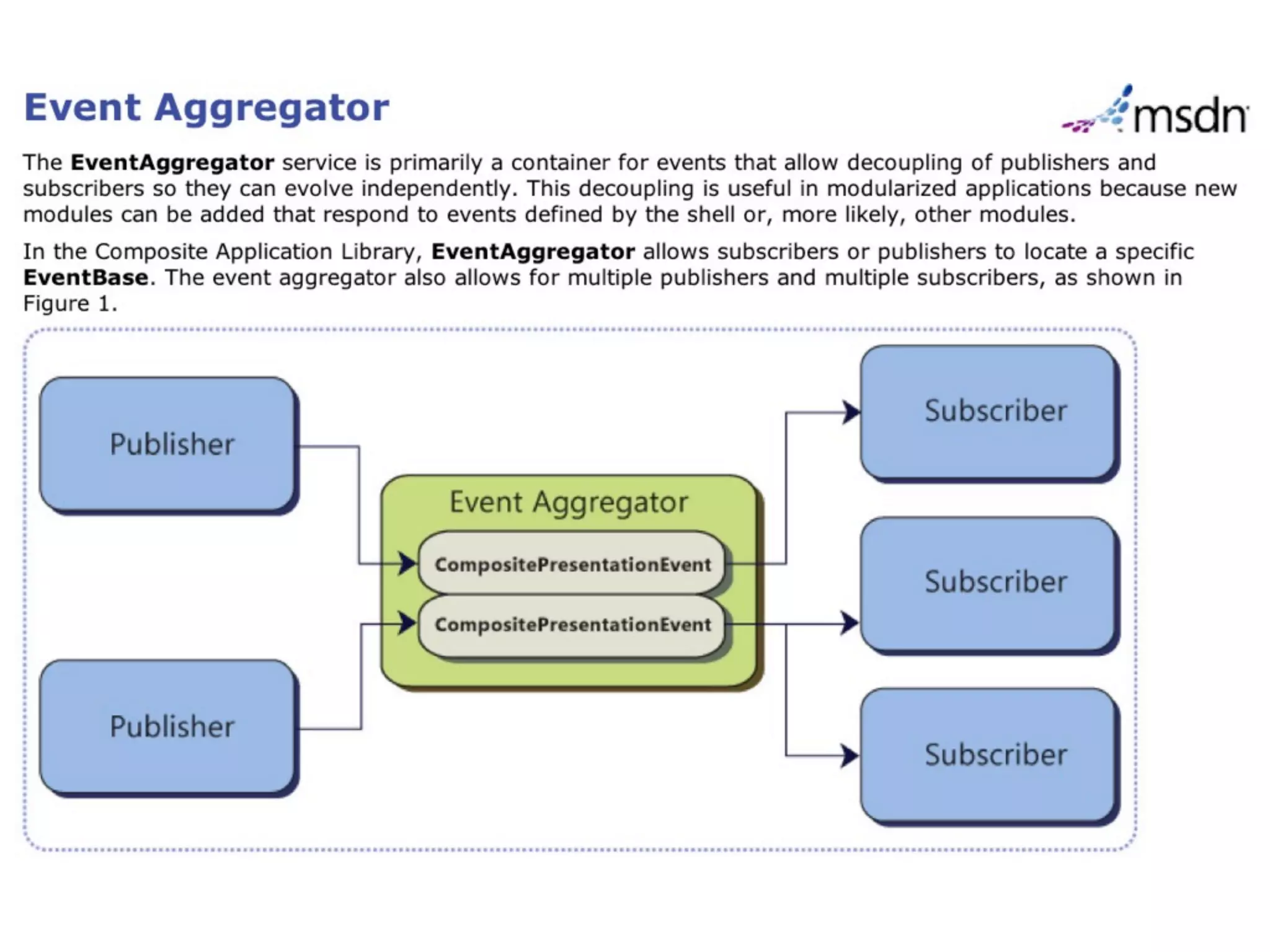
![require(['pubsub'], function(PubSub) {
var bus = new PubSub();
bus.sub('say', function(msg) {
console.log('Subscriber 1 says: ' + msg);
});
bus.sub('say', function(msg) {
console.log('Subscriber 2 says: ' + msg);
});
bus.pub('say', 'Nope!');
// Subscriber 1 says: Nope!
// Subscriber 2 says: Nope!
});](https://image.slidesharecdn.com/html5-for-the-silverlight-guycopy-111107175217-phpapp02/75/HTML5-for-the-Silverlight-Guy-58-2048.jpg)
![“Dictionary” to hold topic to
define('pubsub', function() { list of subscriptions
function PubSub() {
this.subs = {};
}
Create topic list if none exists
PubSub.prototype = {
sub: function(topic, fn) {
var topicSubs = (this.subs[topic] = this.subs[topic] || []);
topicSubs.push(fn);
},
pub: function(topic, data) {
var topicSubs = this.subs[topic] || [];
topicSubs.forEach(function(fn) {
fn(data);
});
}
}; Call each subscriber for topic
return PubSub;
});
(This is is a horribly crap implementation - DON’T EVER USE IT!)](https://image.slidesharecdn.com/html5-for-the-silverlight-guycopy-111107175217-phpapp02/75/HTML5-for-the-Silverlight-Guy-59-2048.jpg)

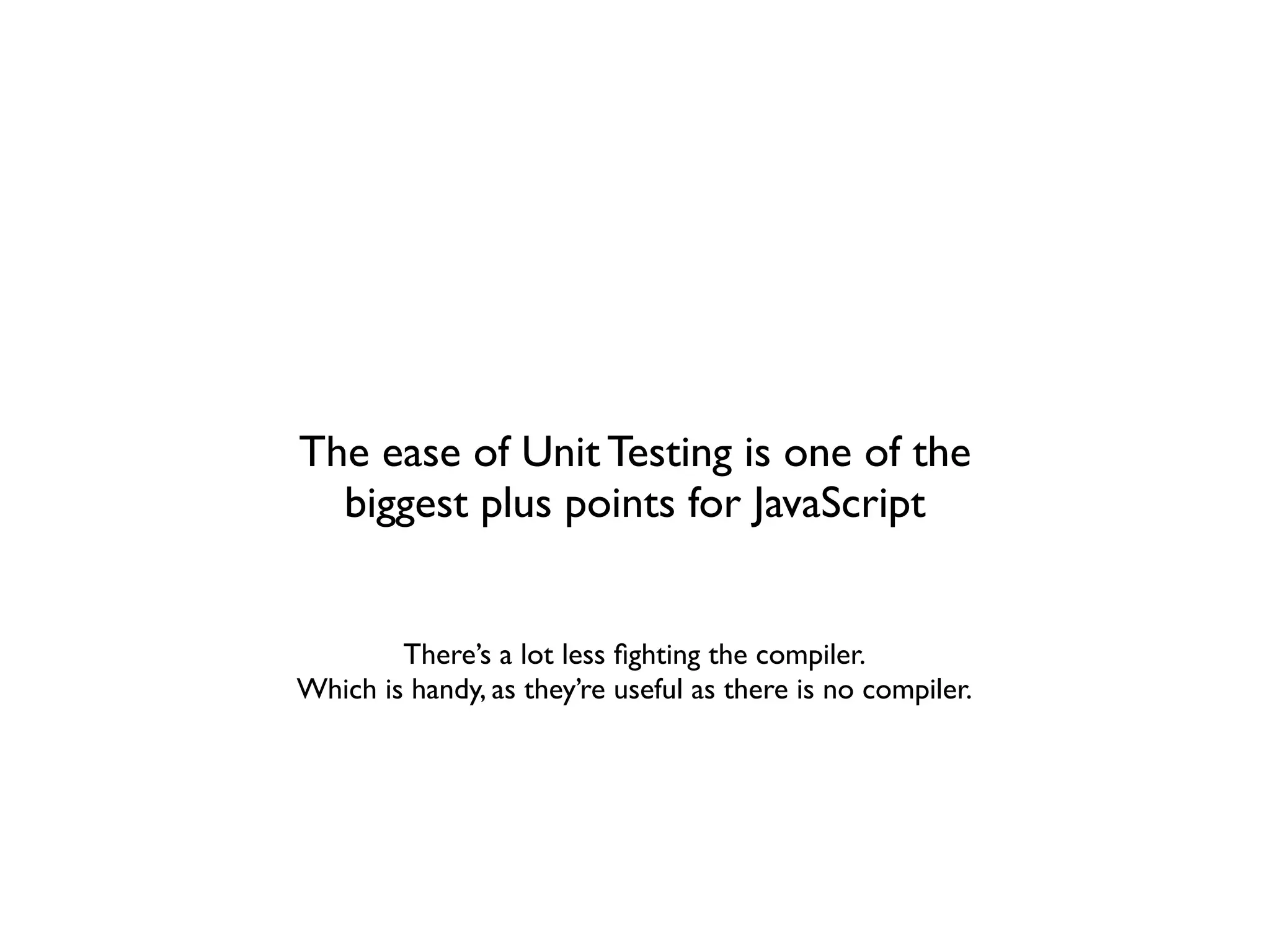

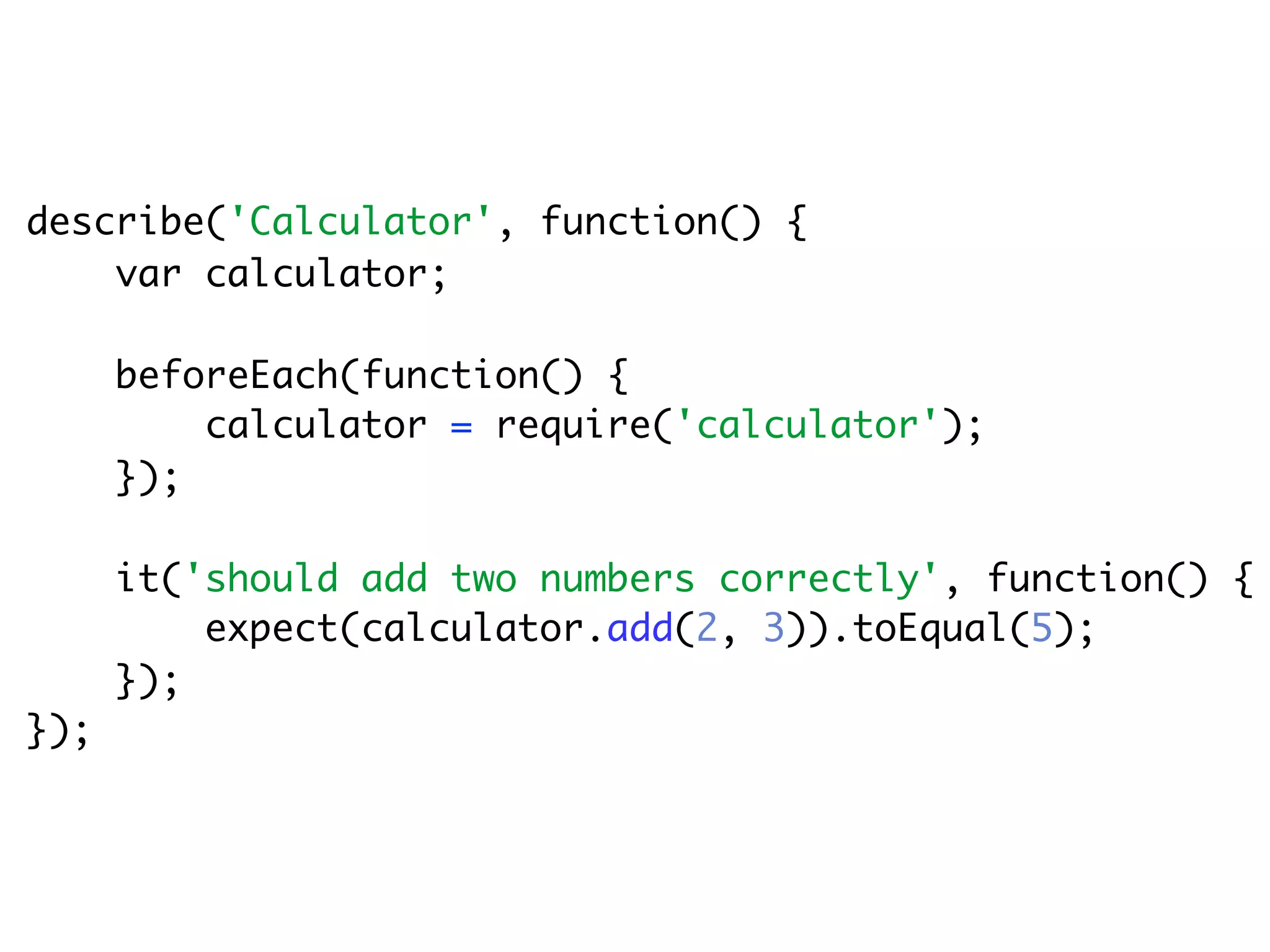


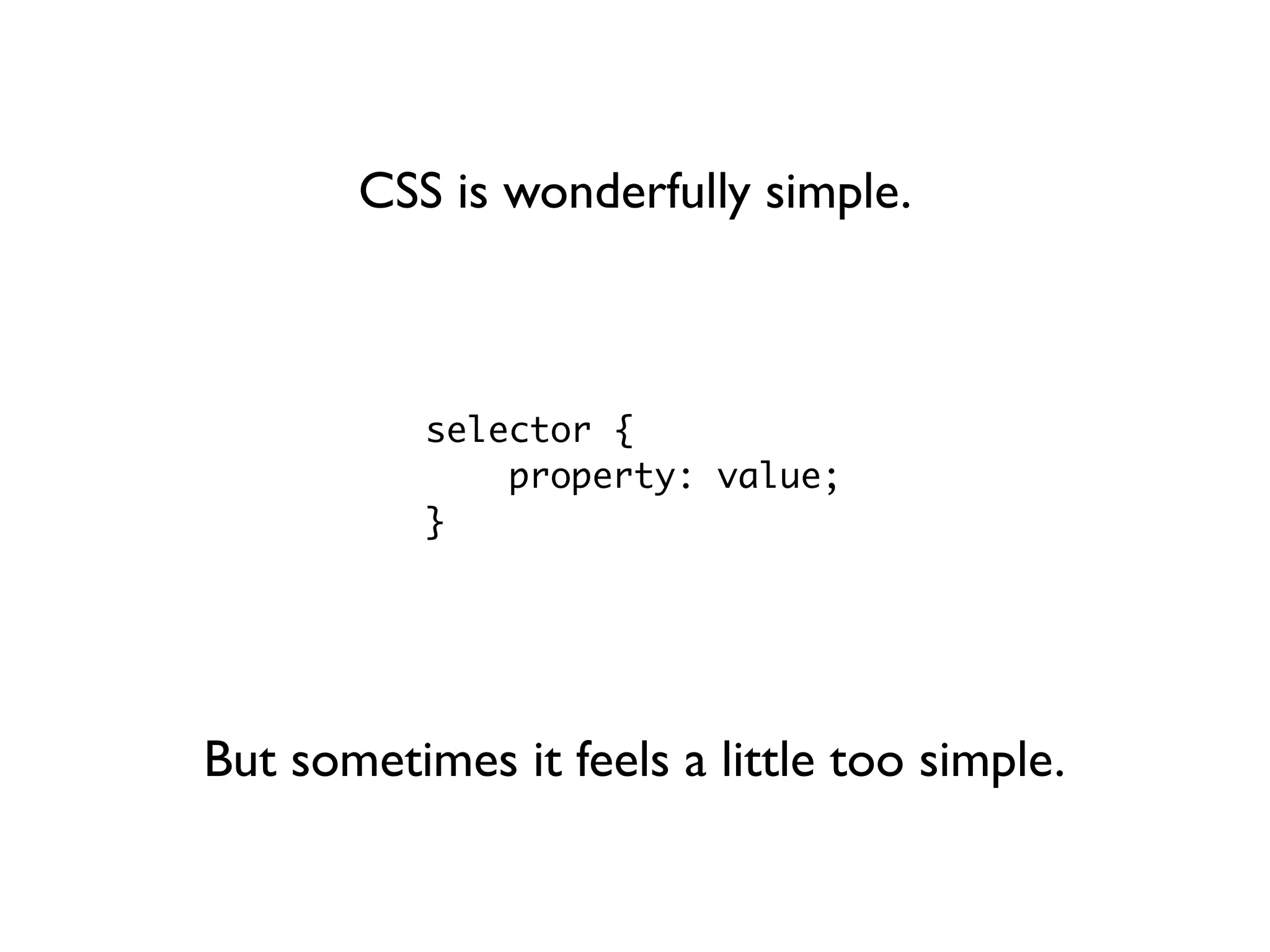
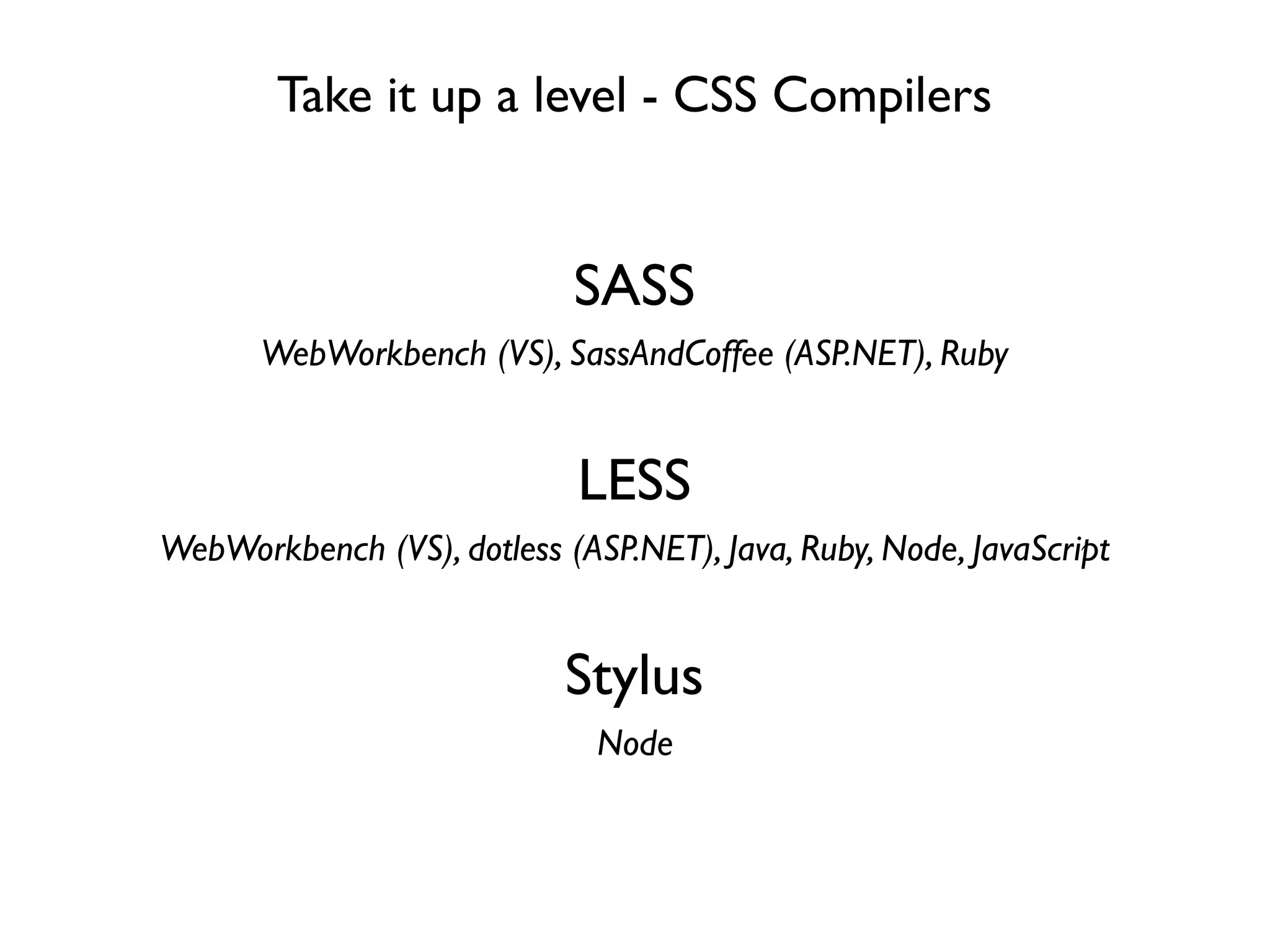
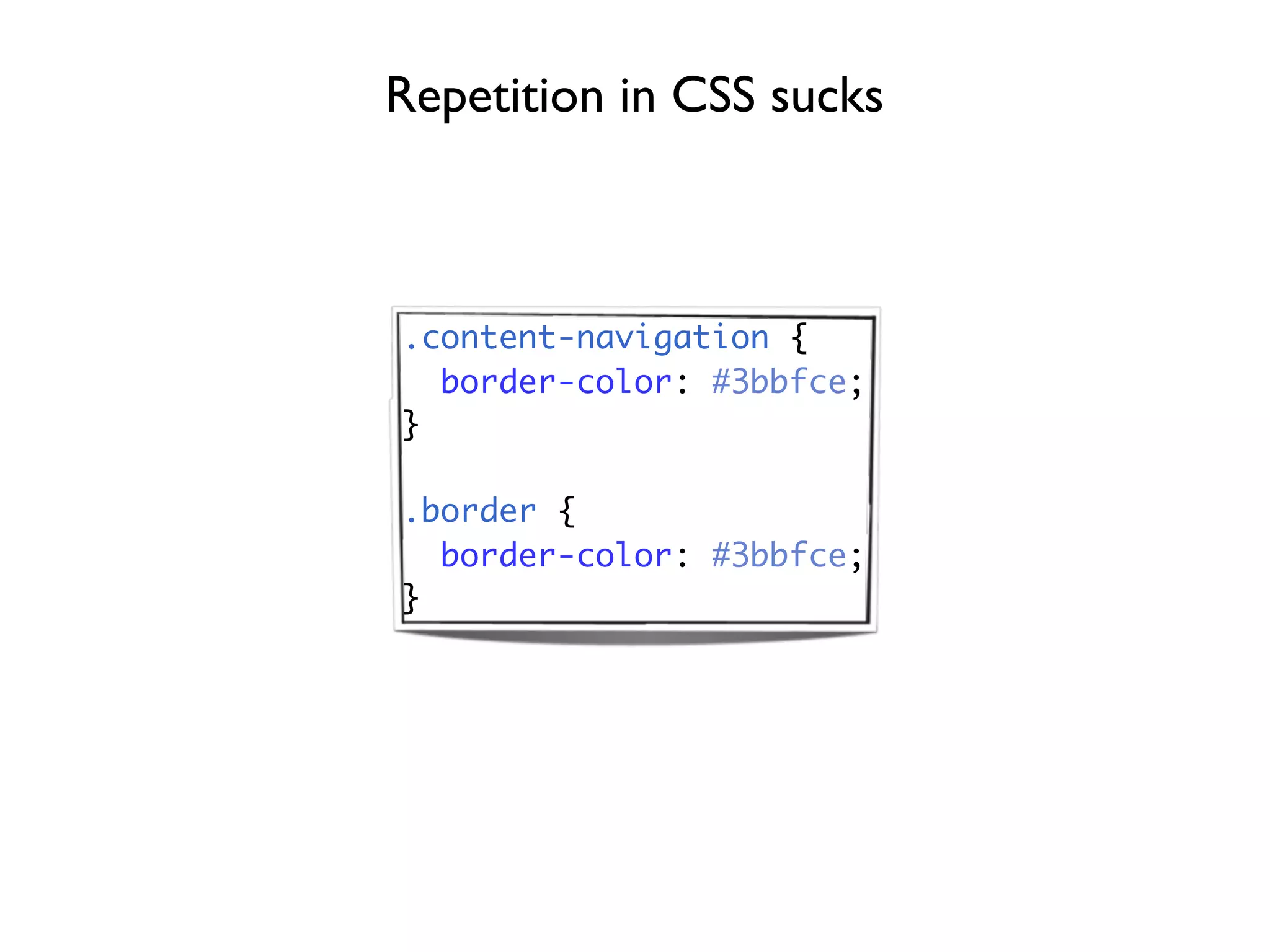
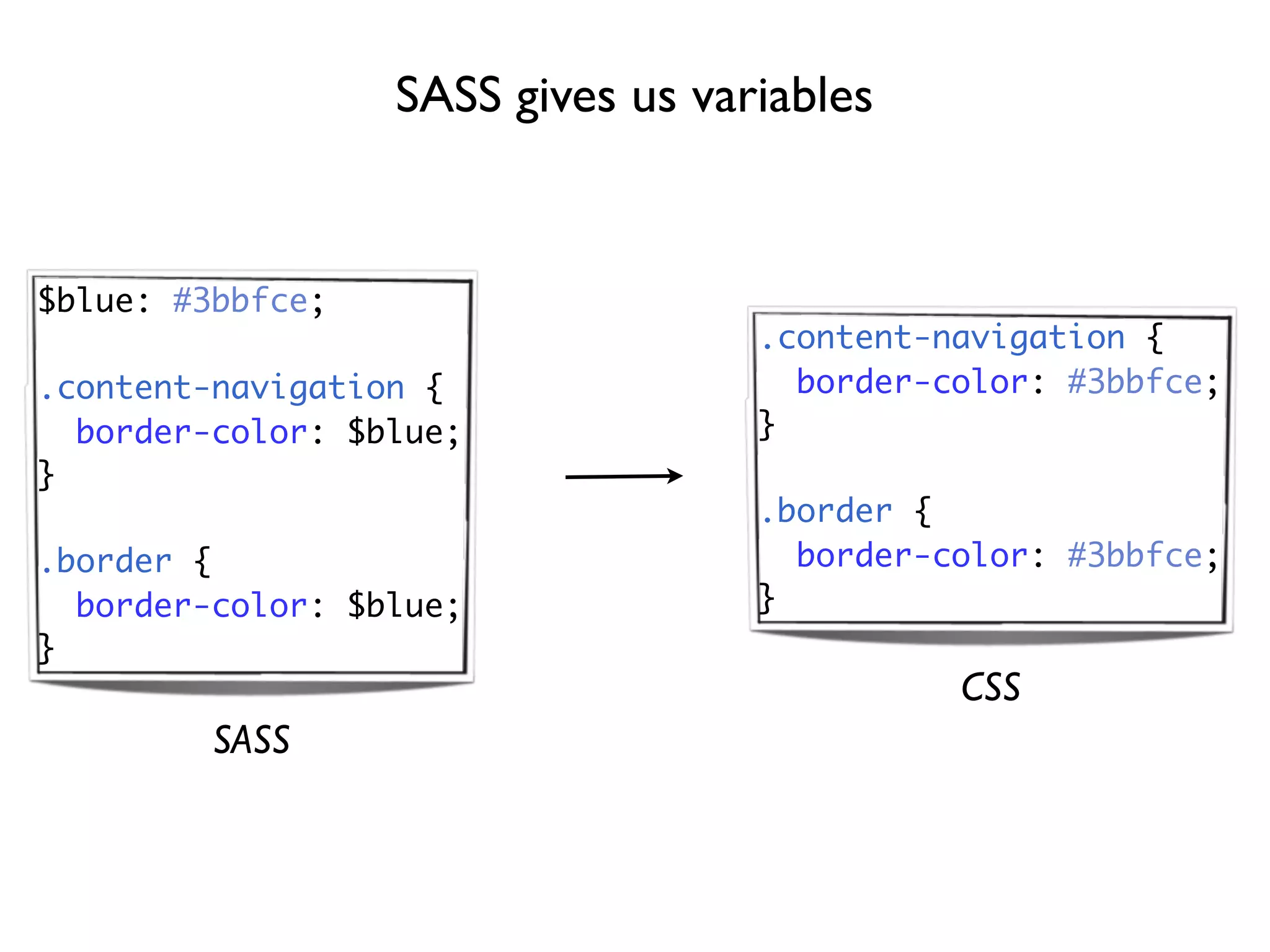
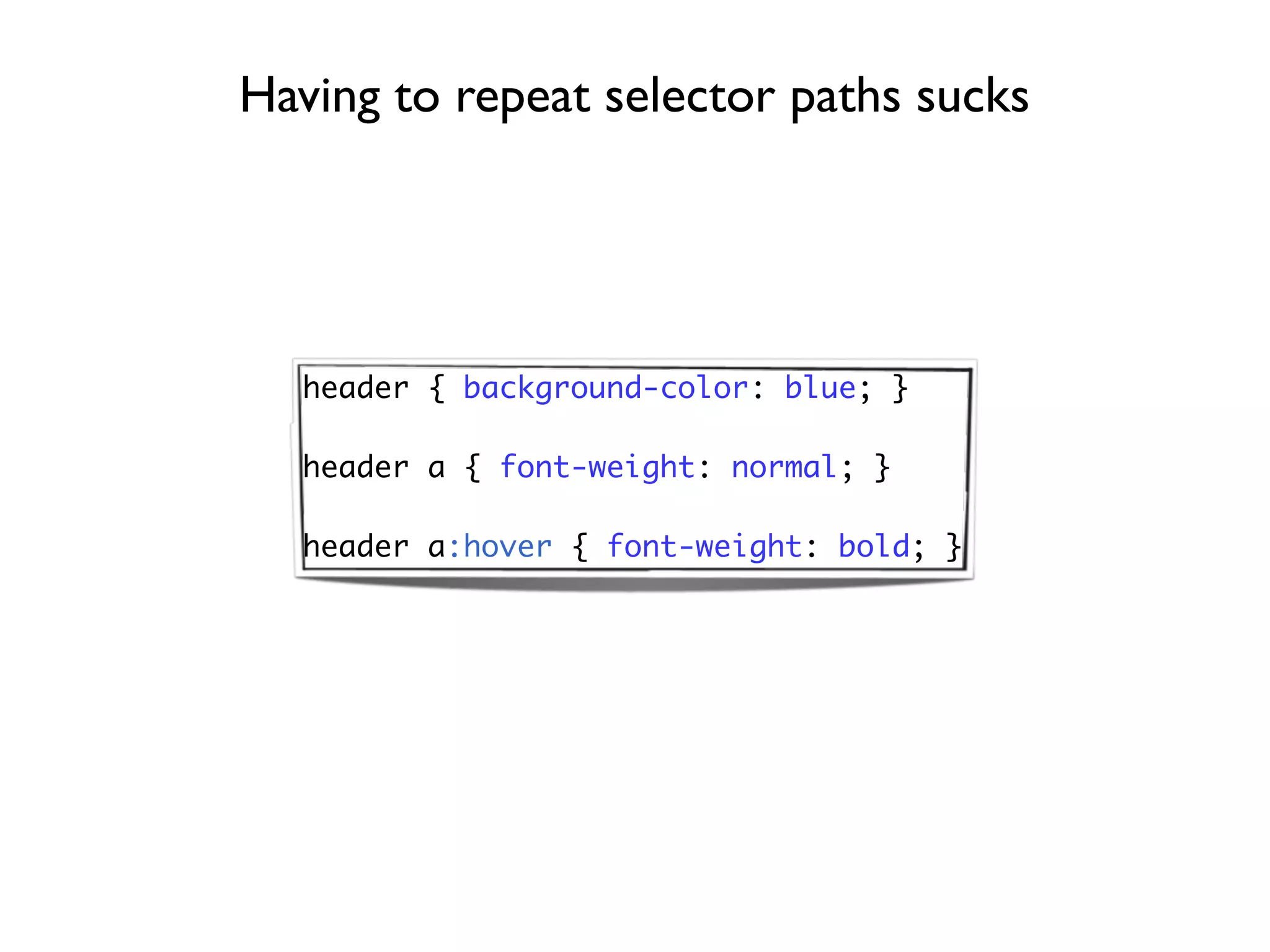
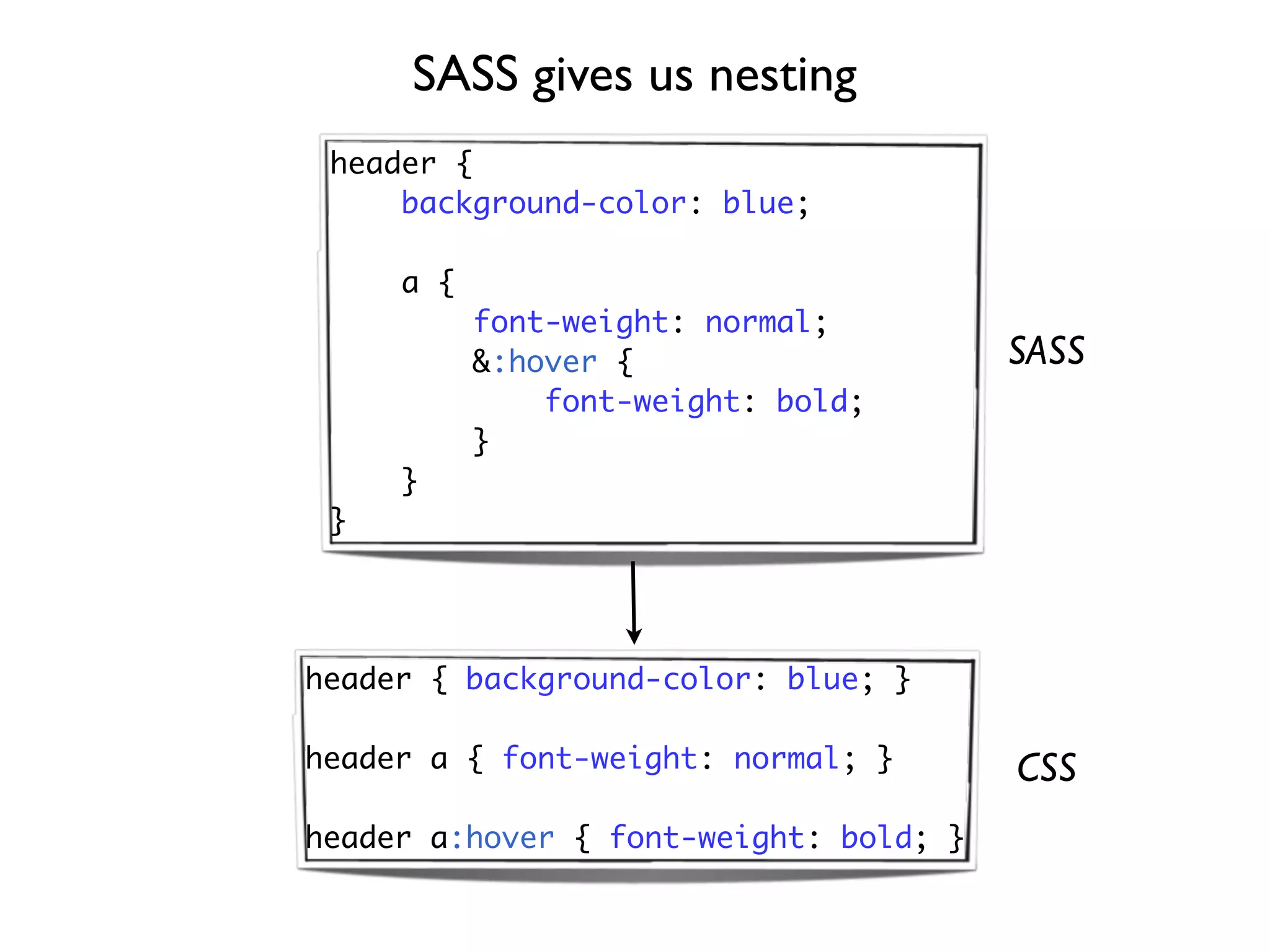
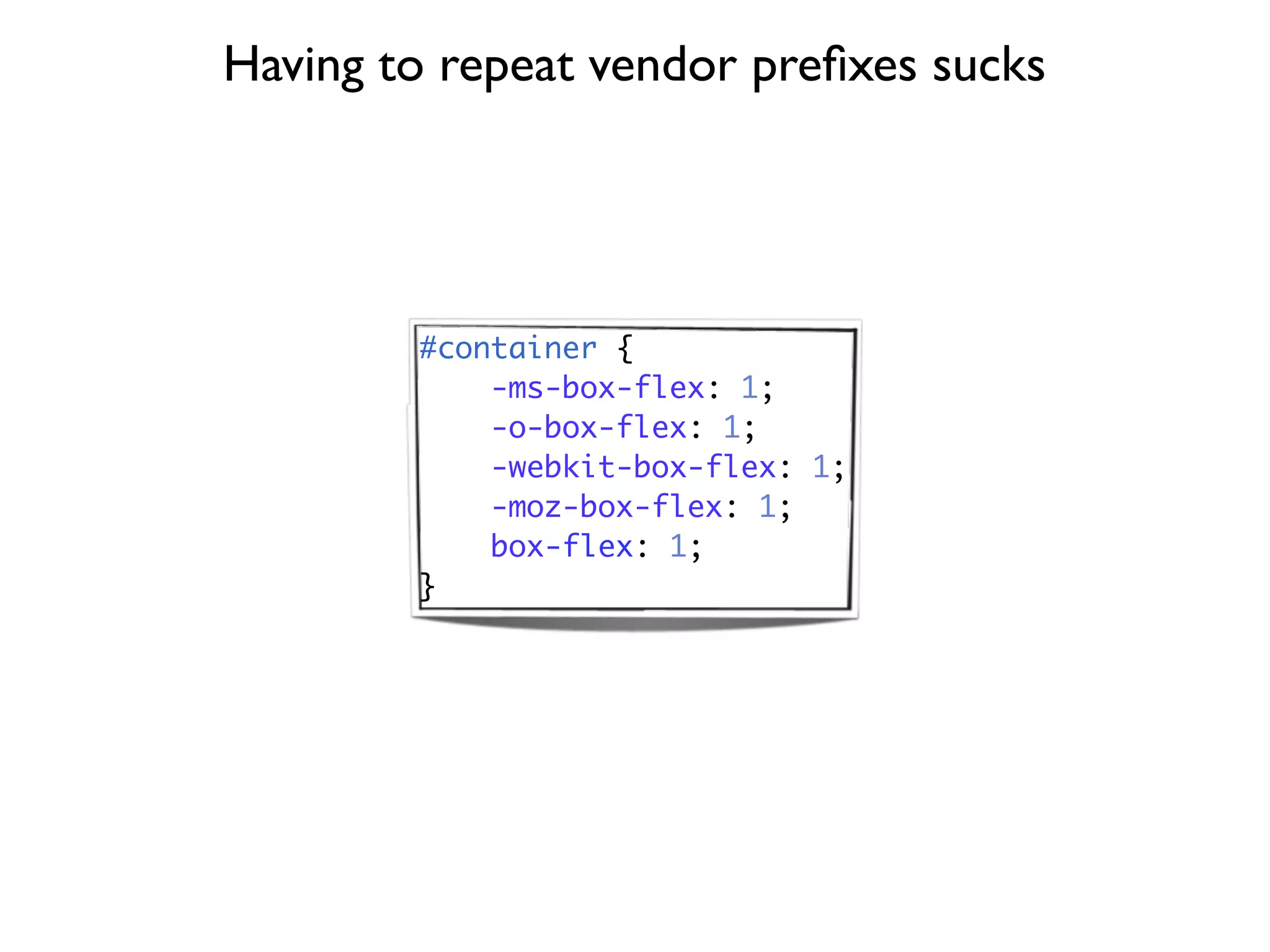
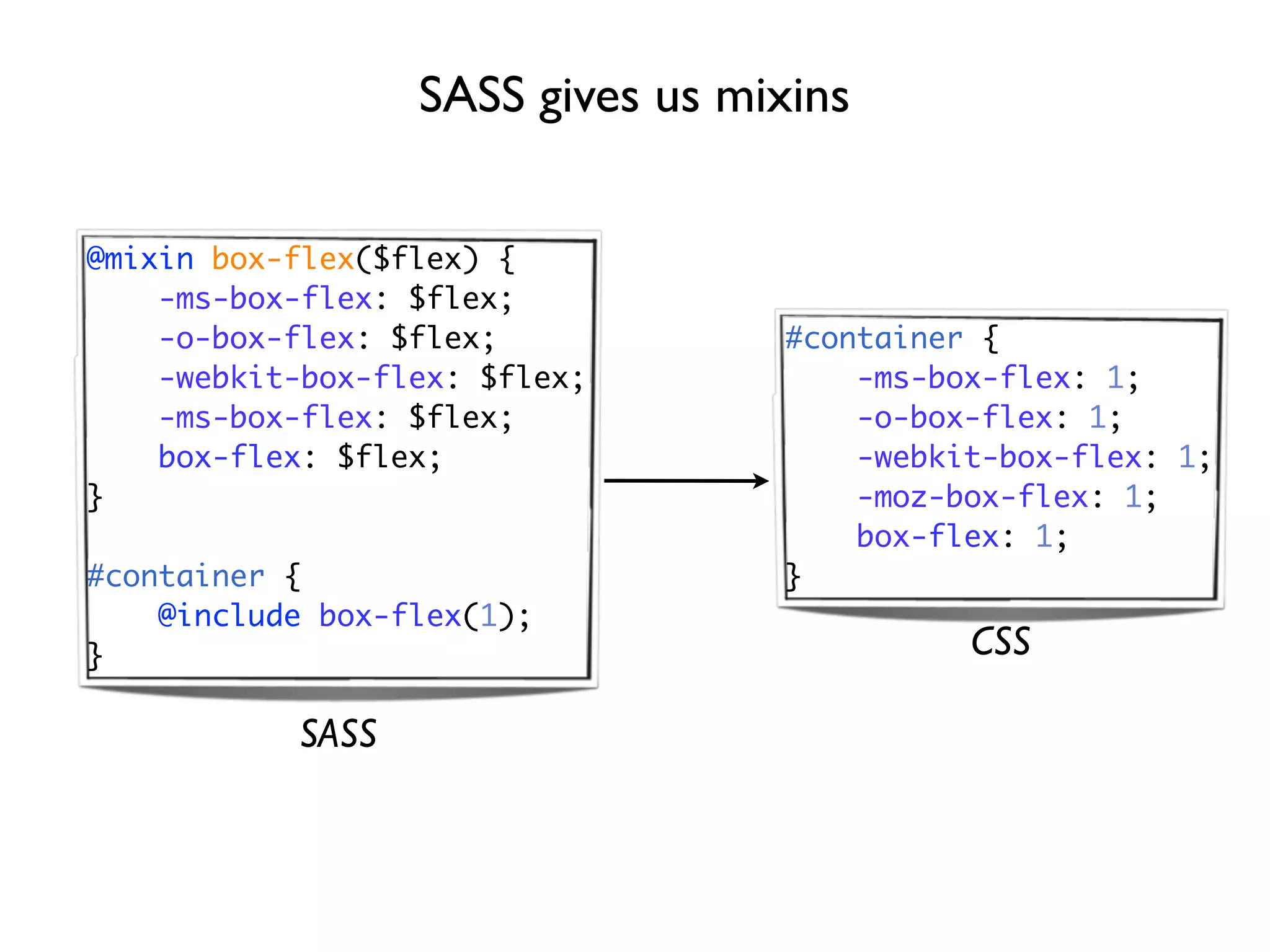
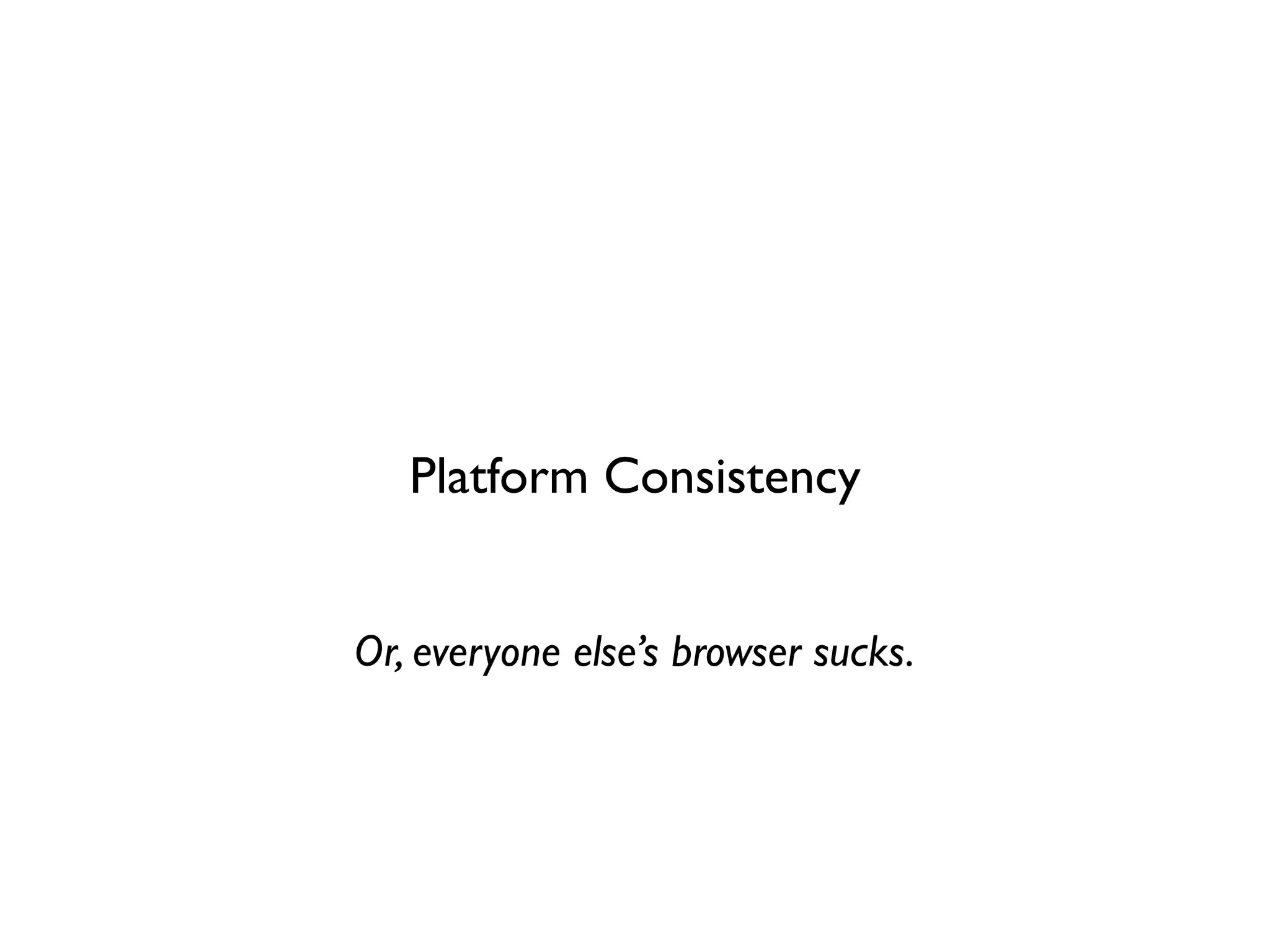
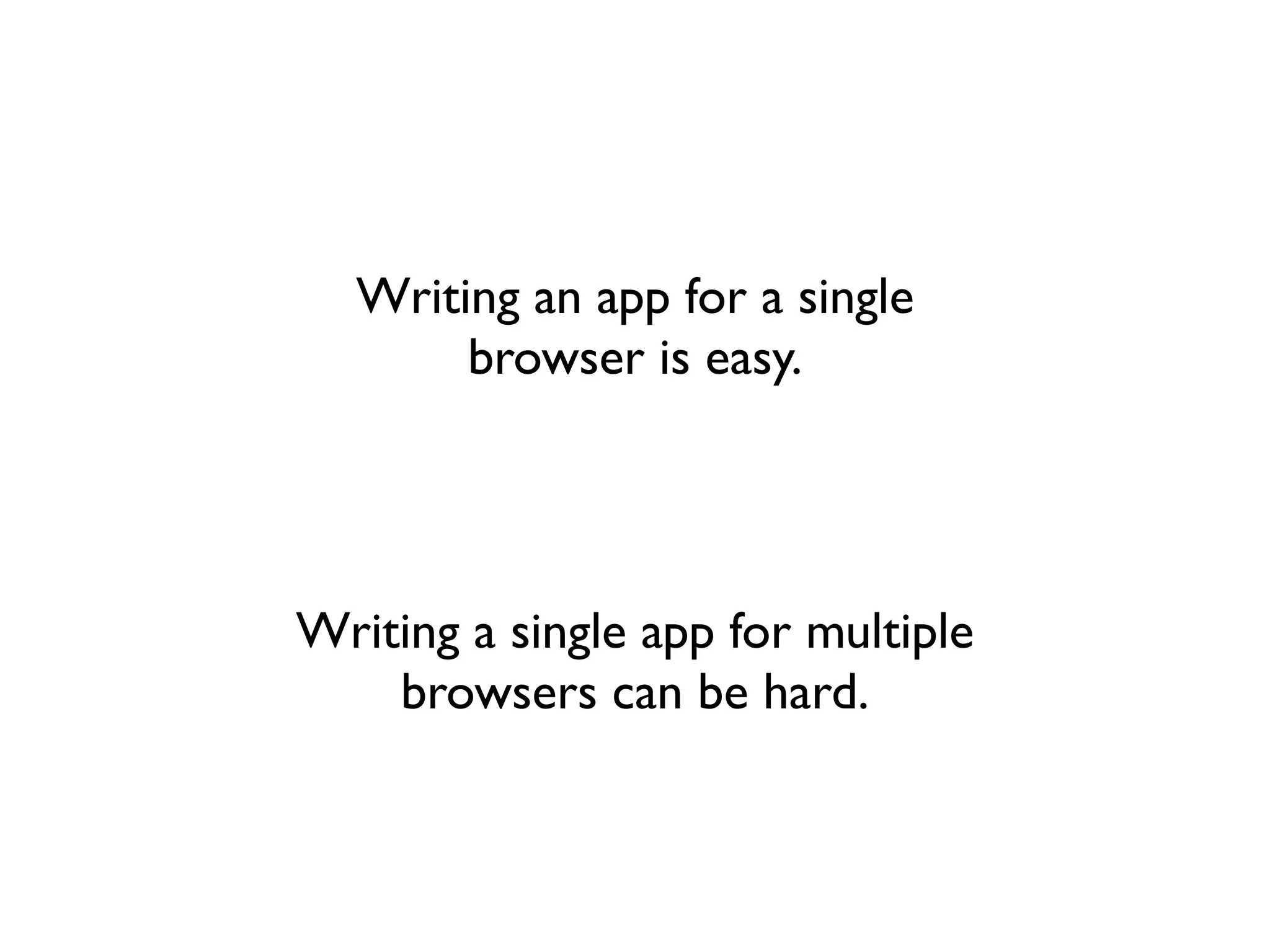
![Just ask it
function hasCssProp(prop) {
var el = document.createElement('div'),
style = el.style;
return typeof style[prop] == 'string';
}
// In IE9, Chrome, Firefox, etc...
hasCssProp('borderRadius'); // true
// In IE6, IE7, IE8, etc...
hasCssProp('borderRadius'); // false](https://image.slidesharecdn.com/html5-for-the-silverlight-guycopy-111107175217-phpapp02/75/HTML5-for-the-Silverlight-Guy-76-2048.jpg)
